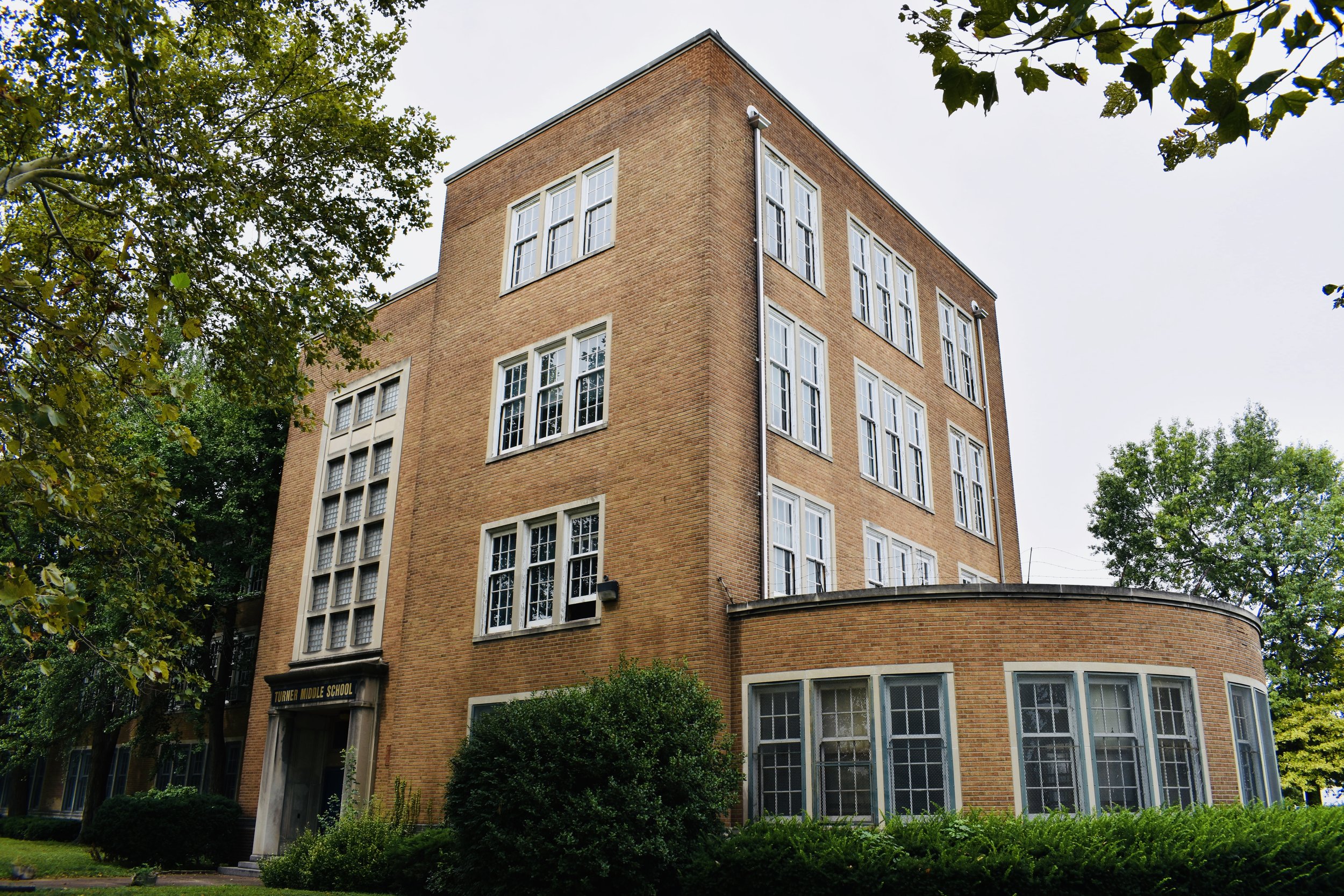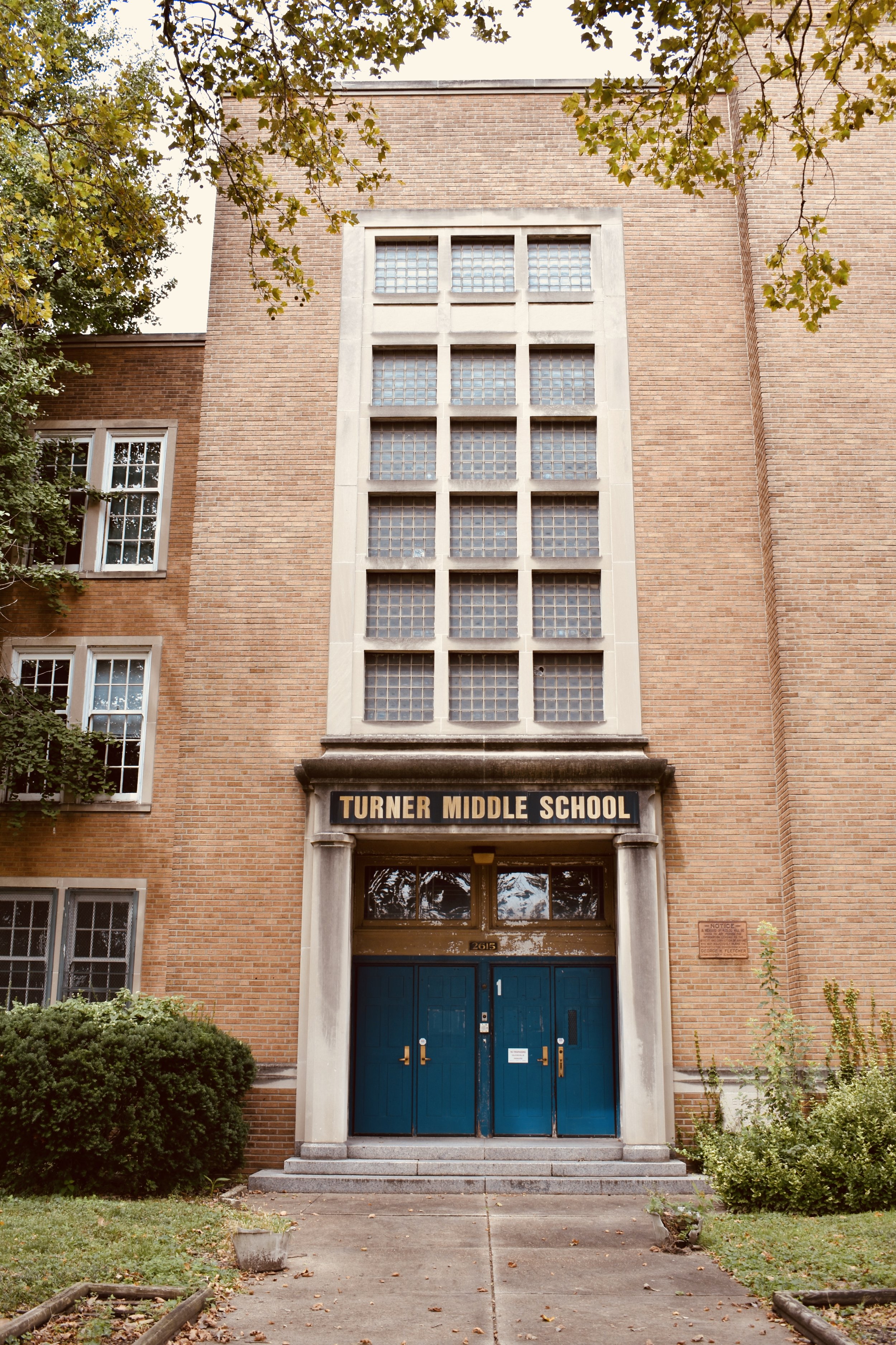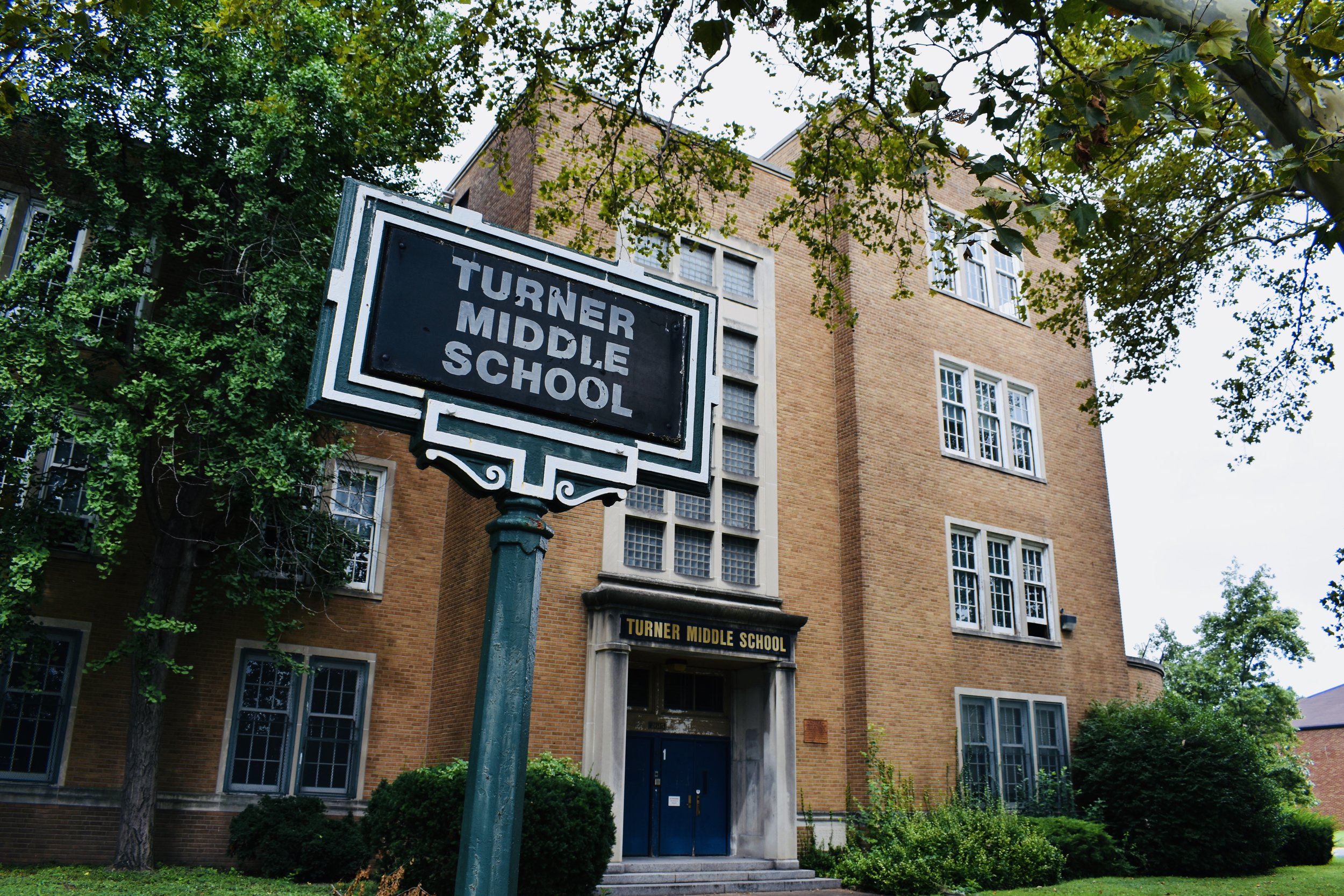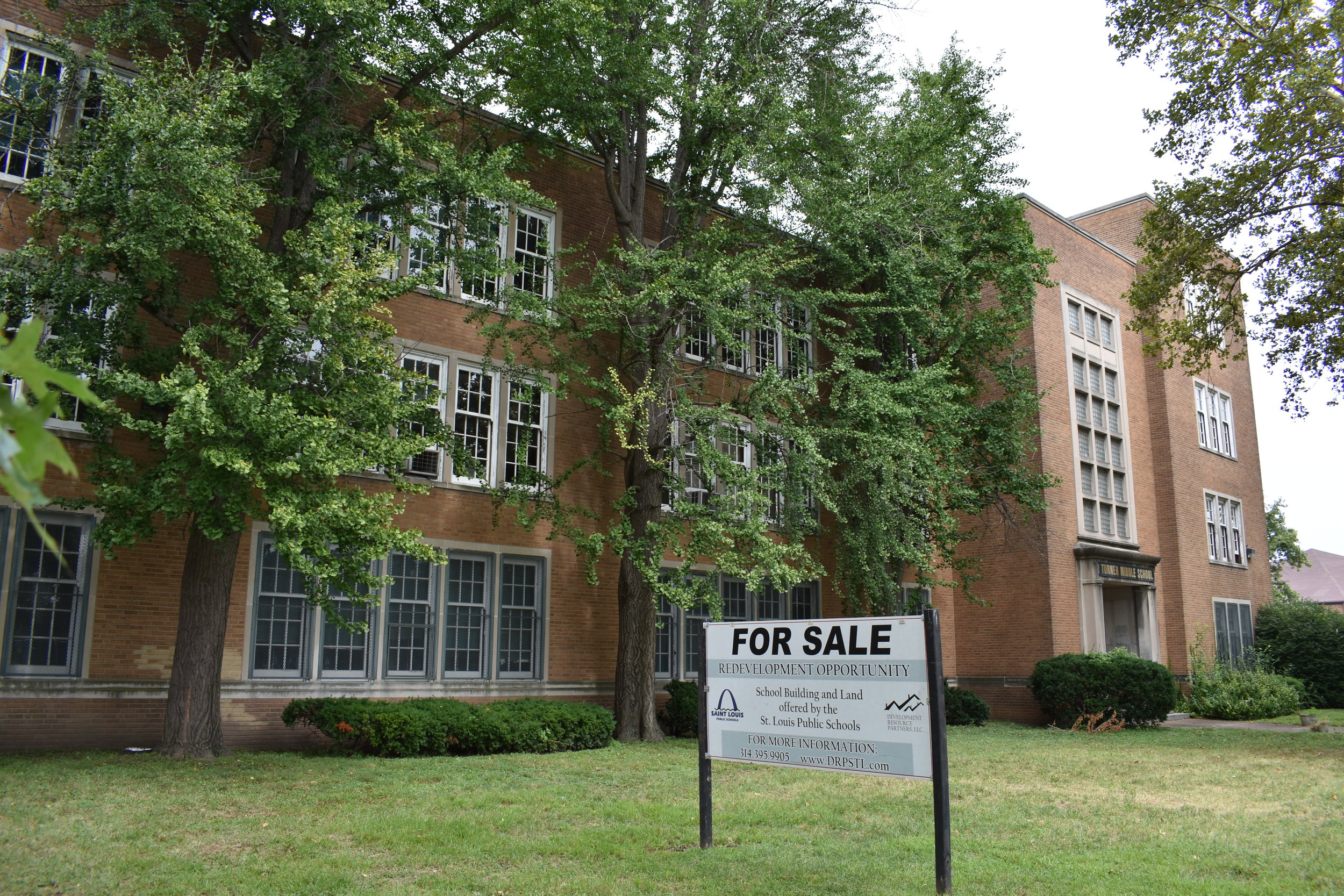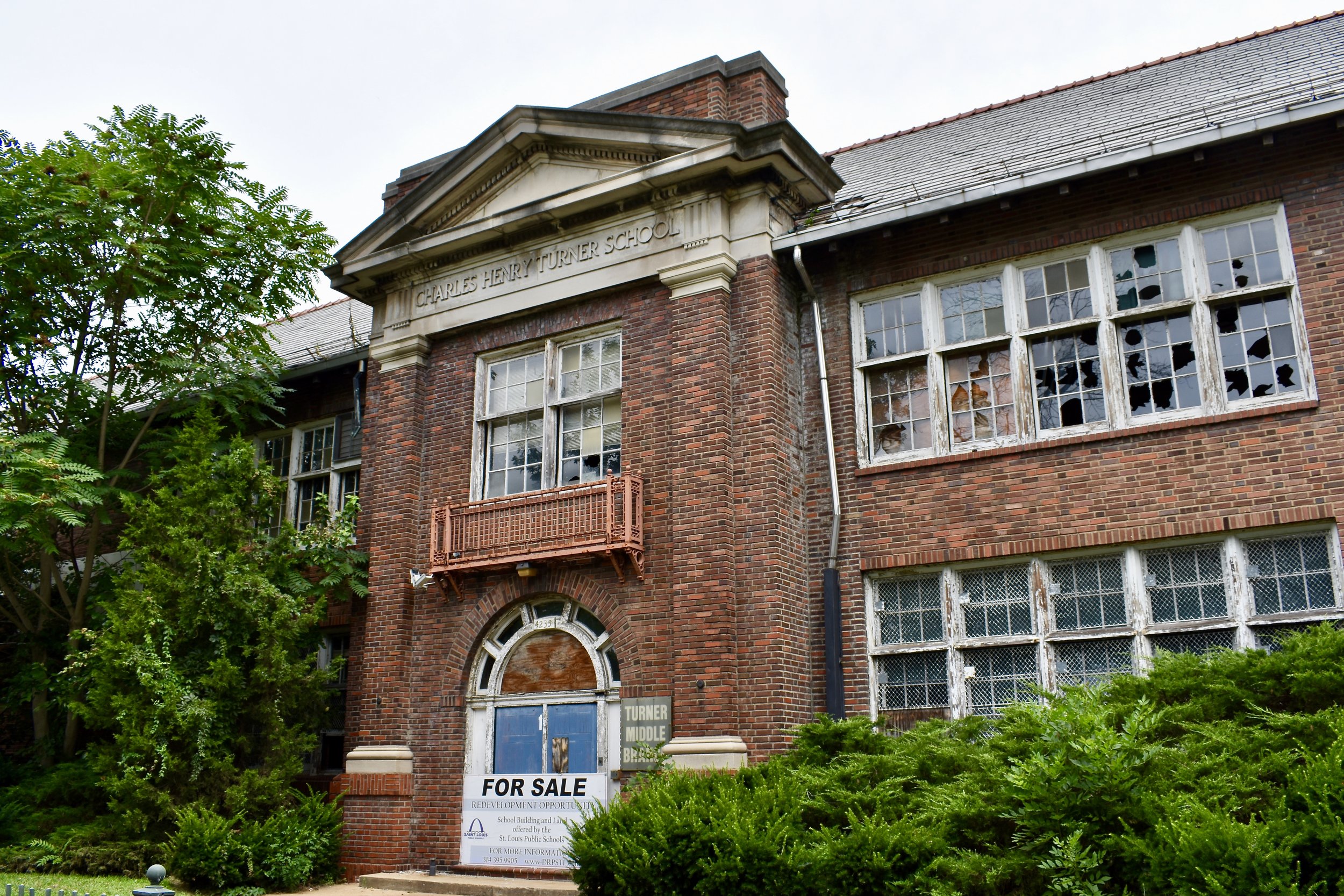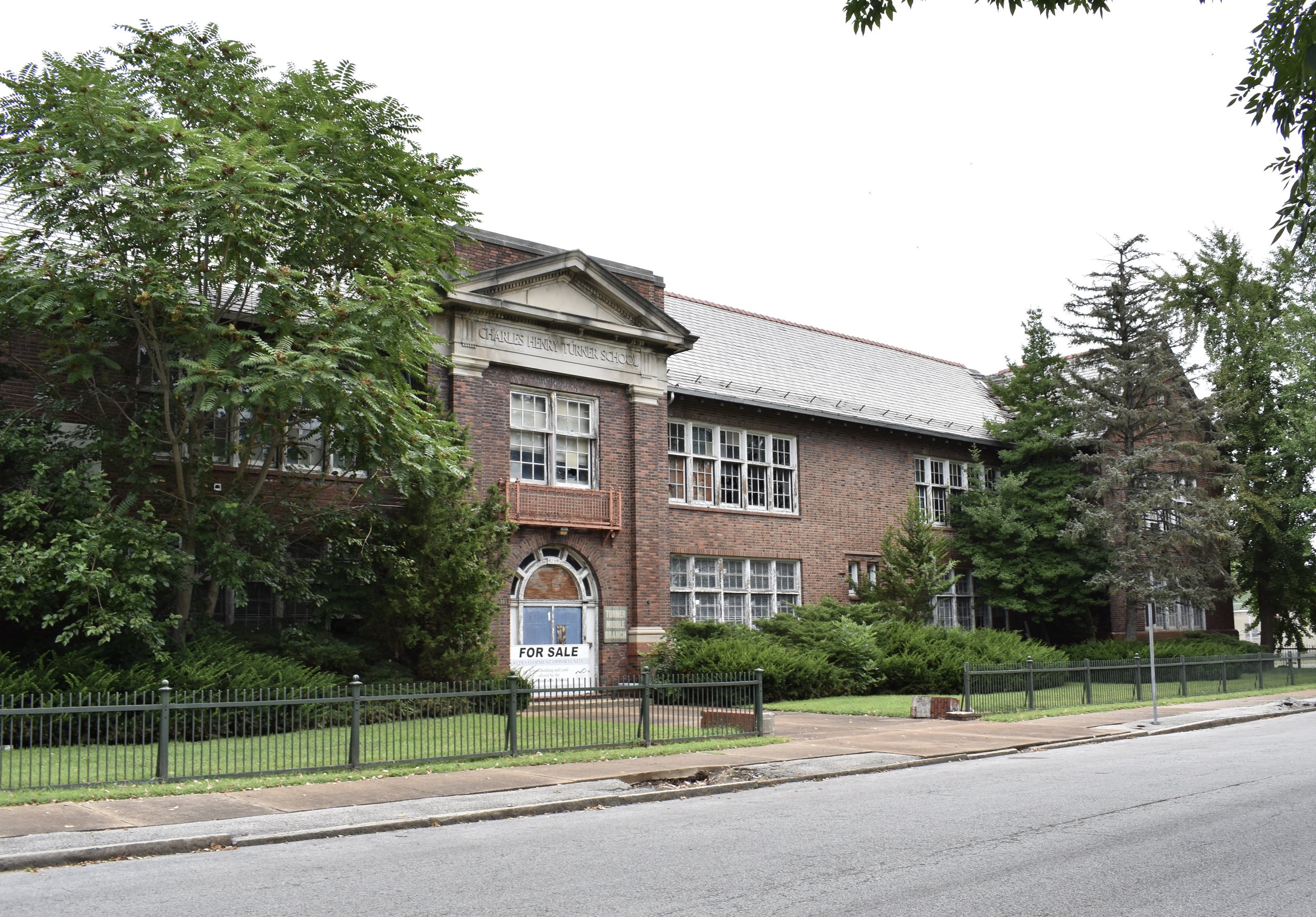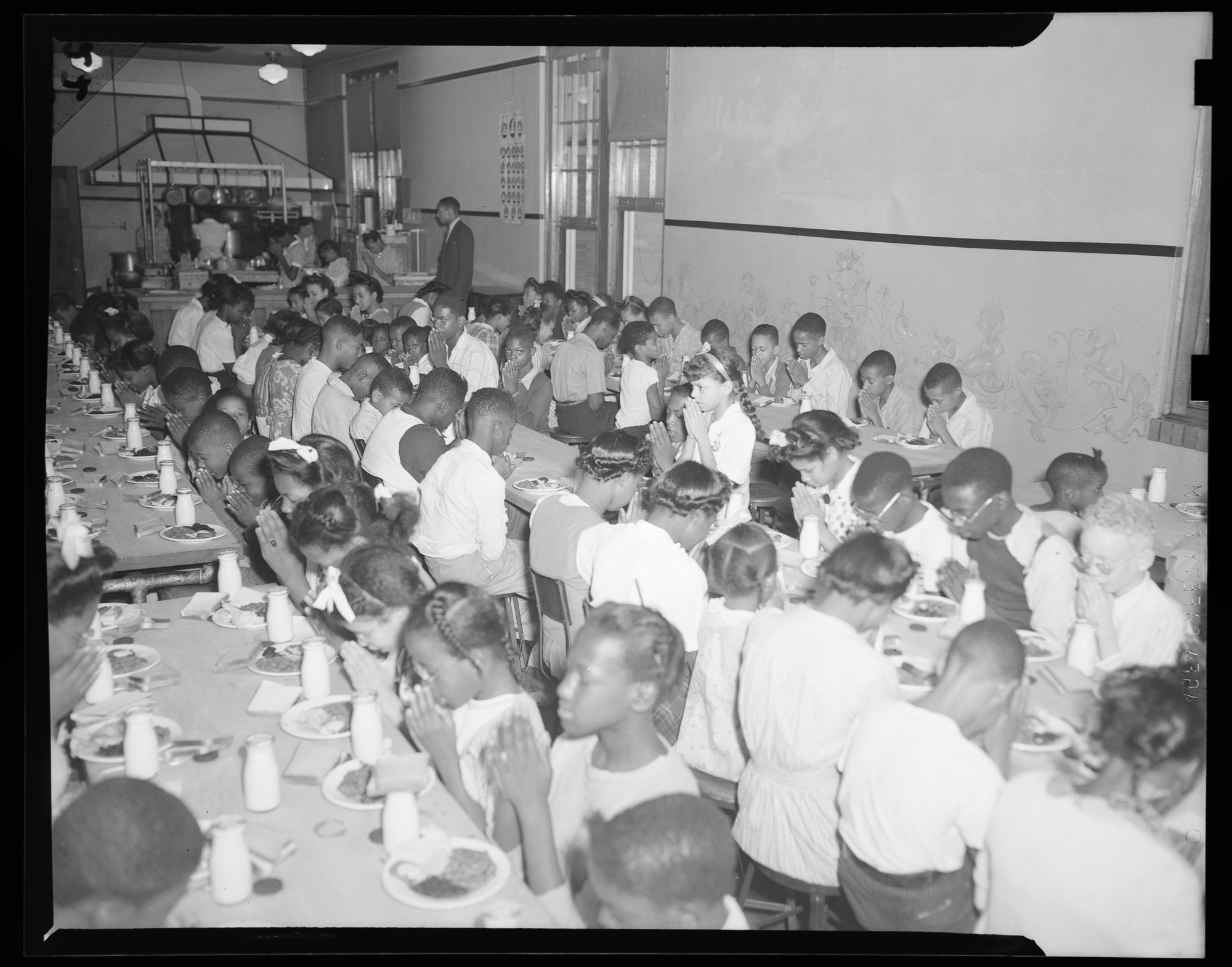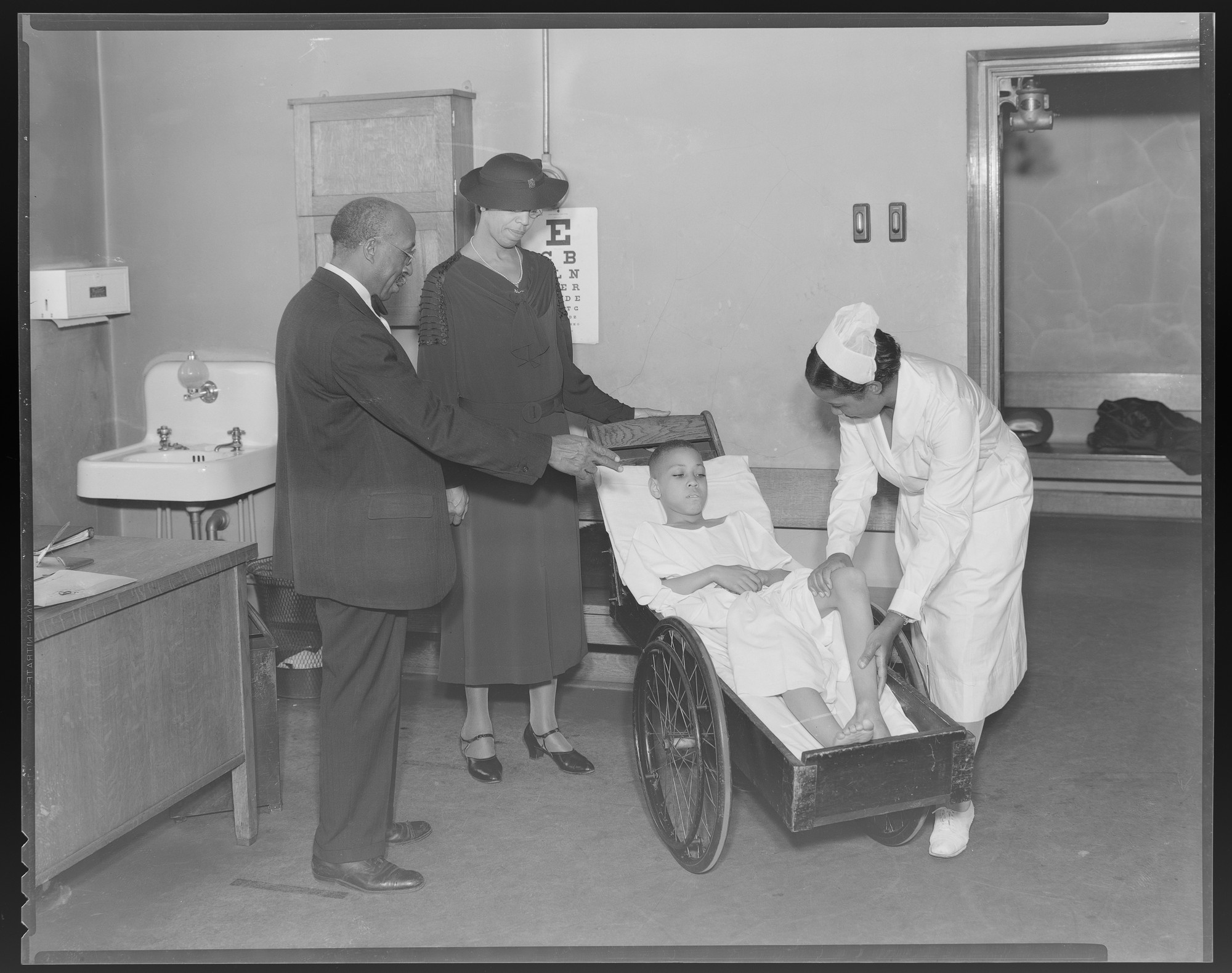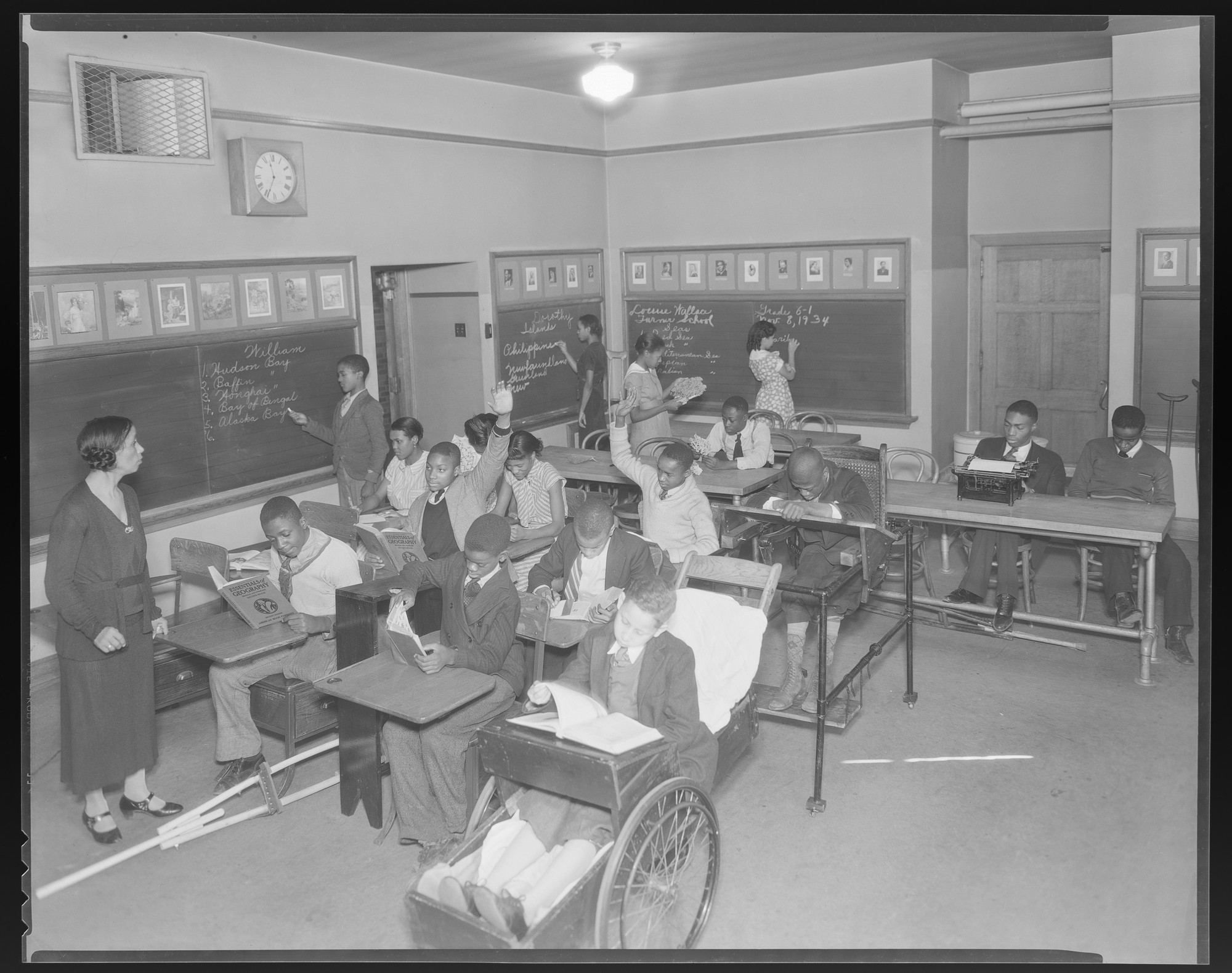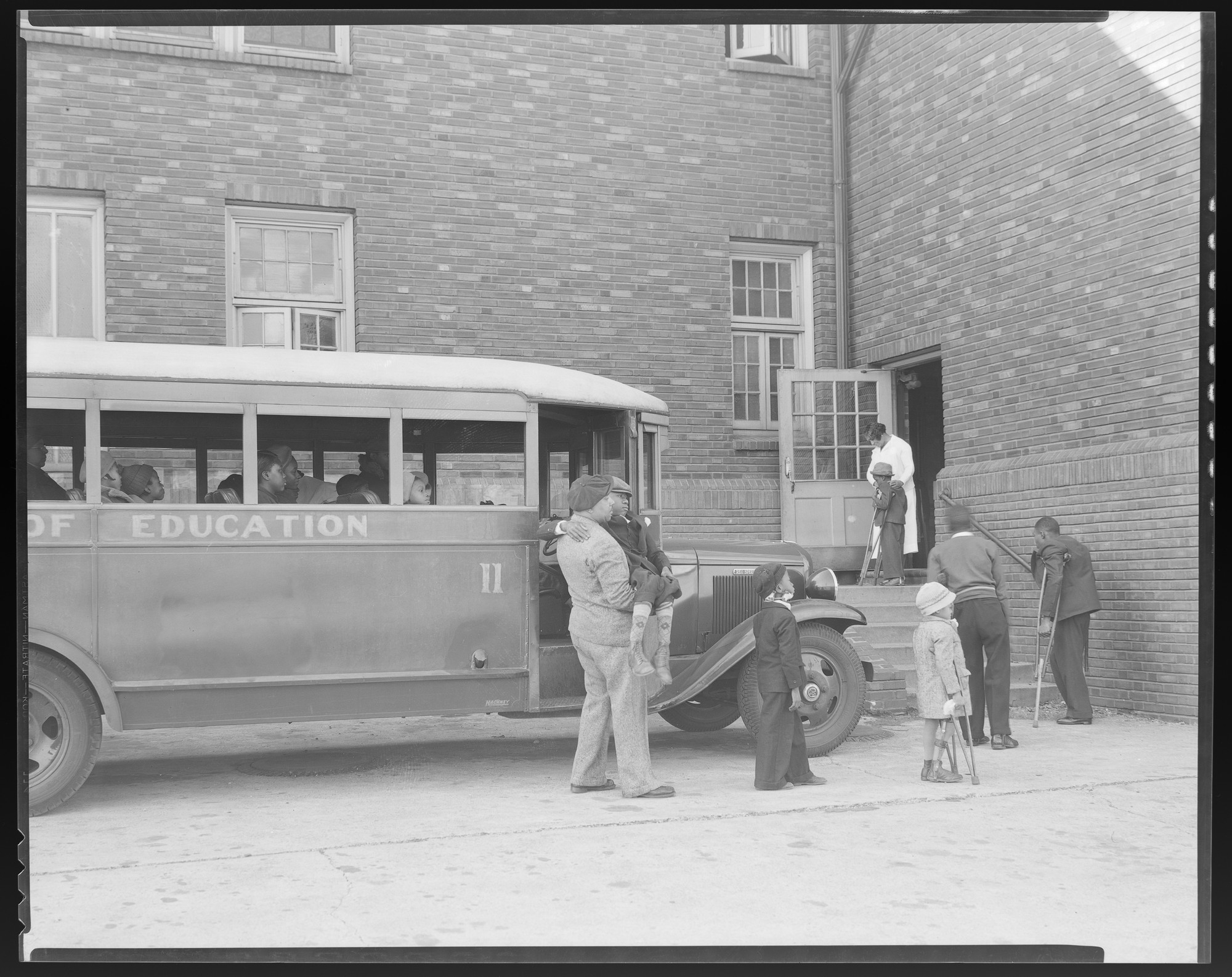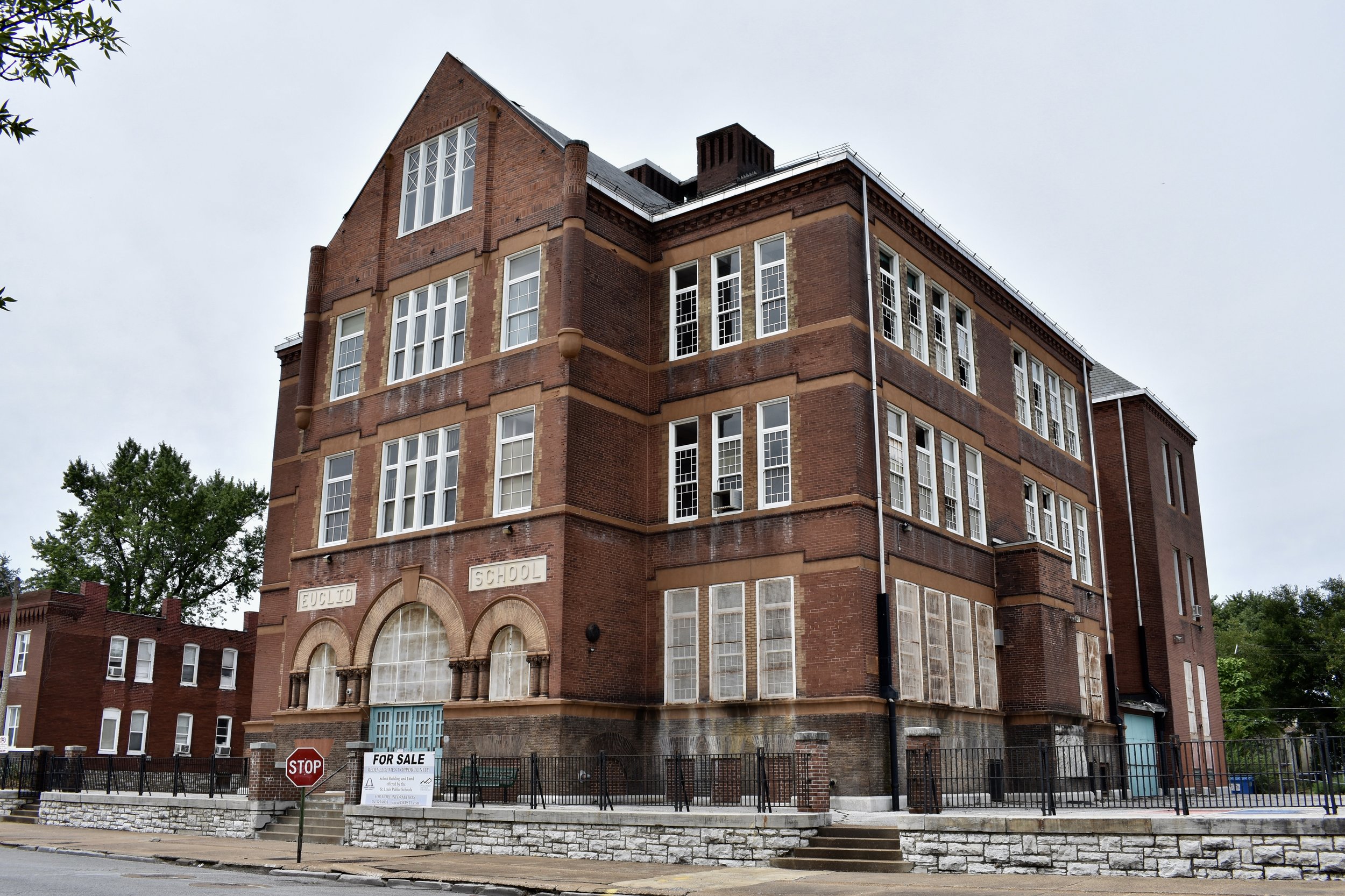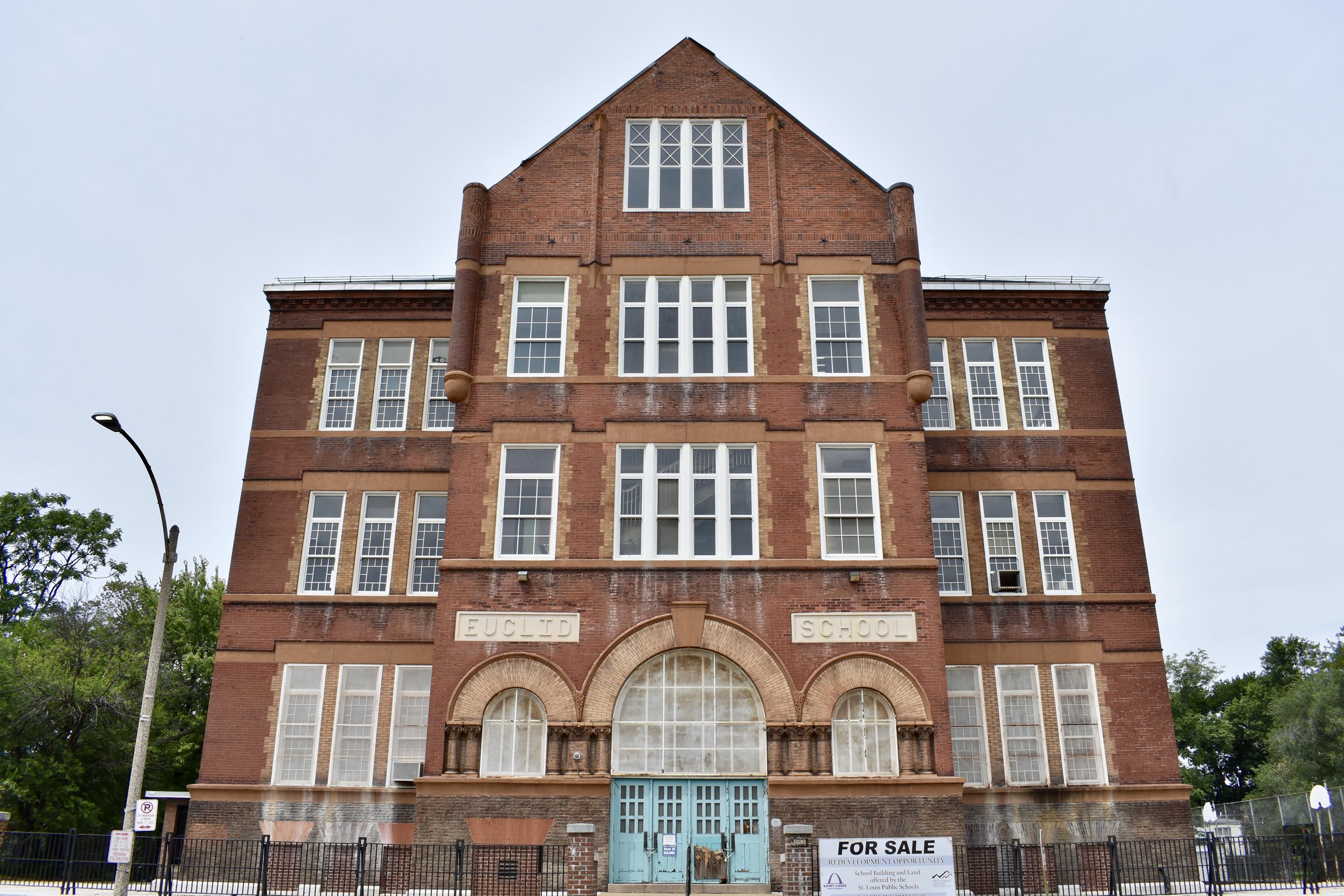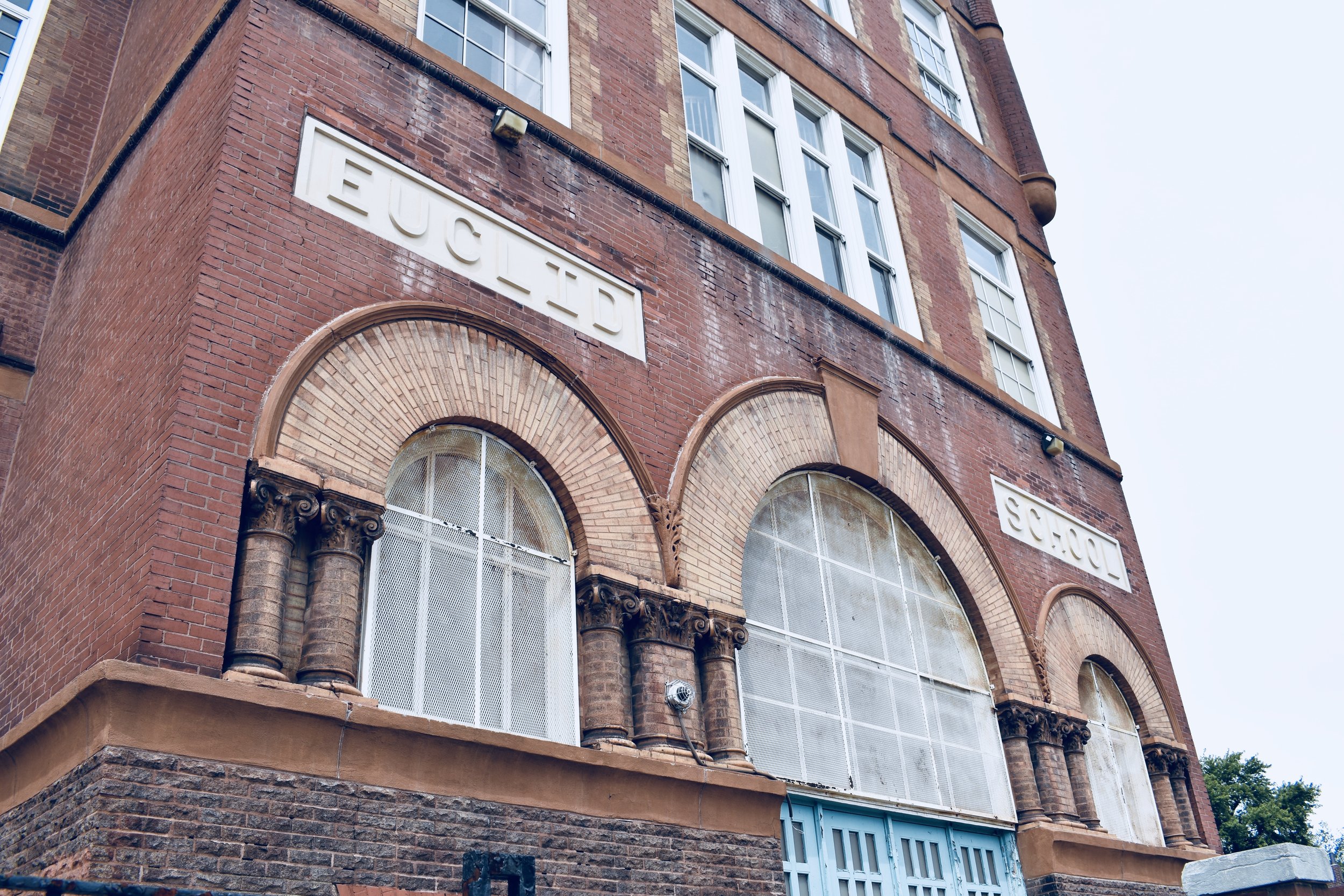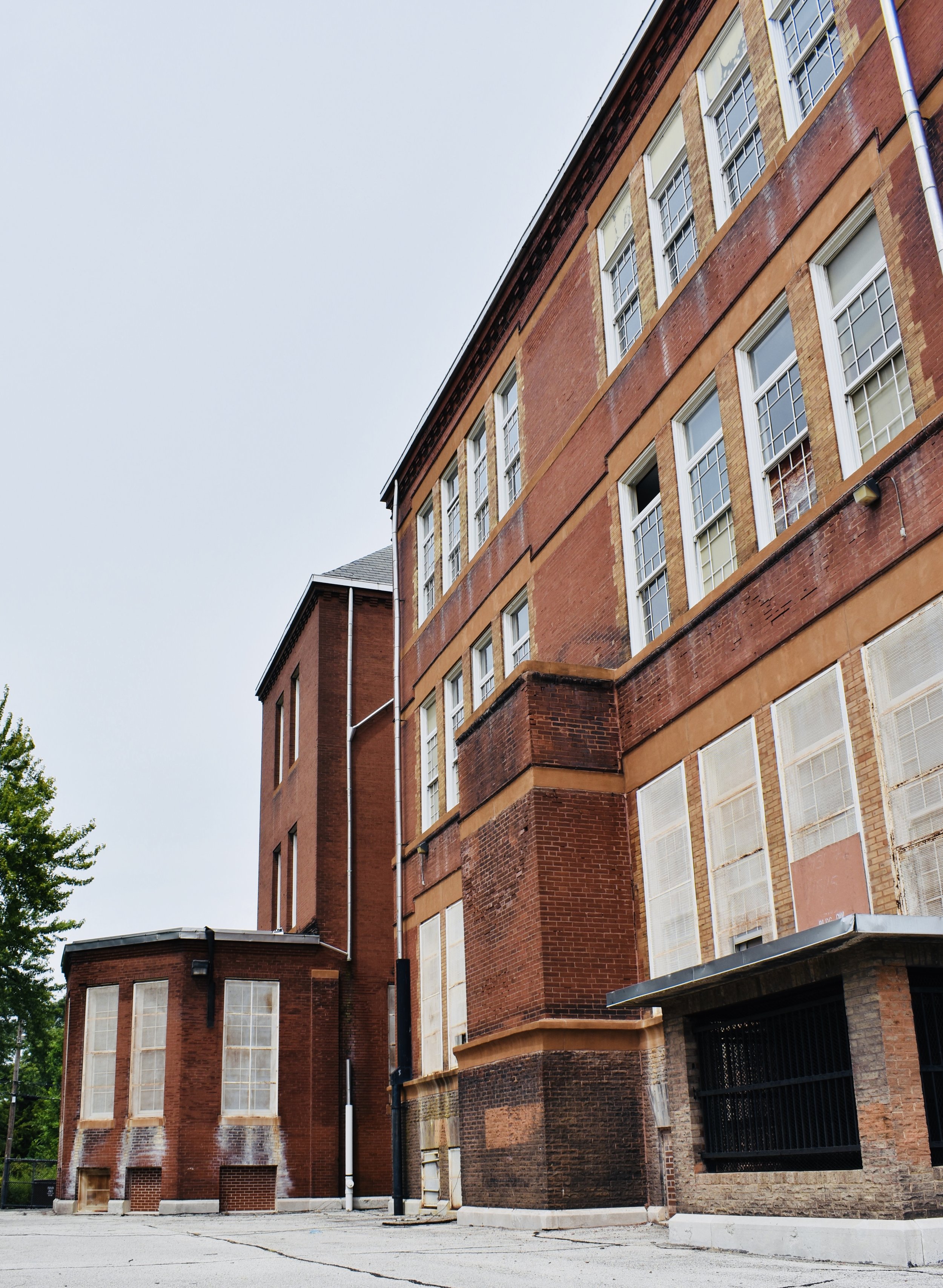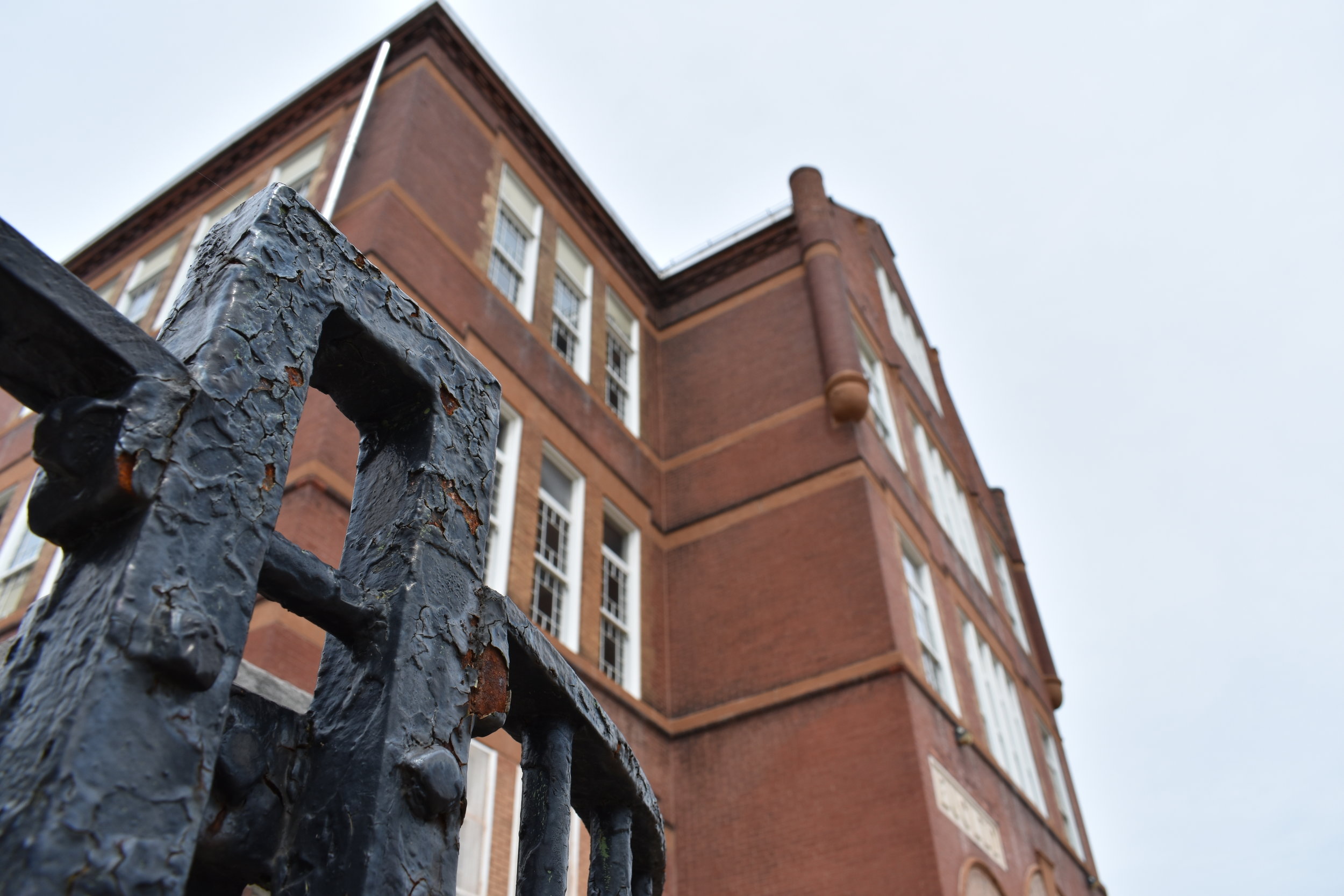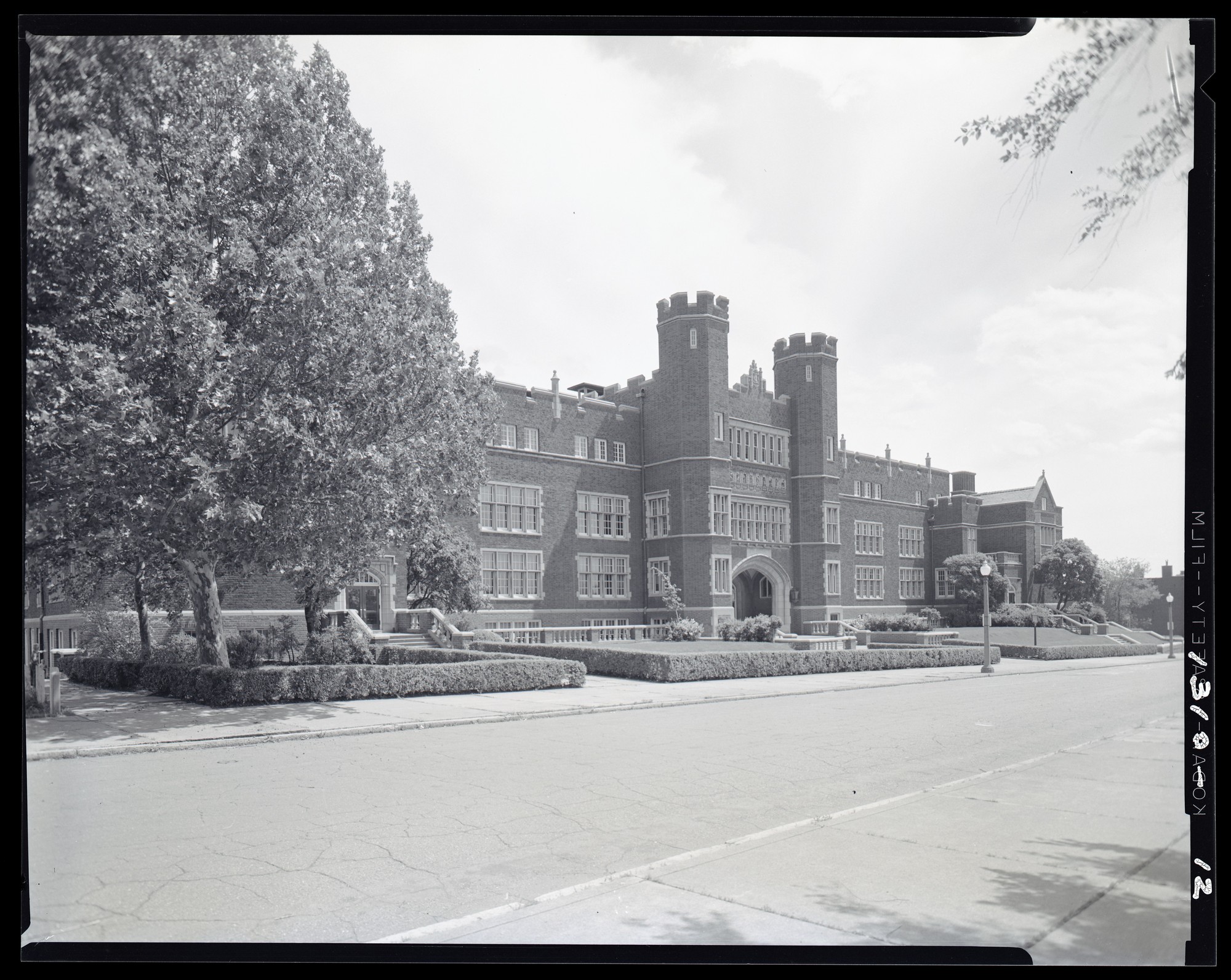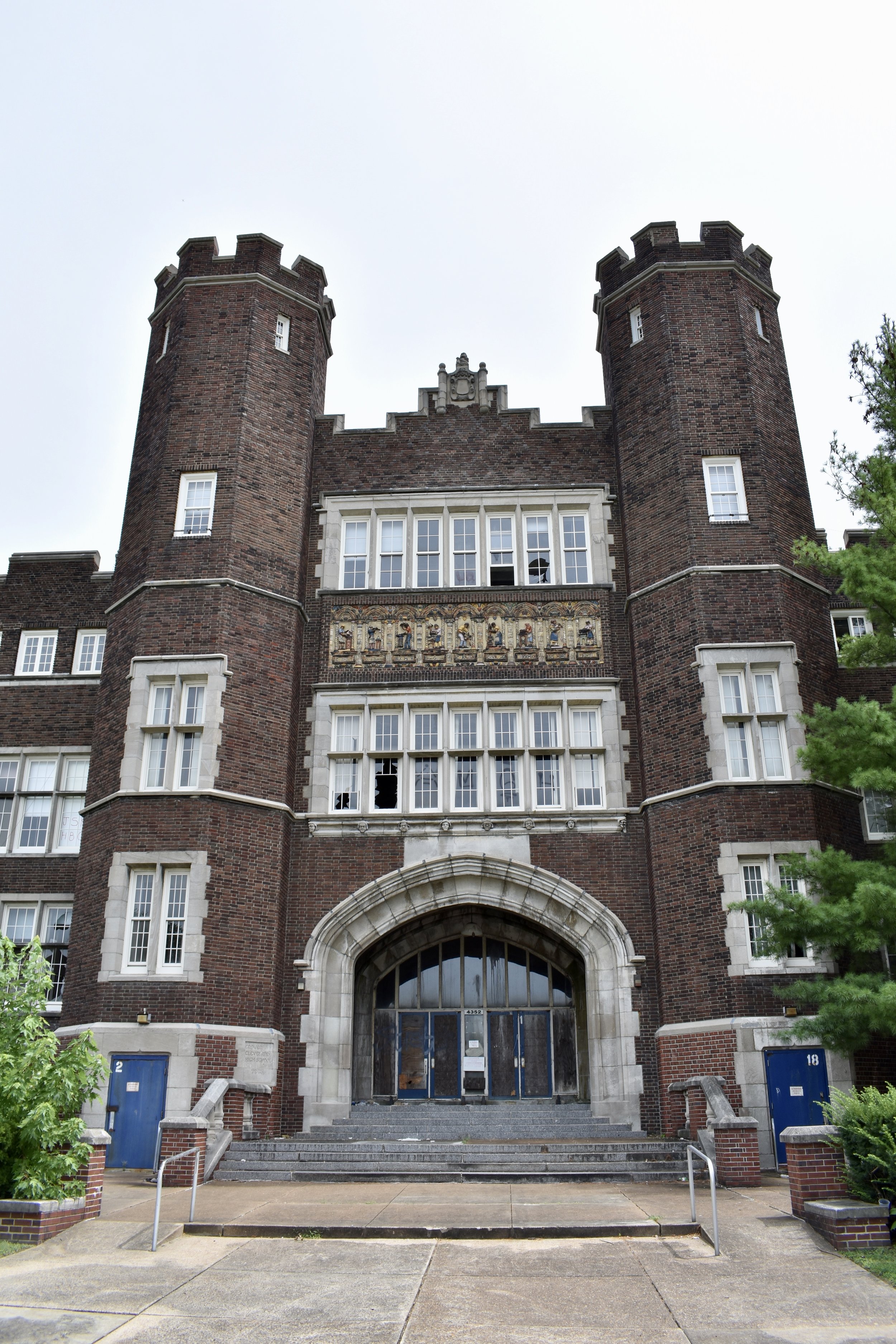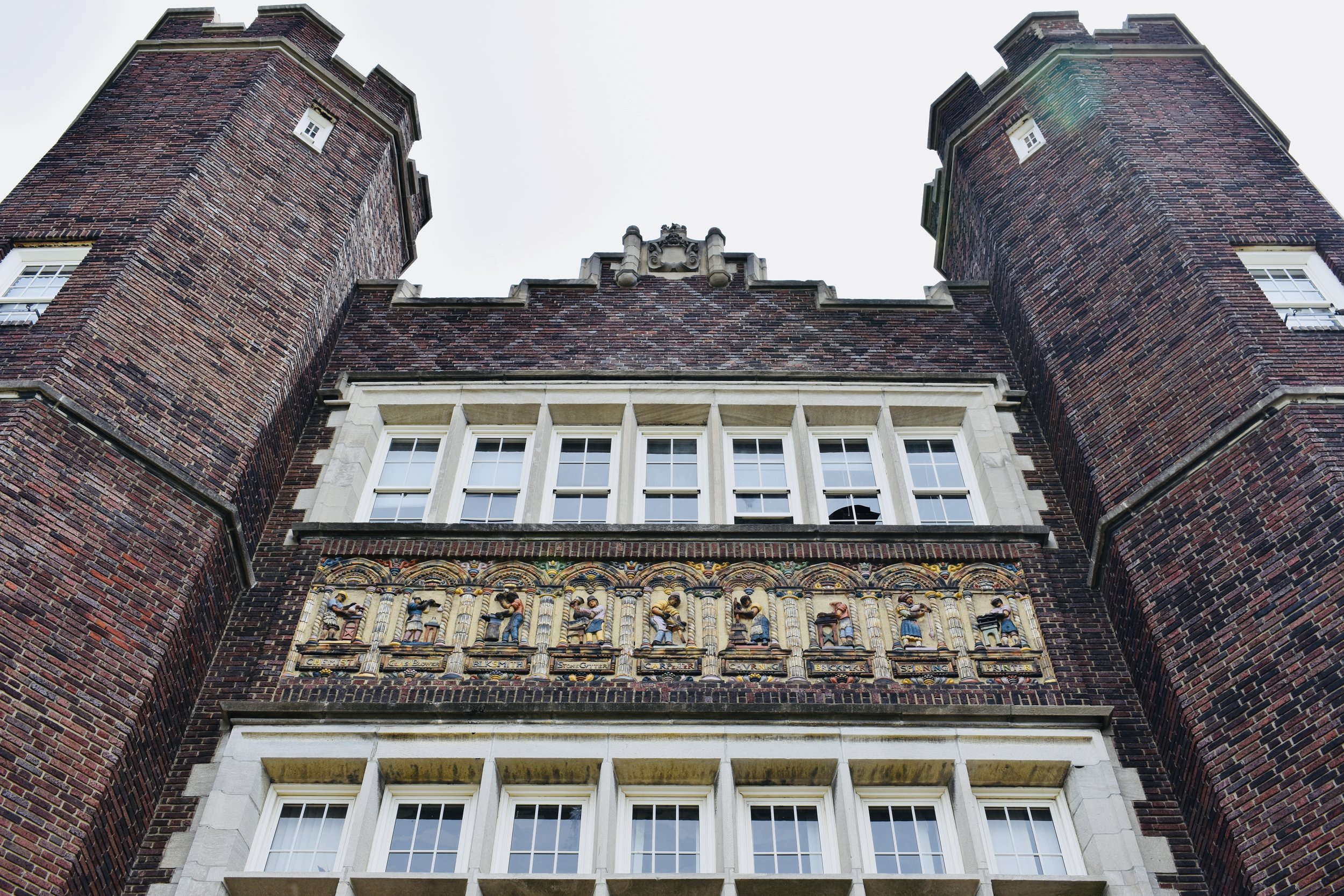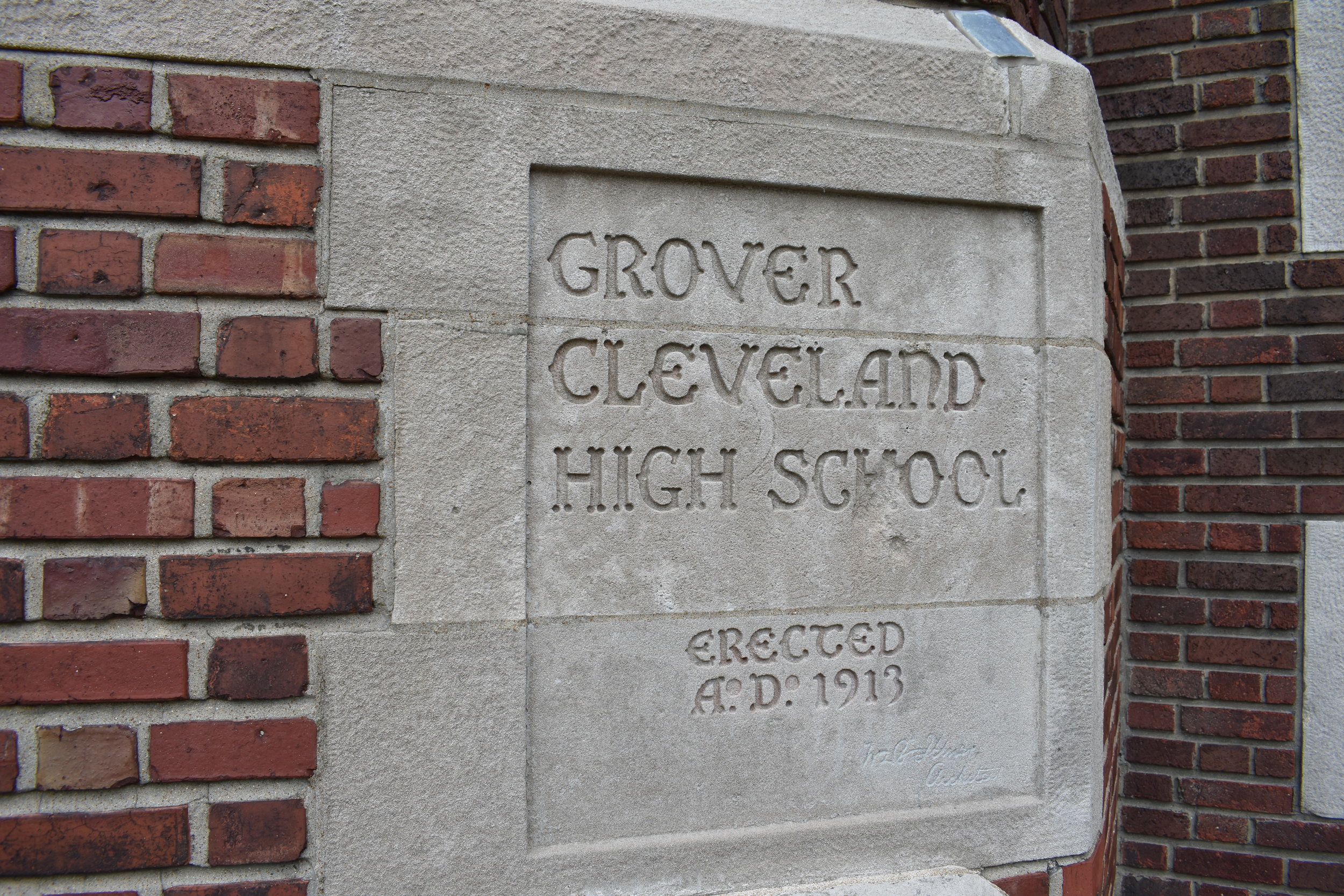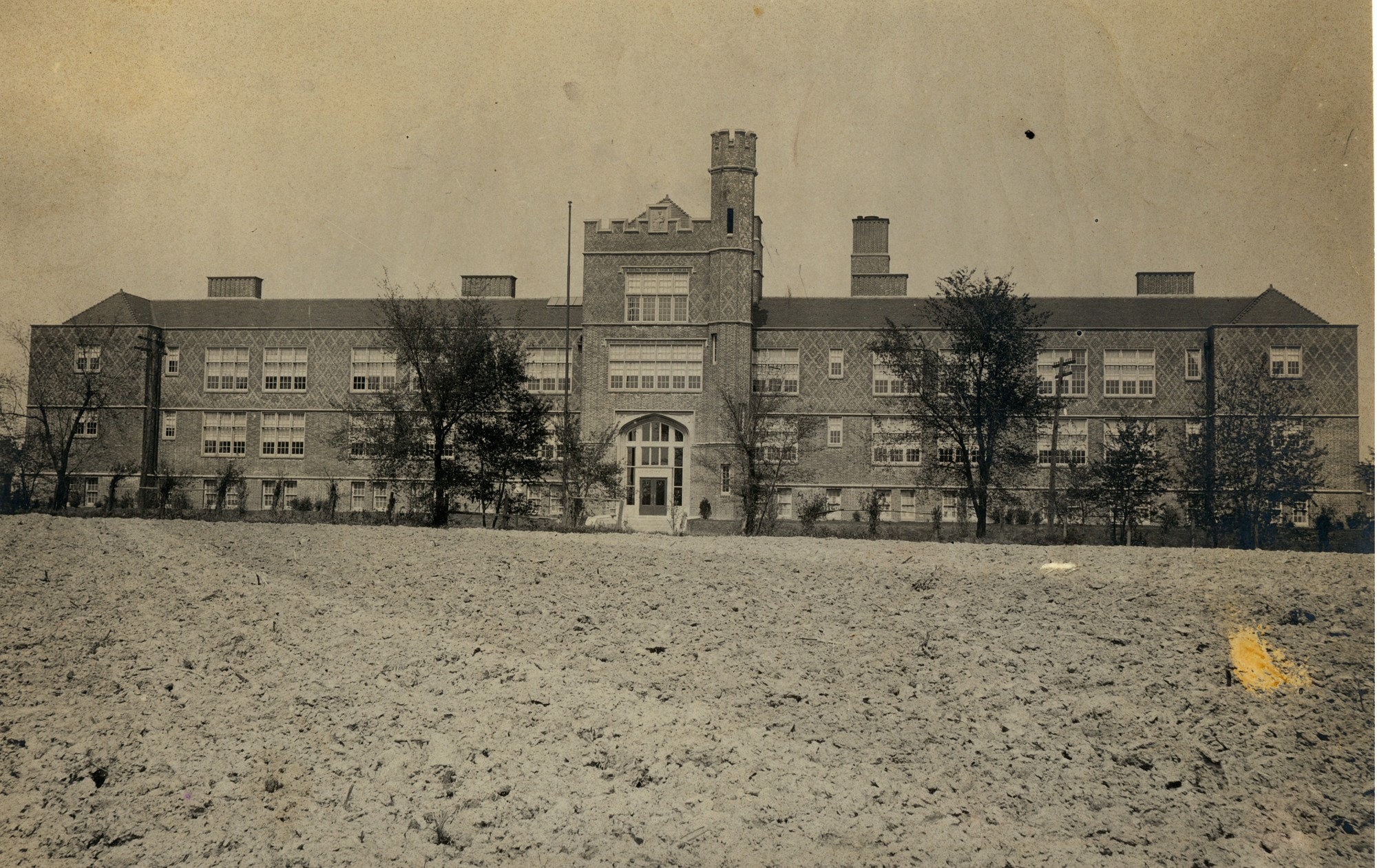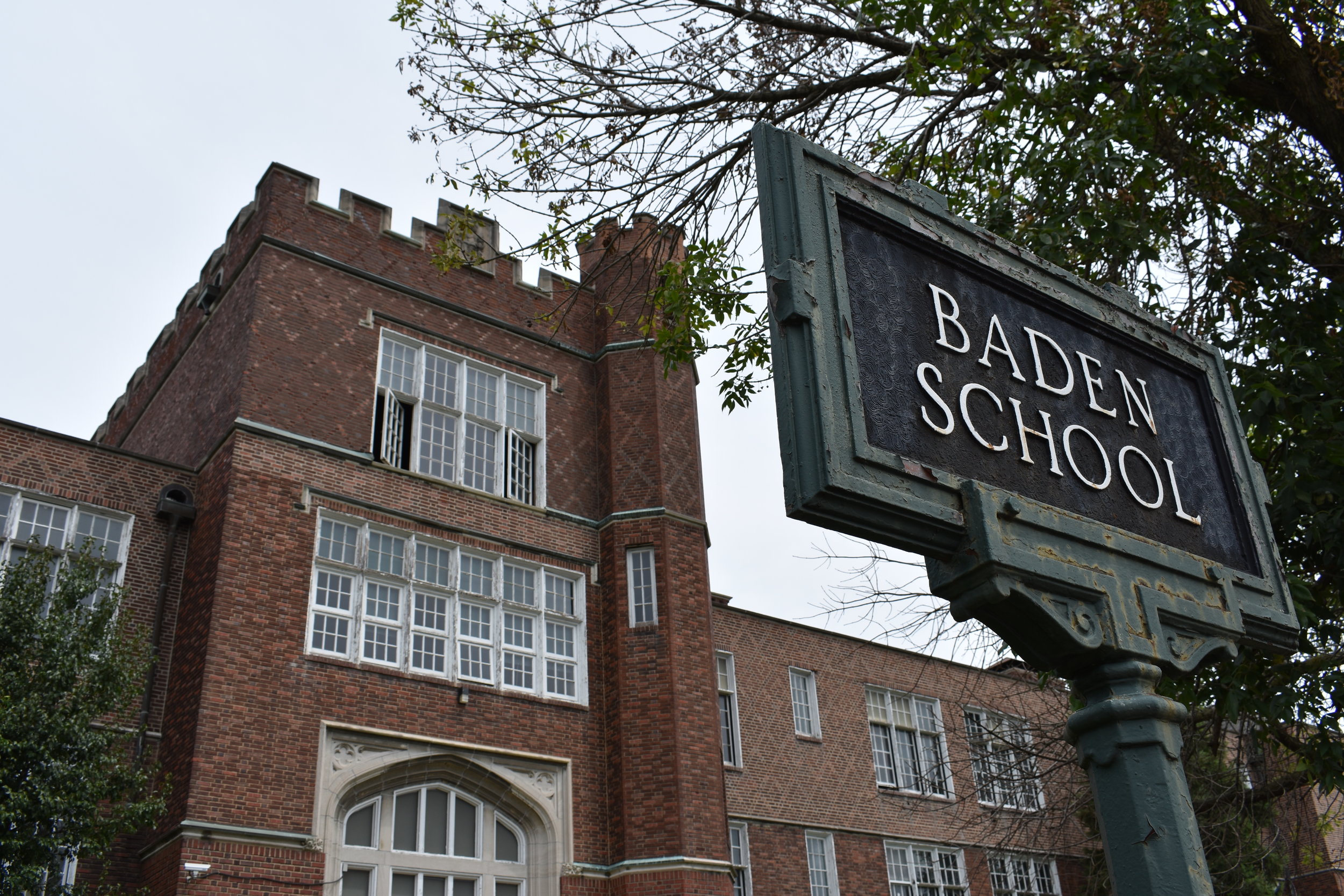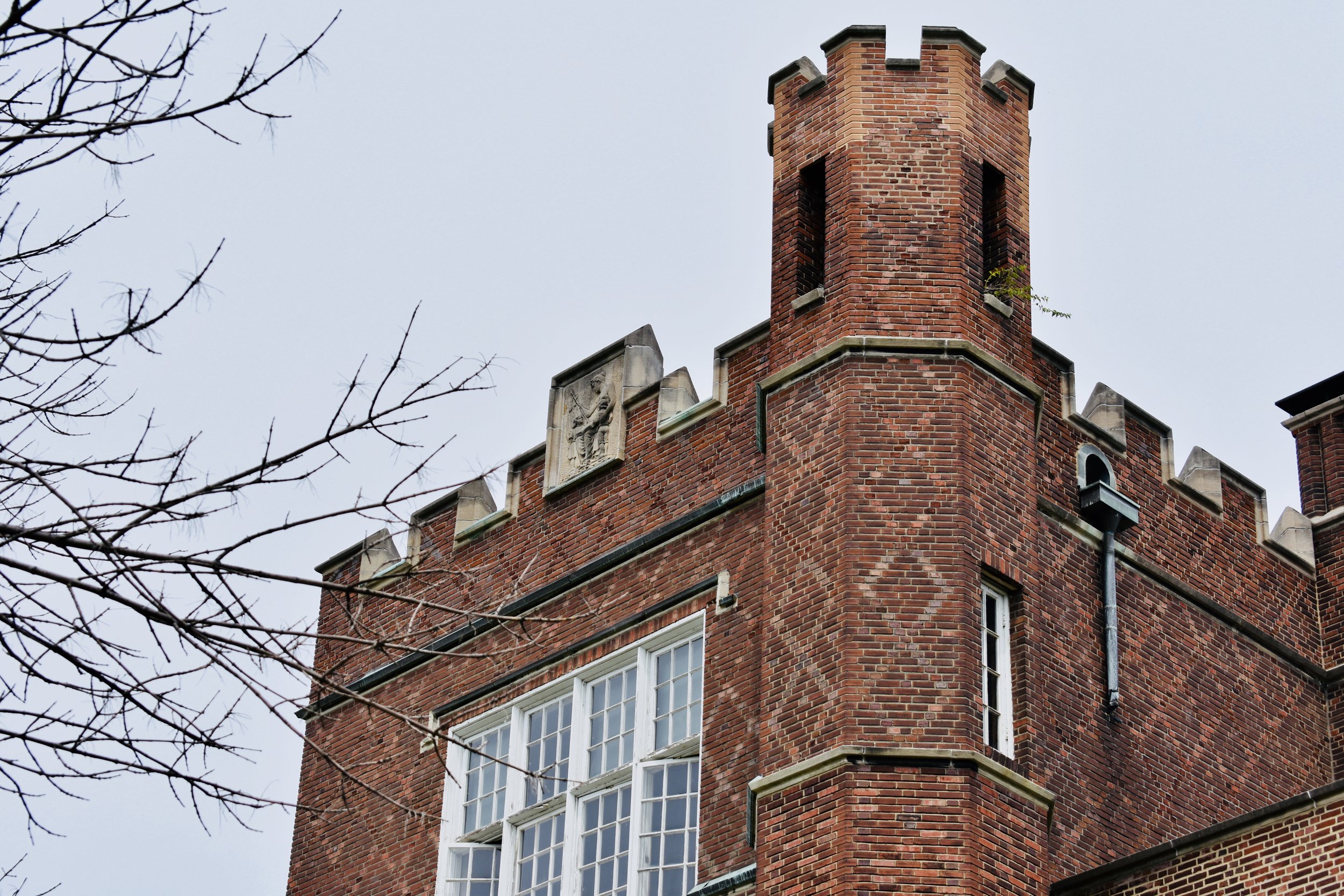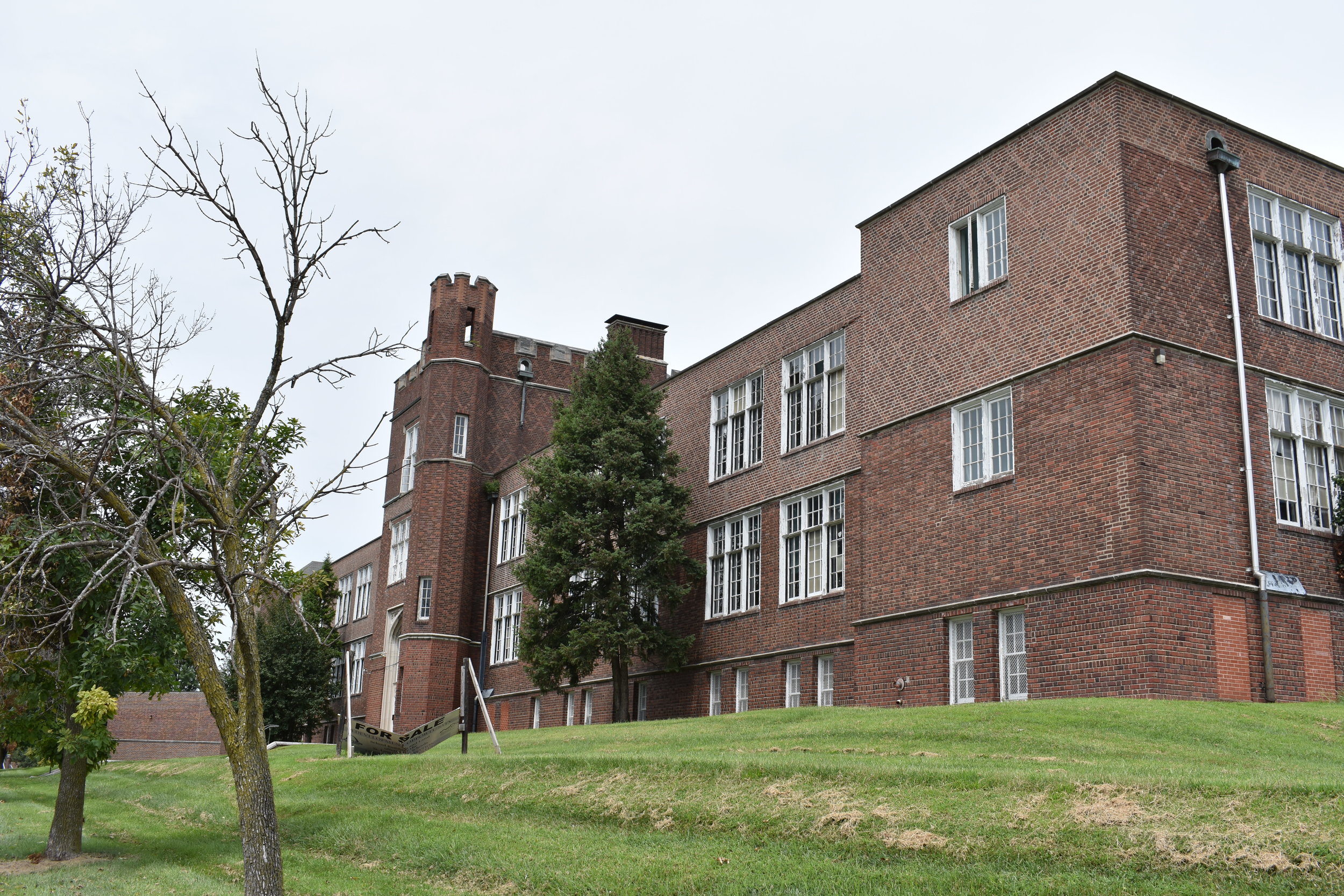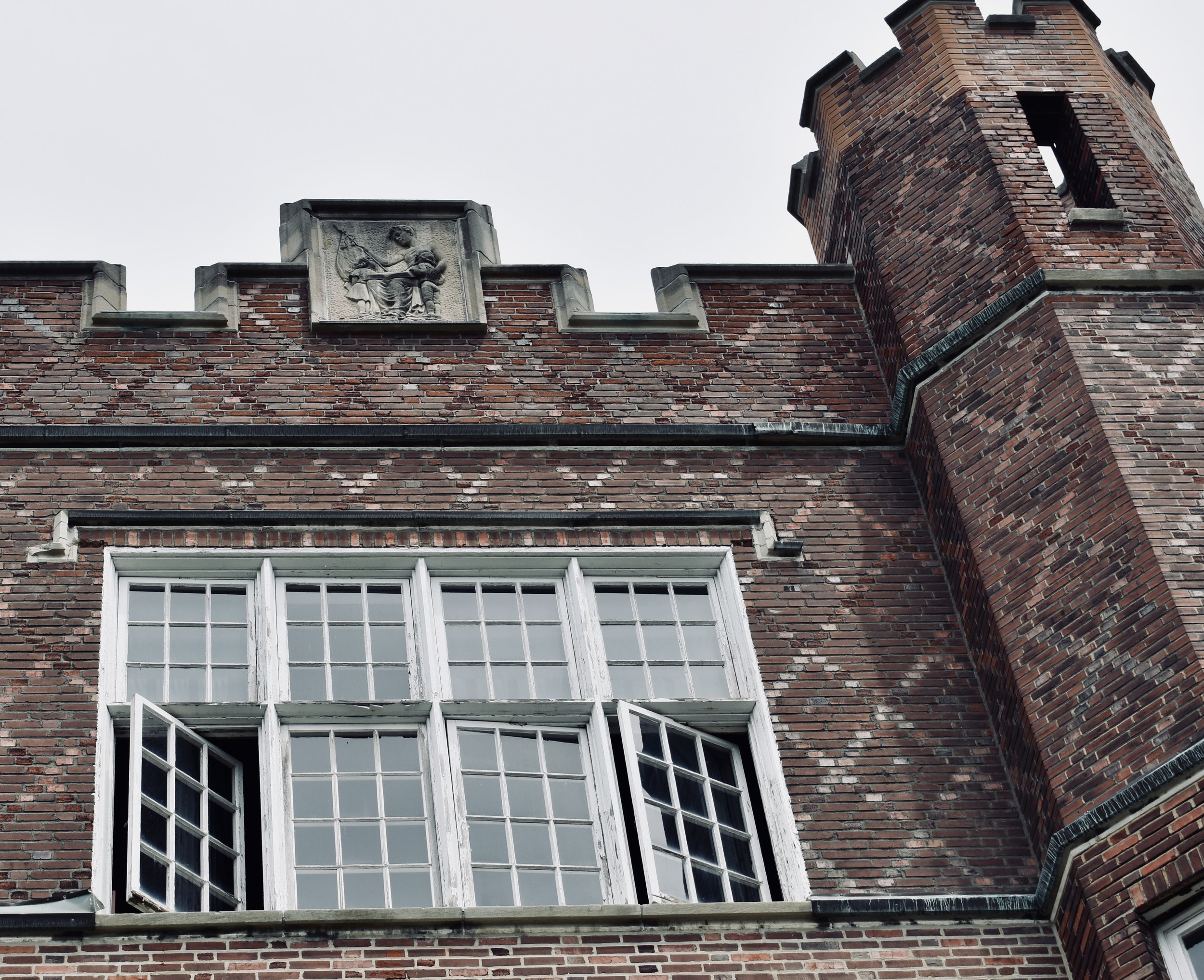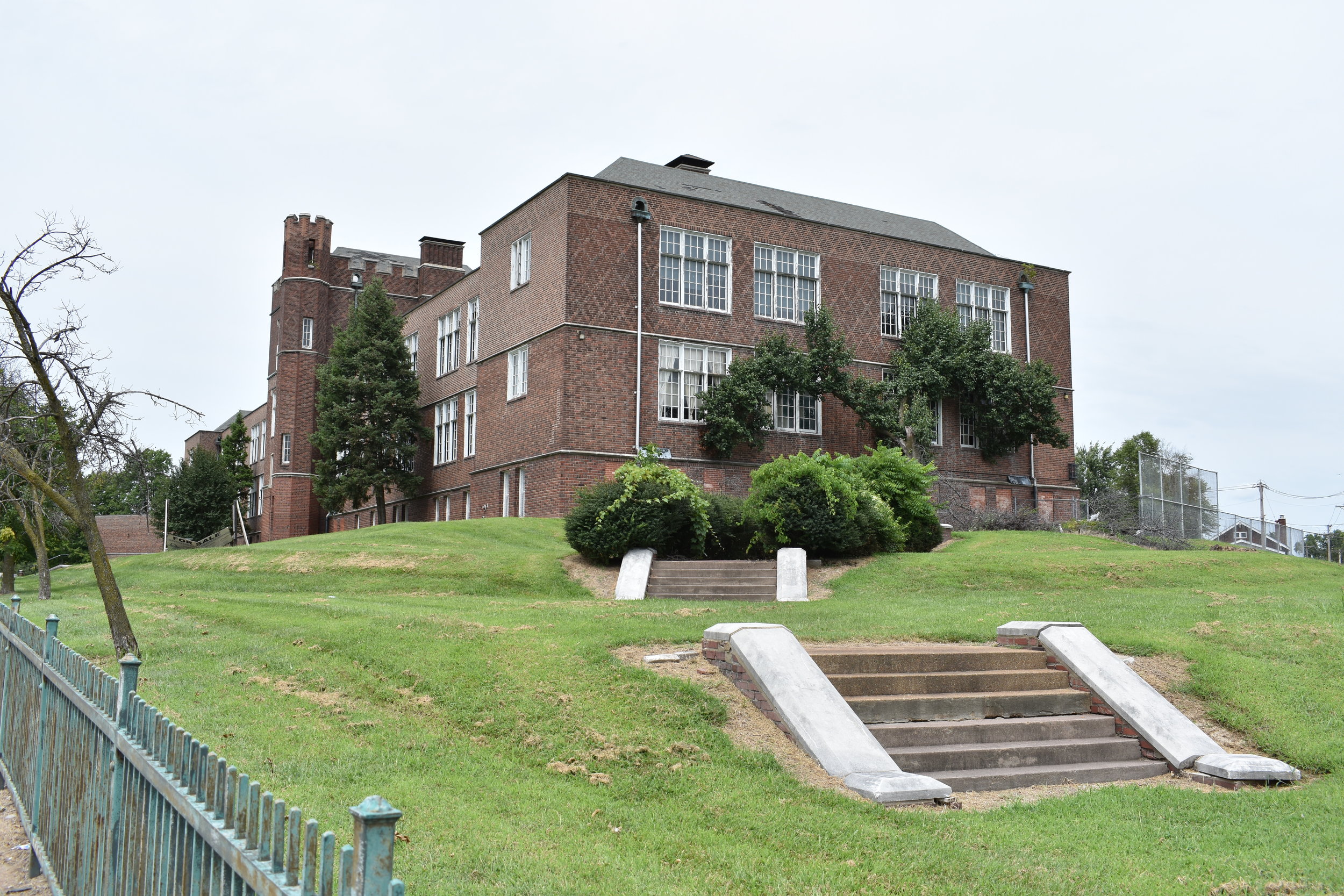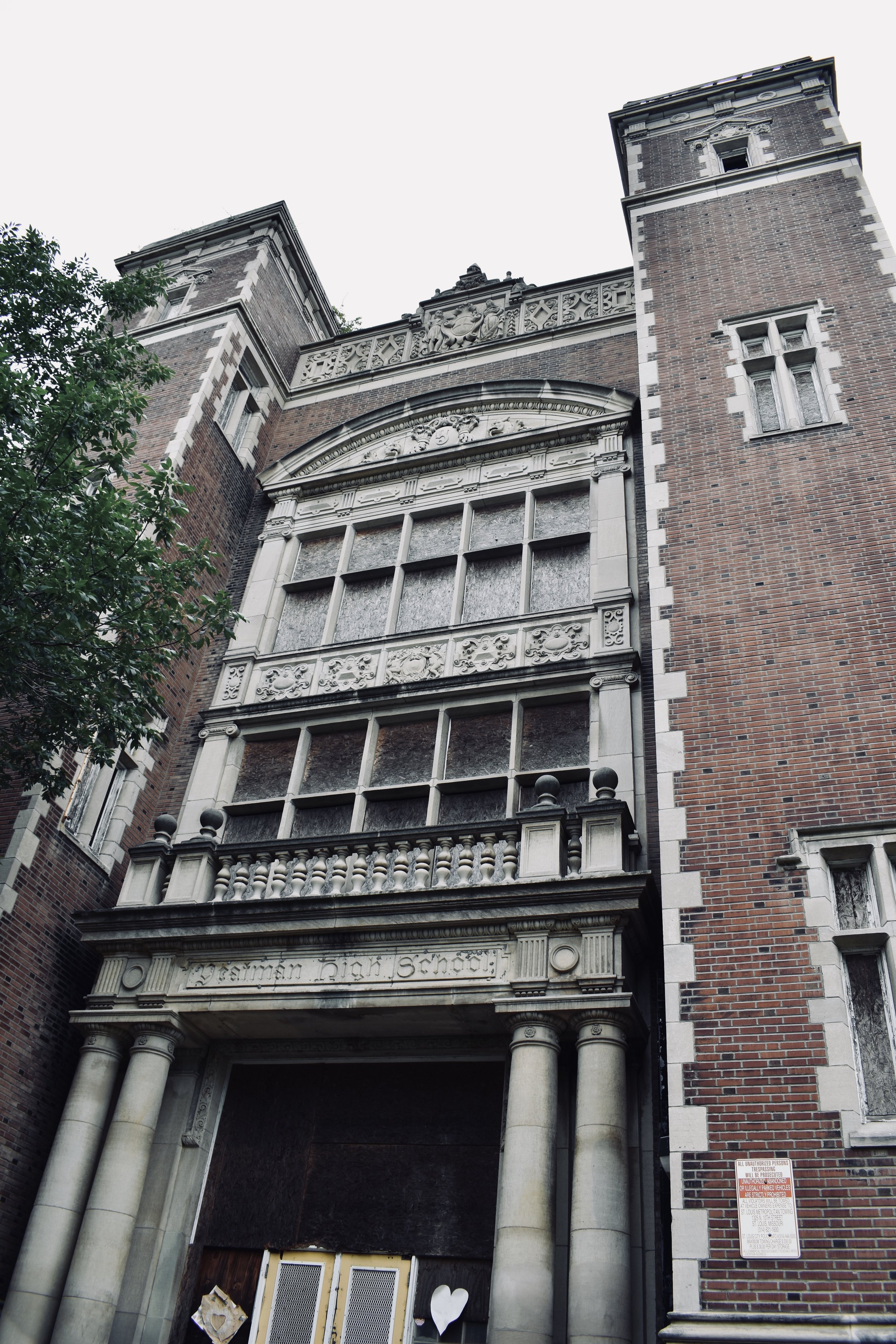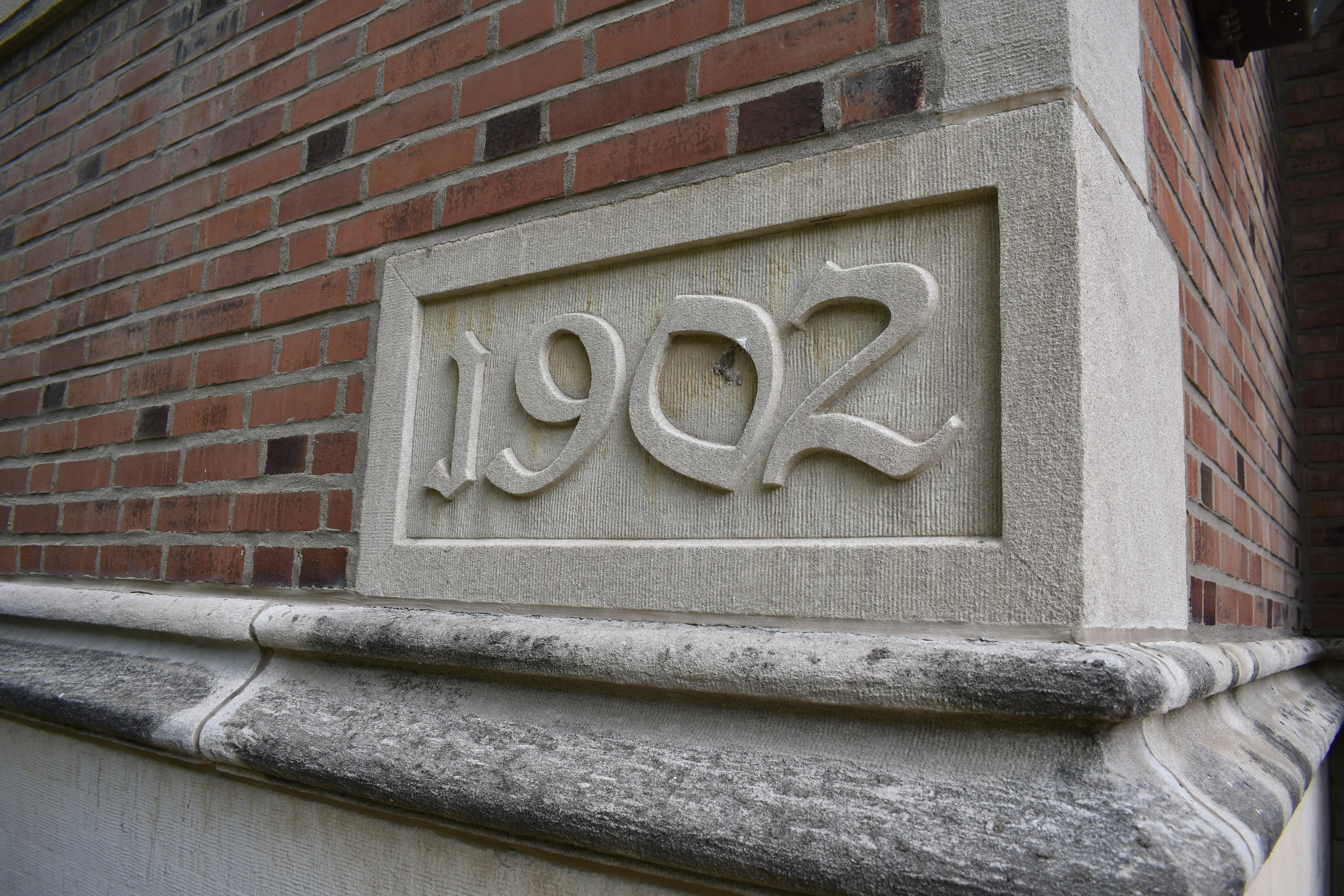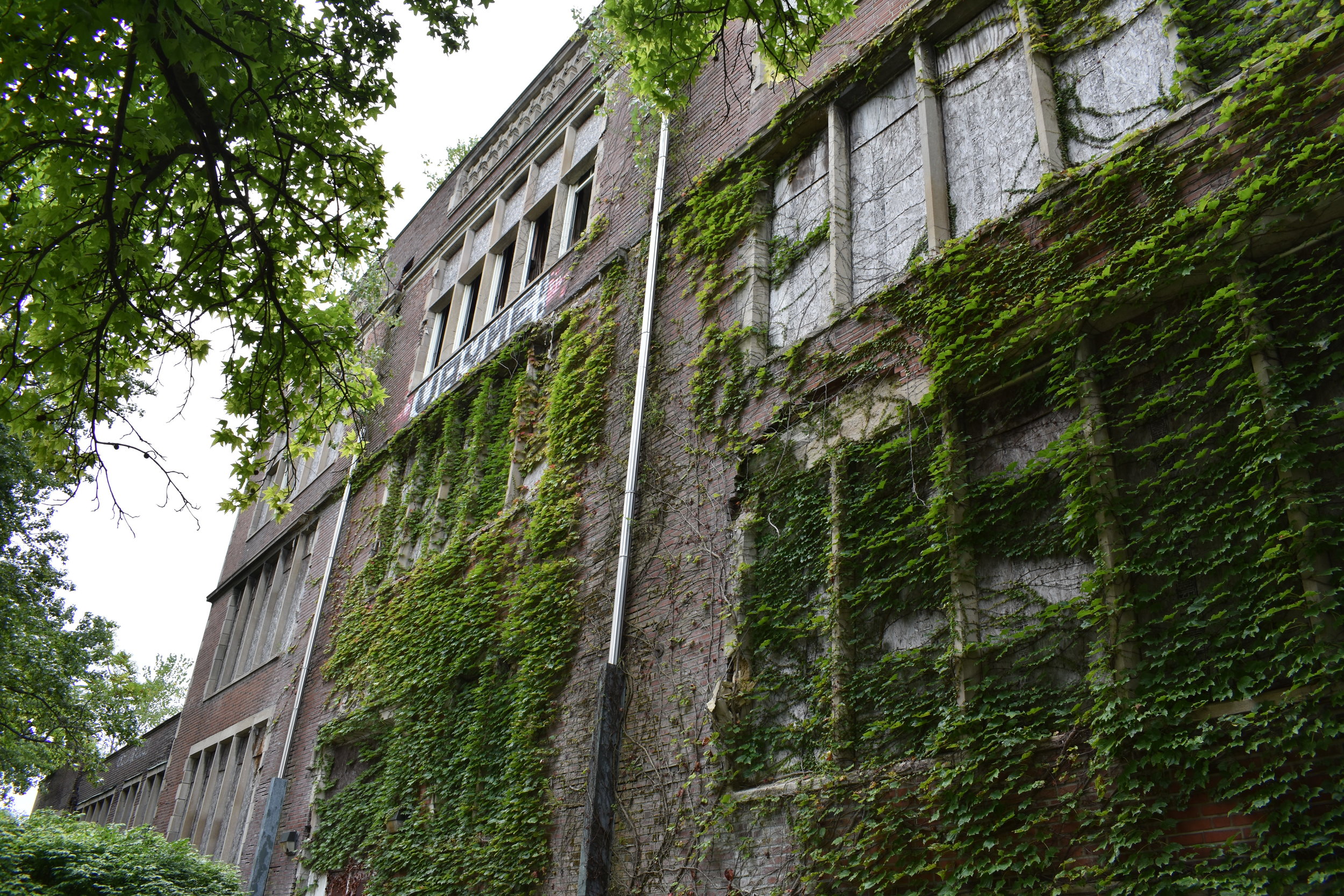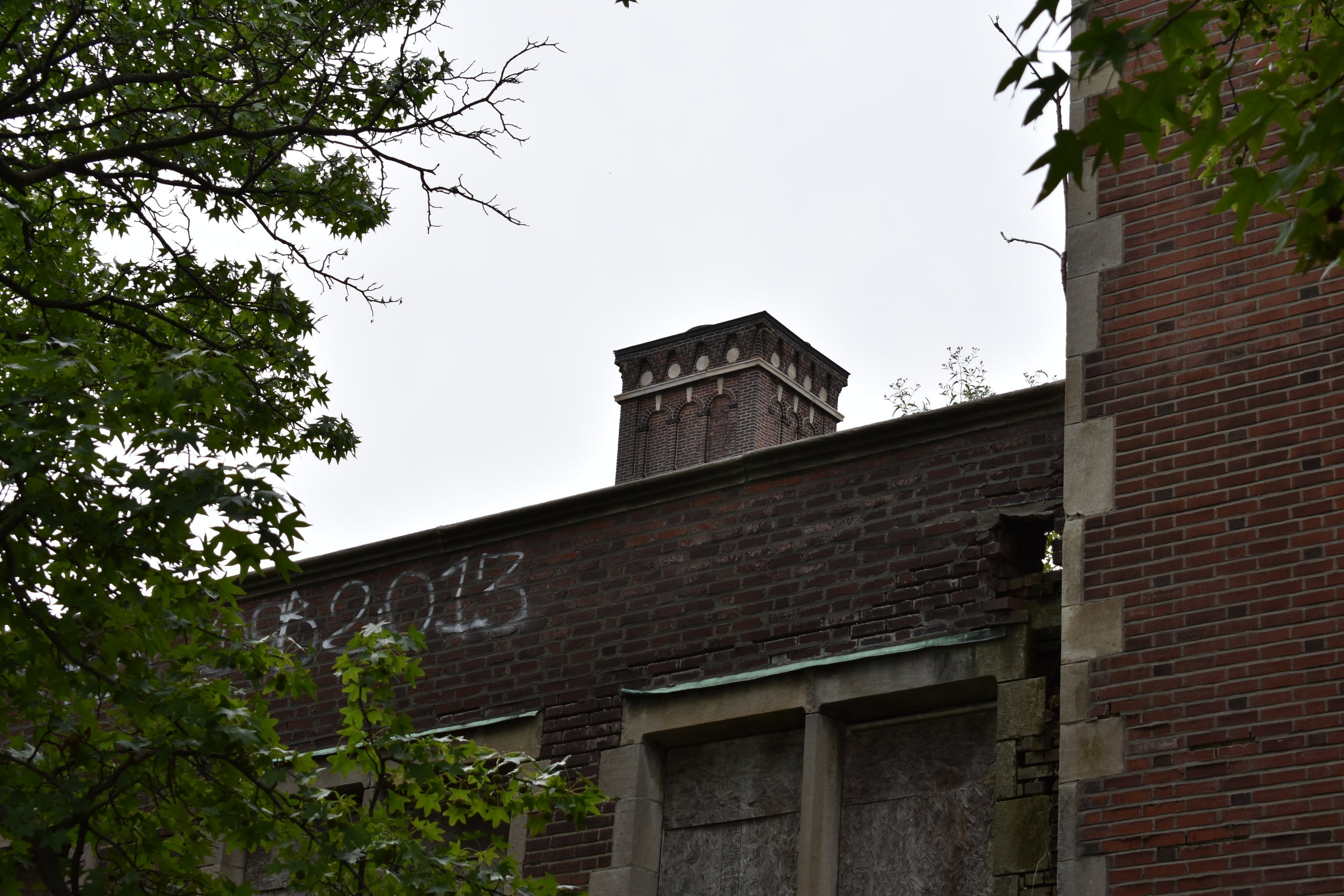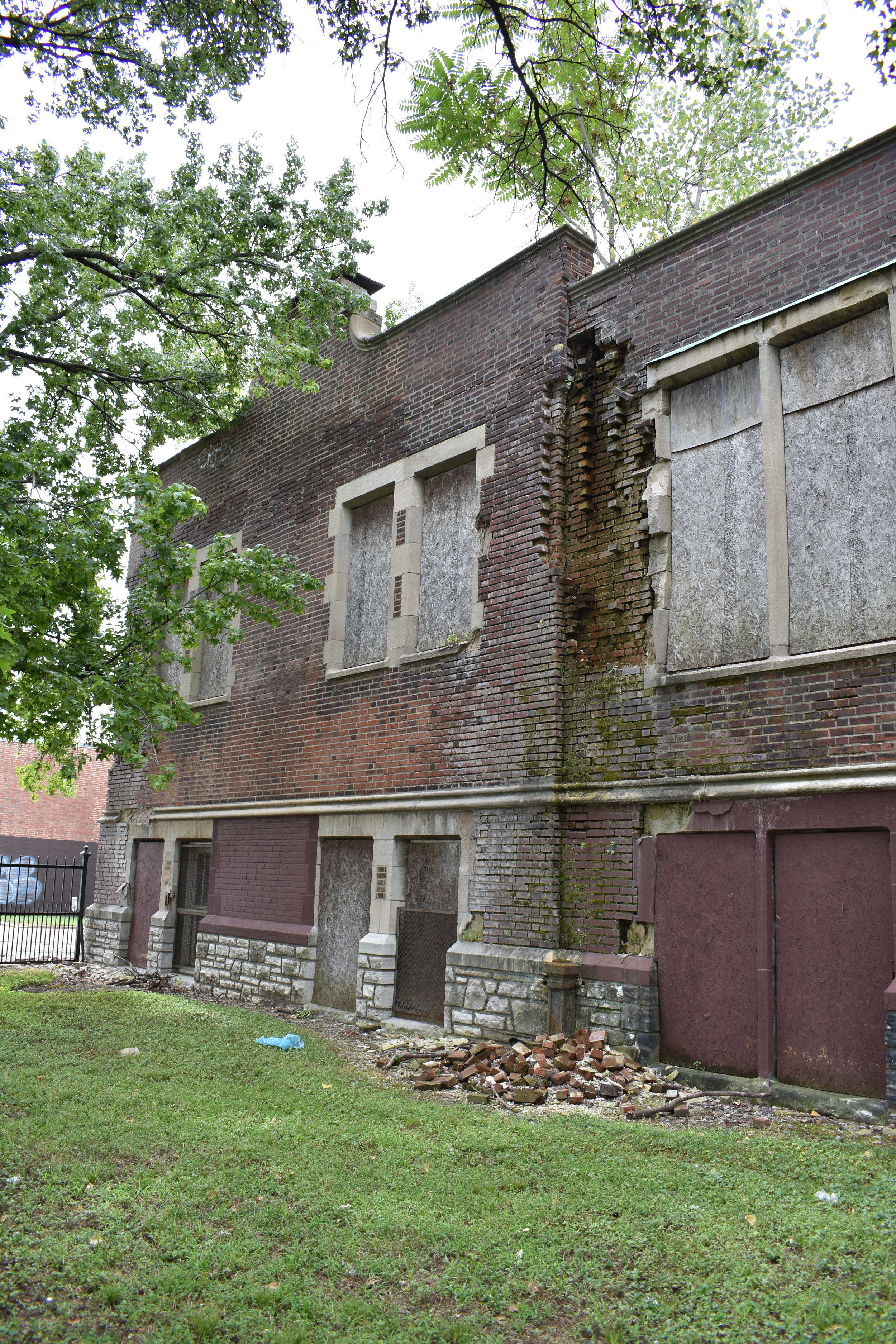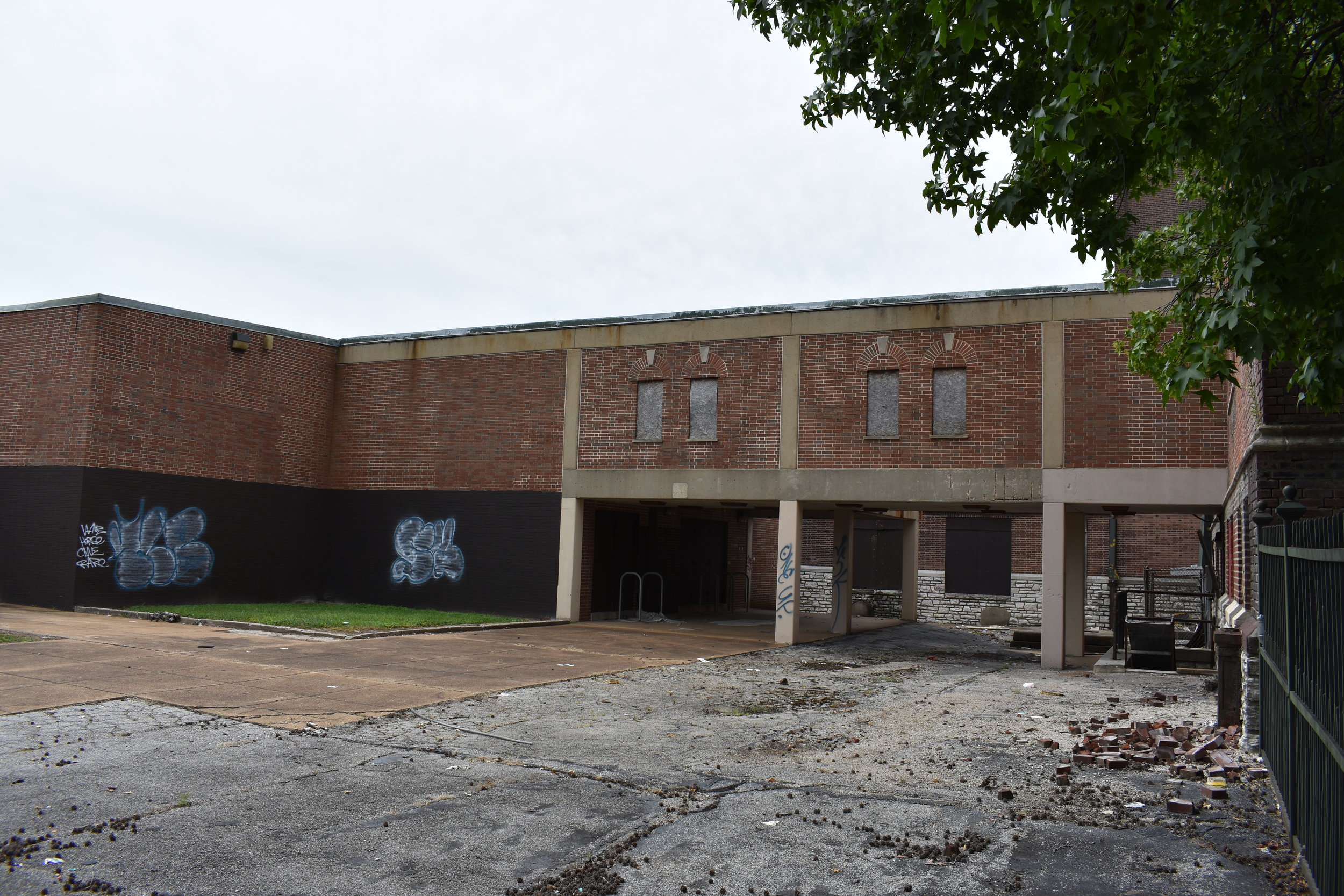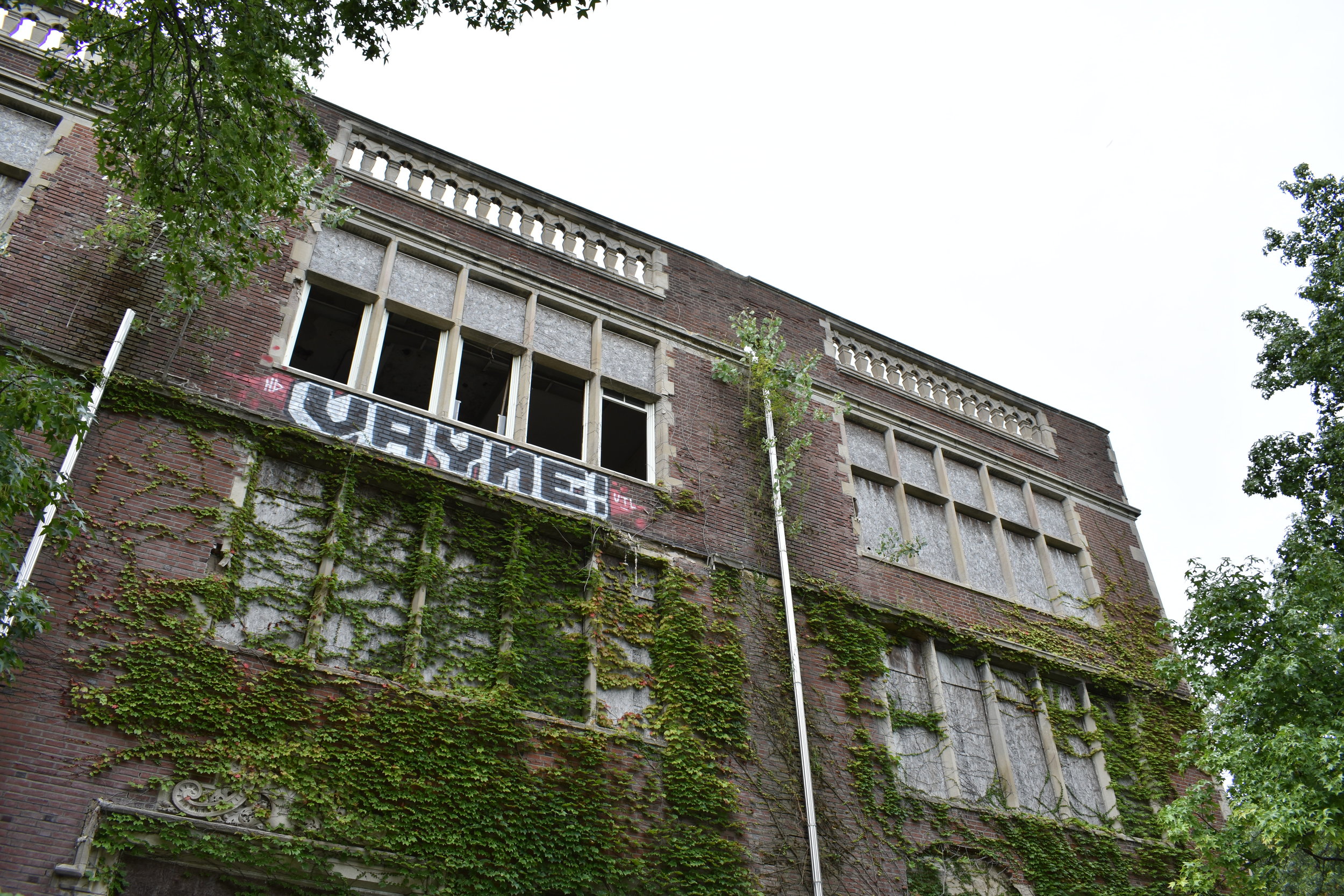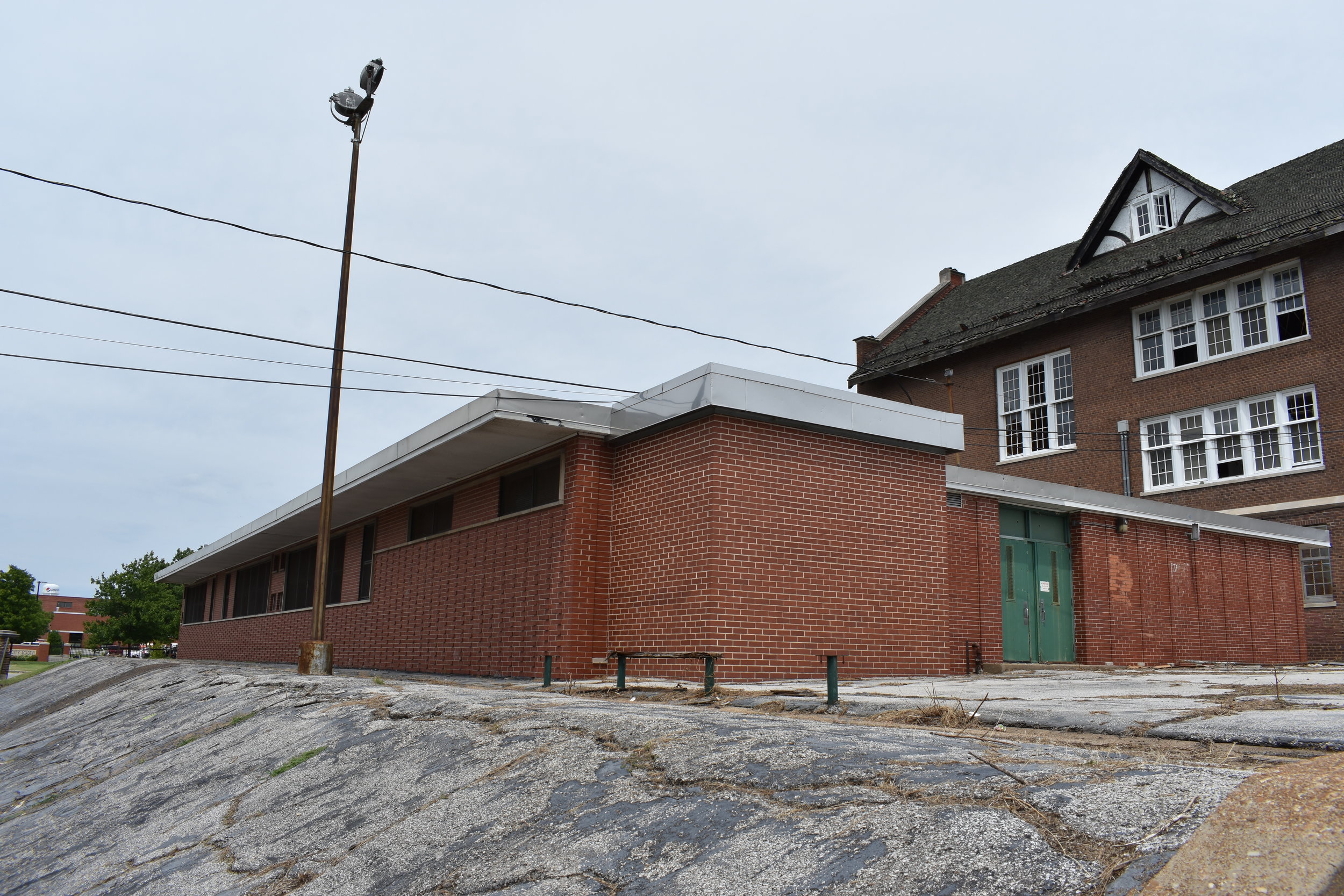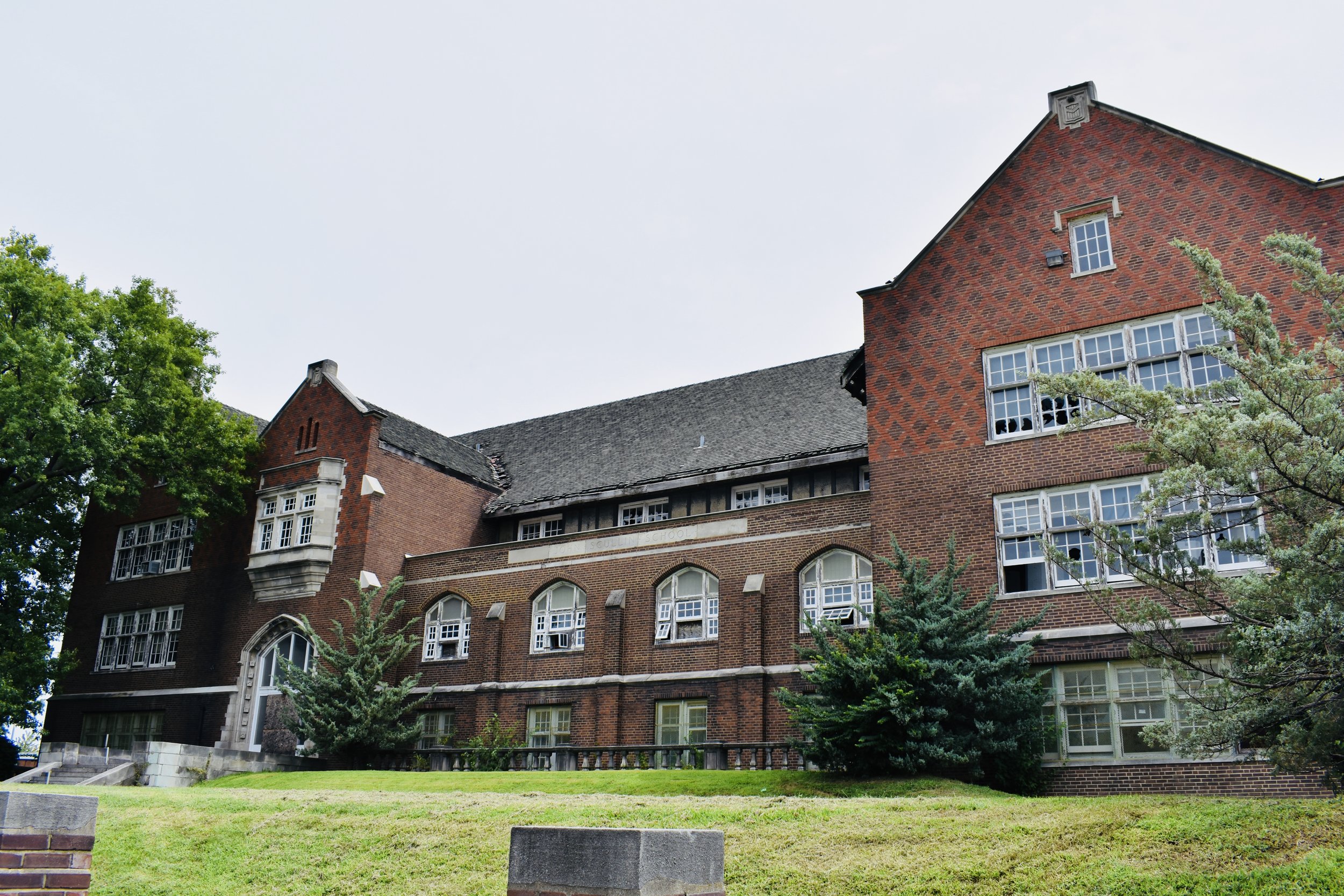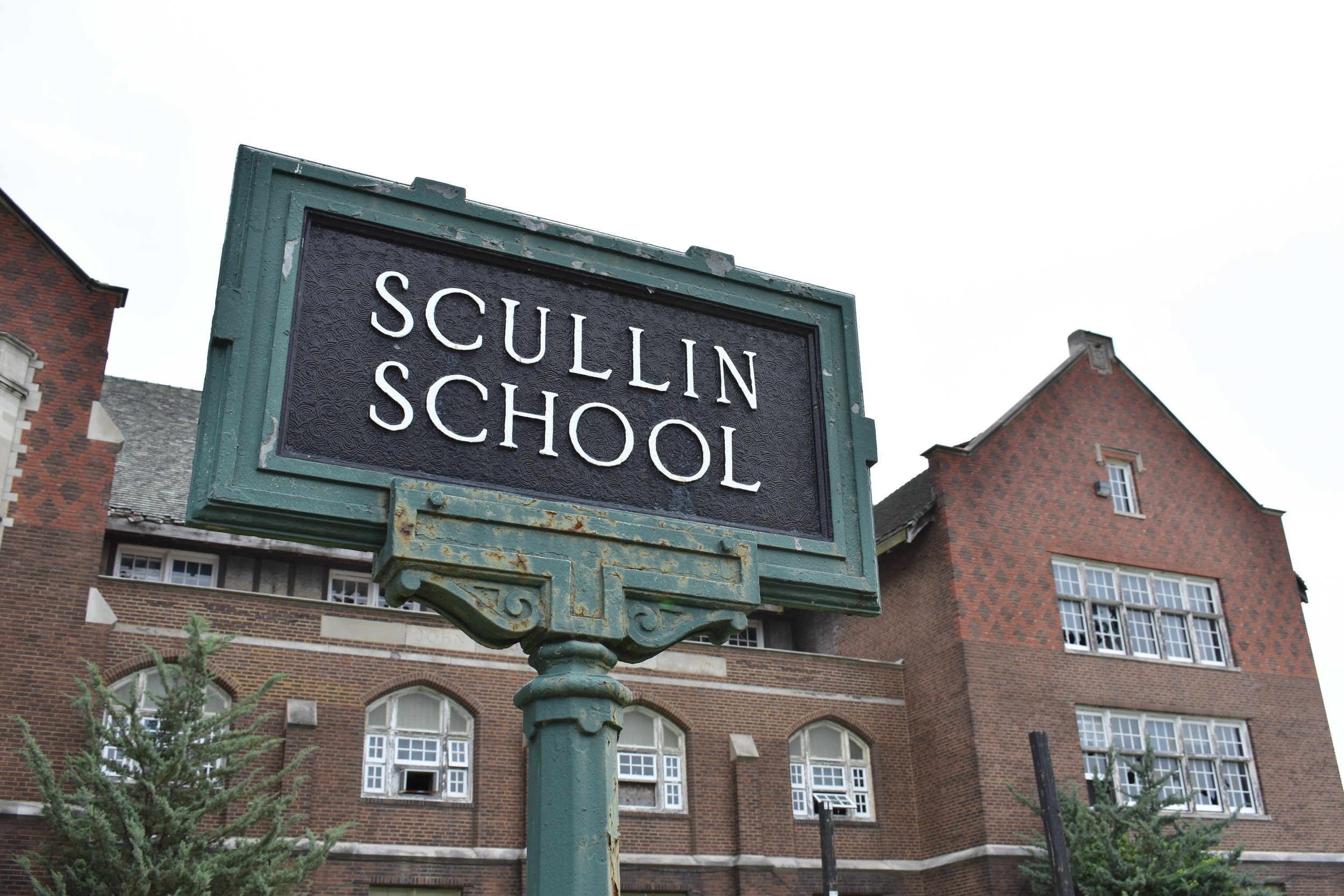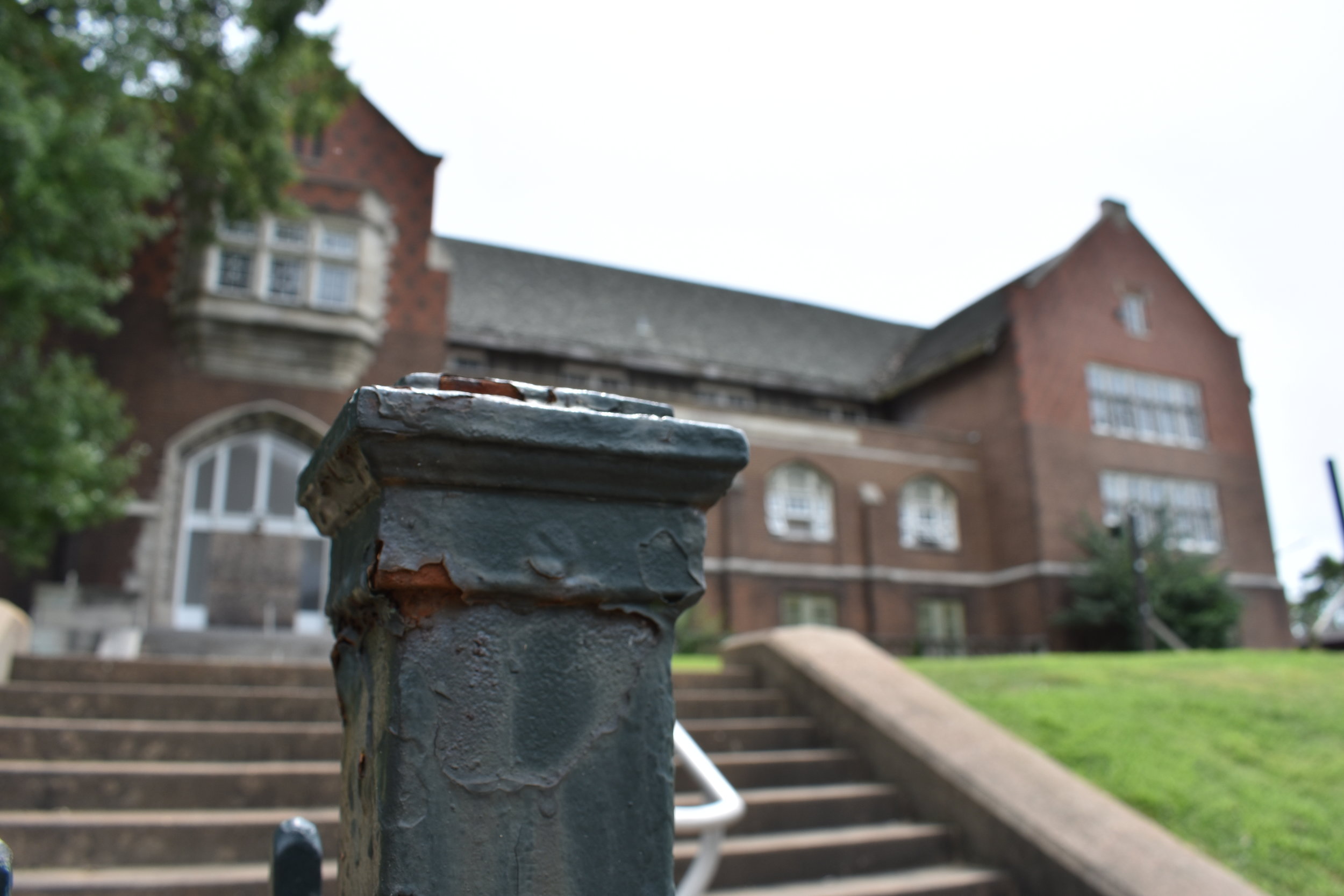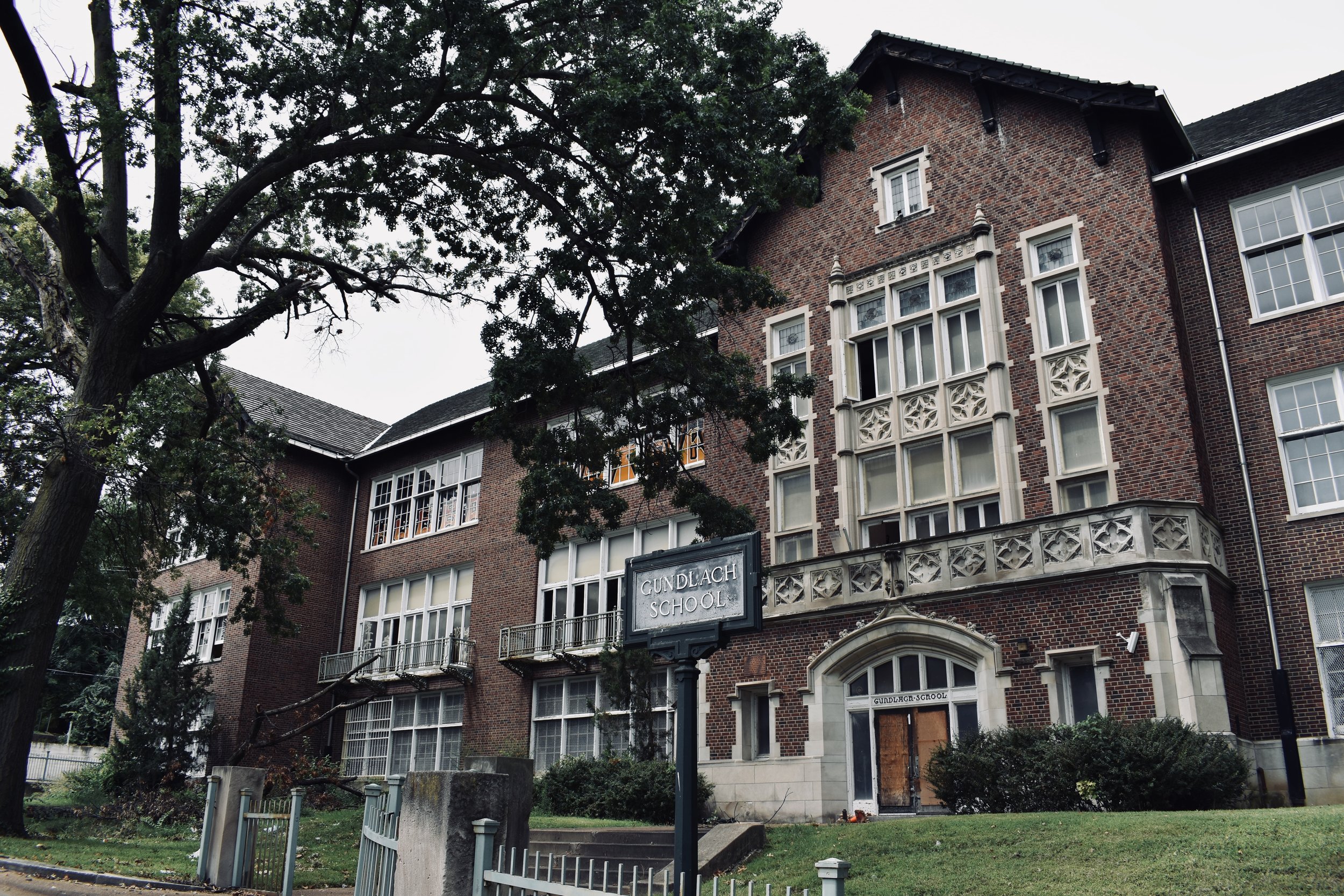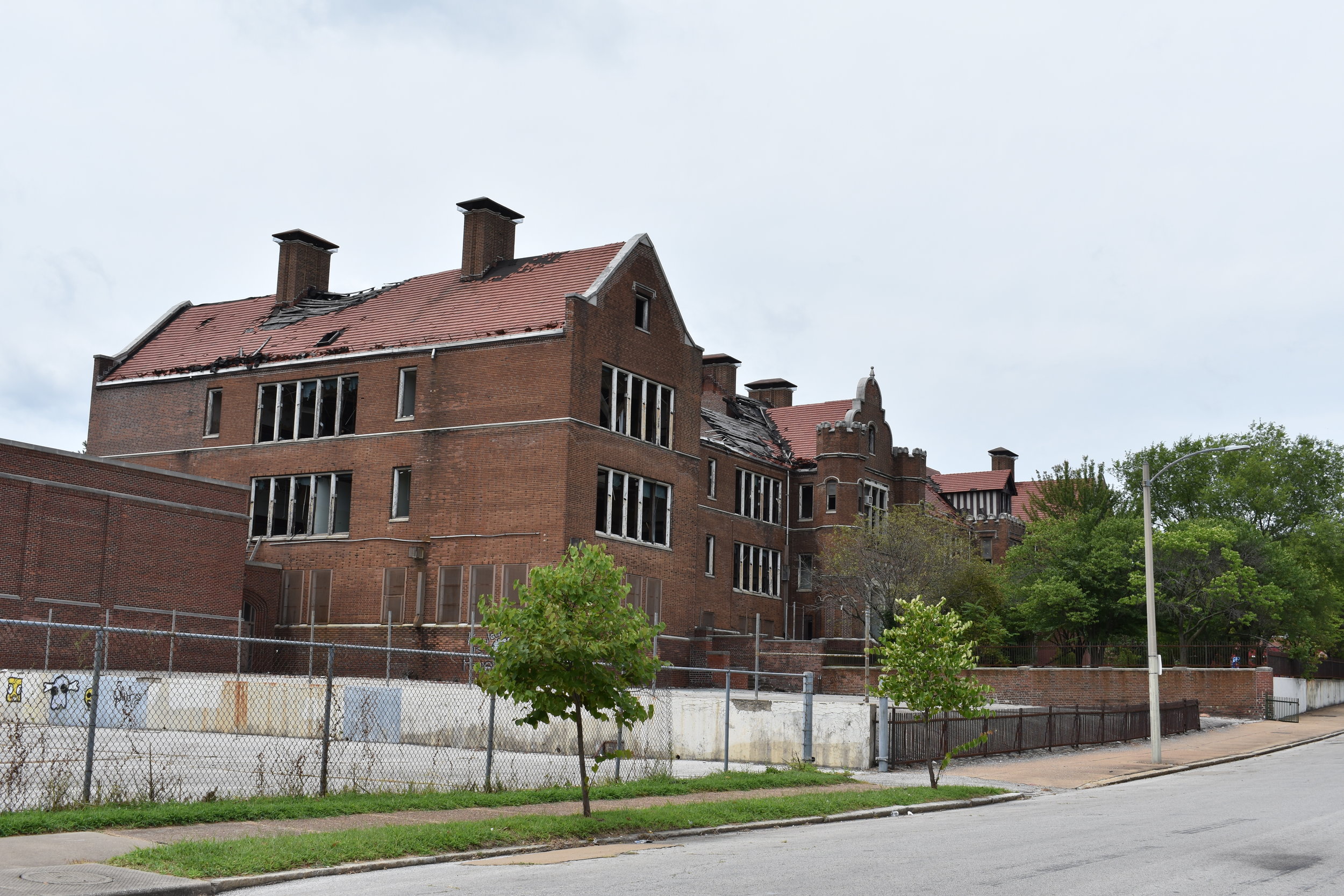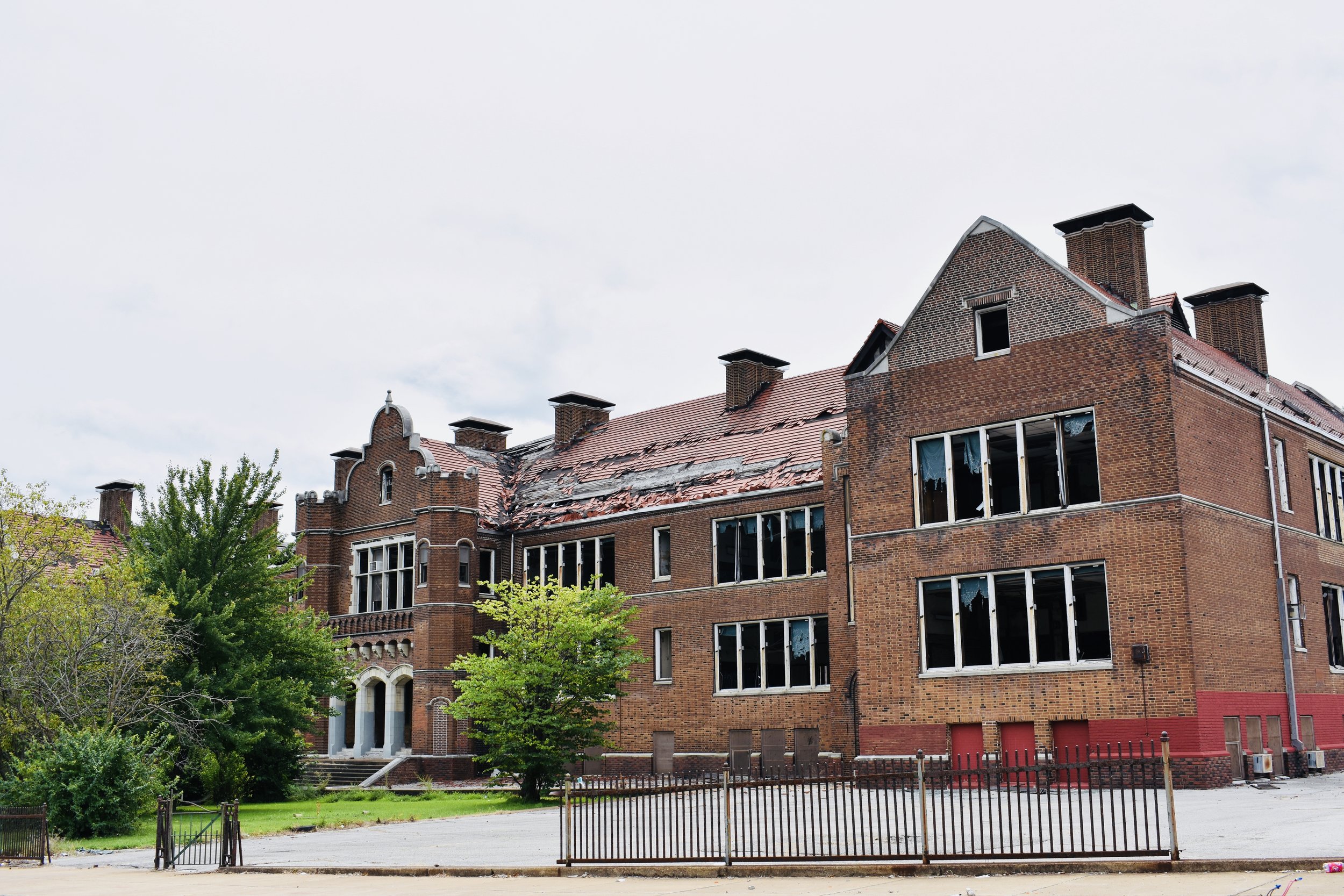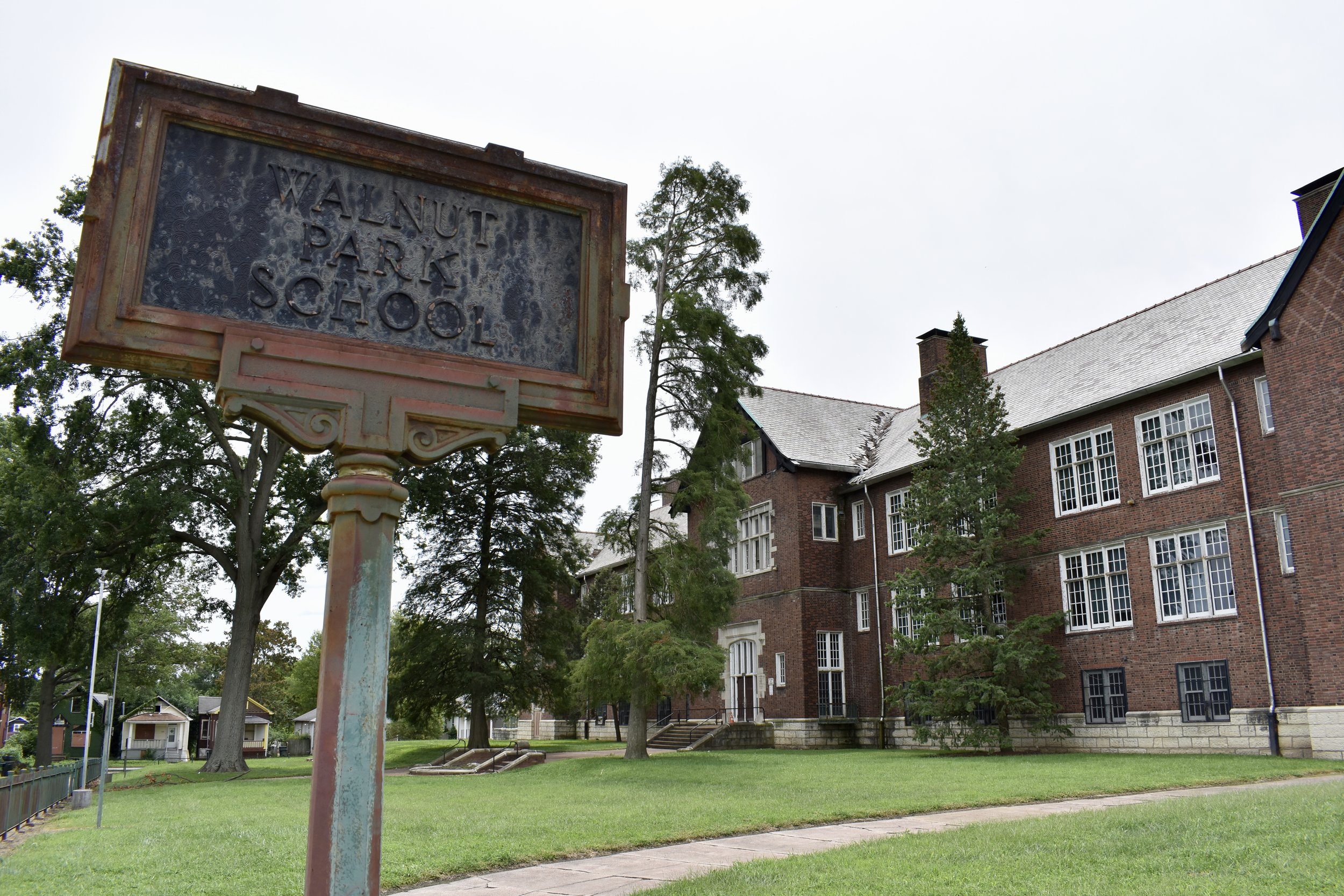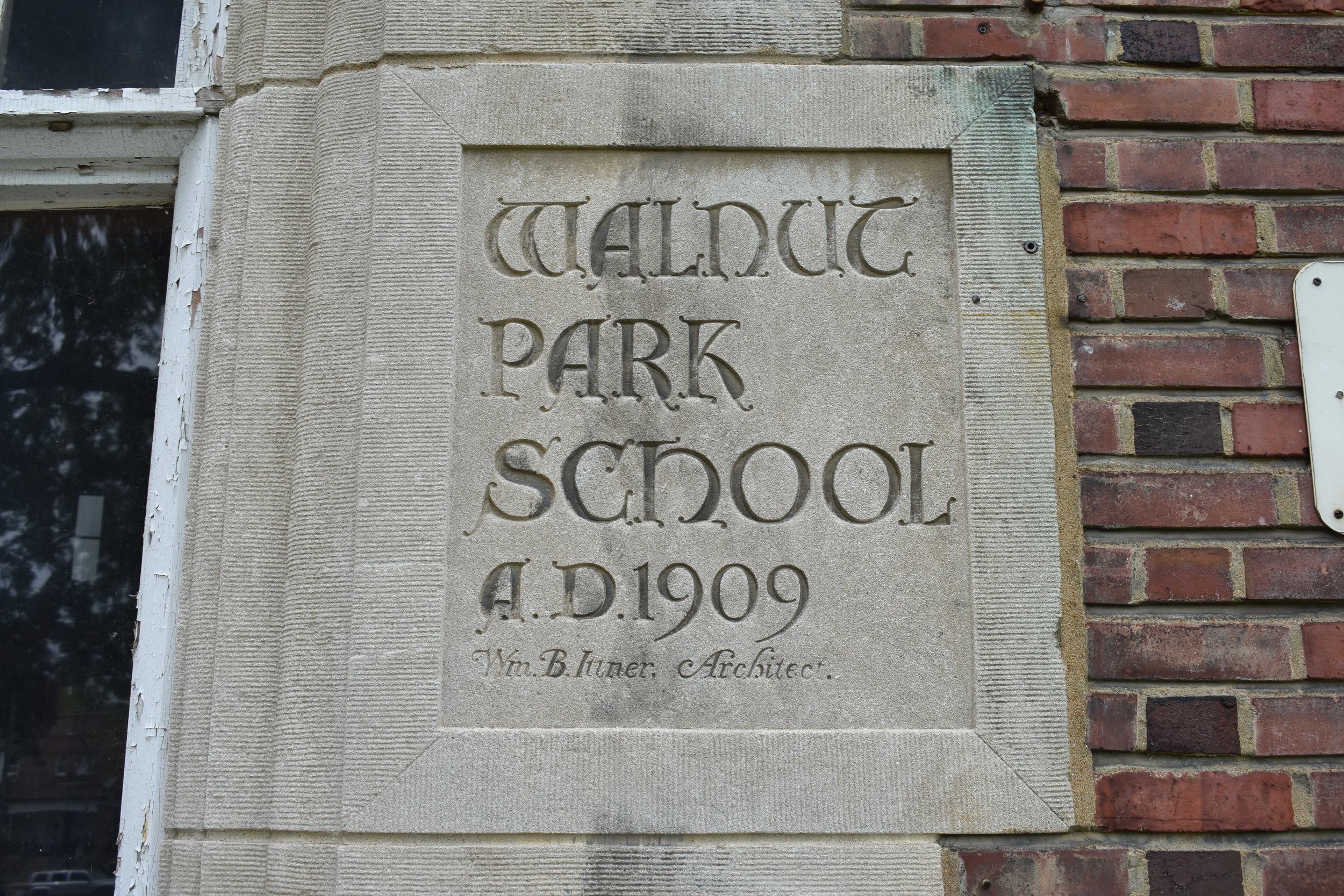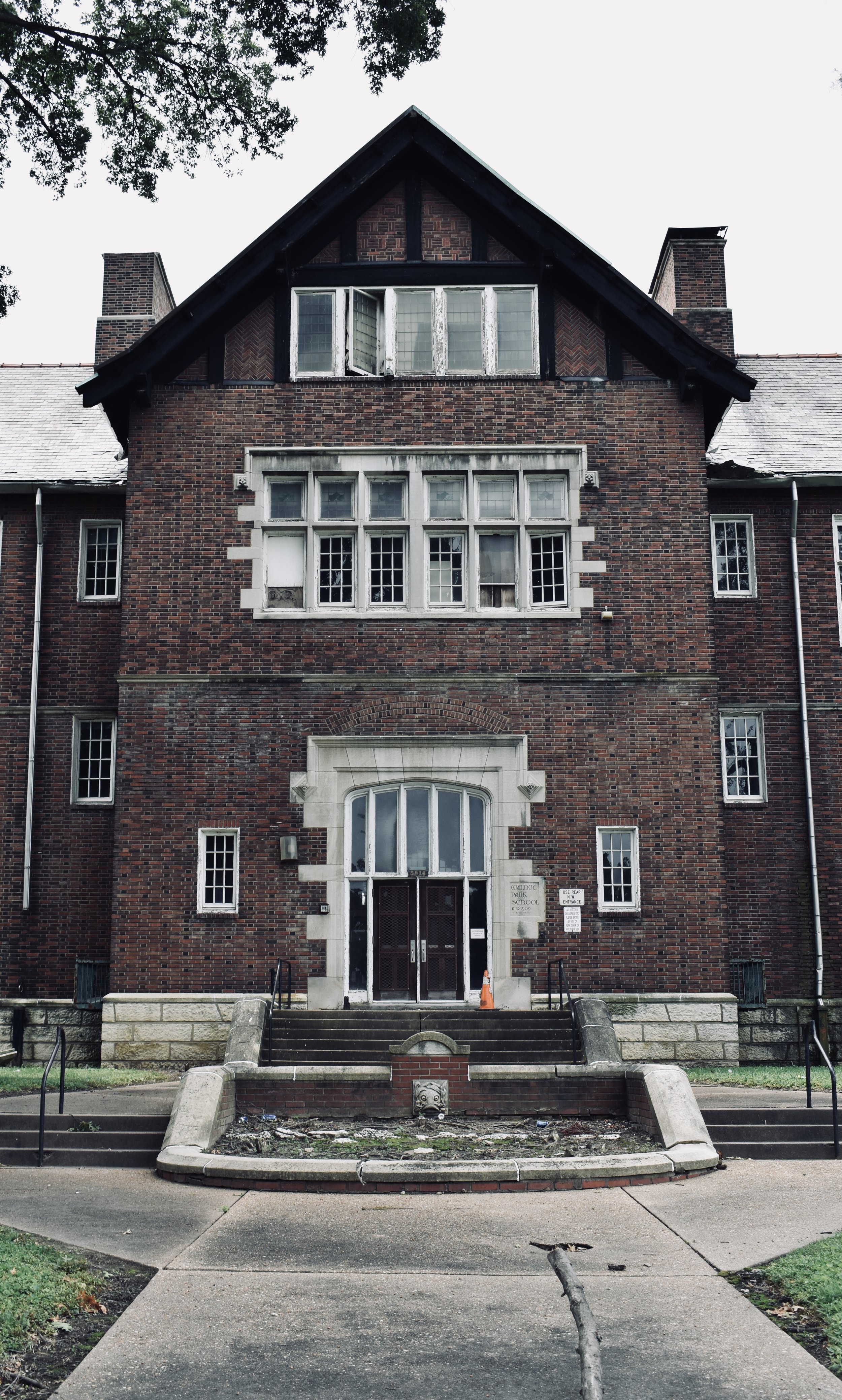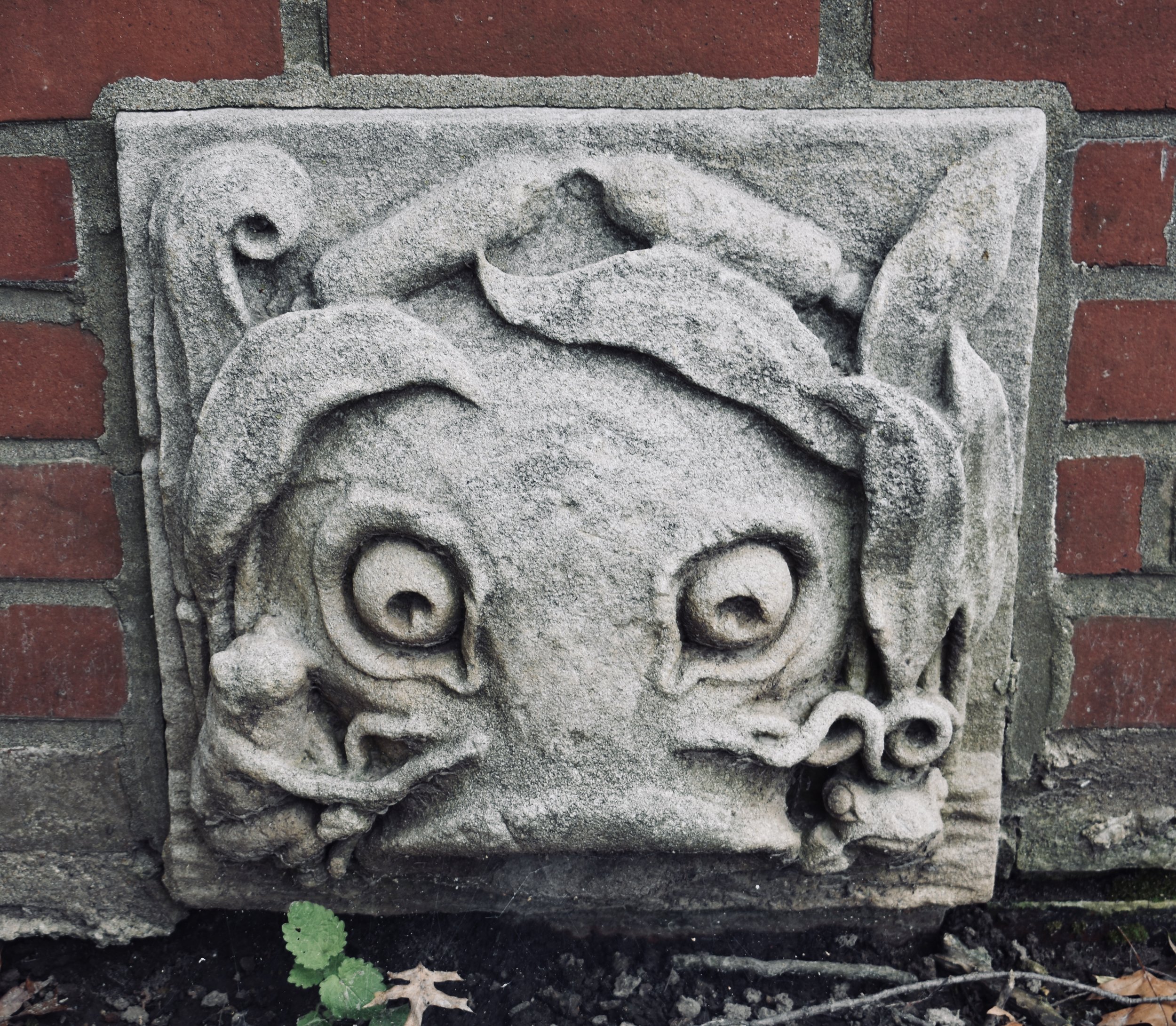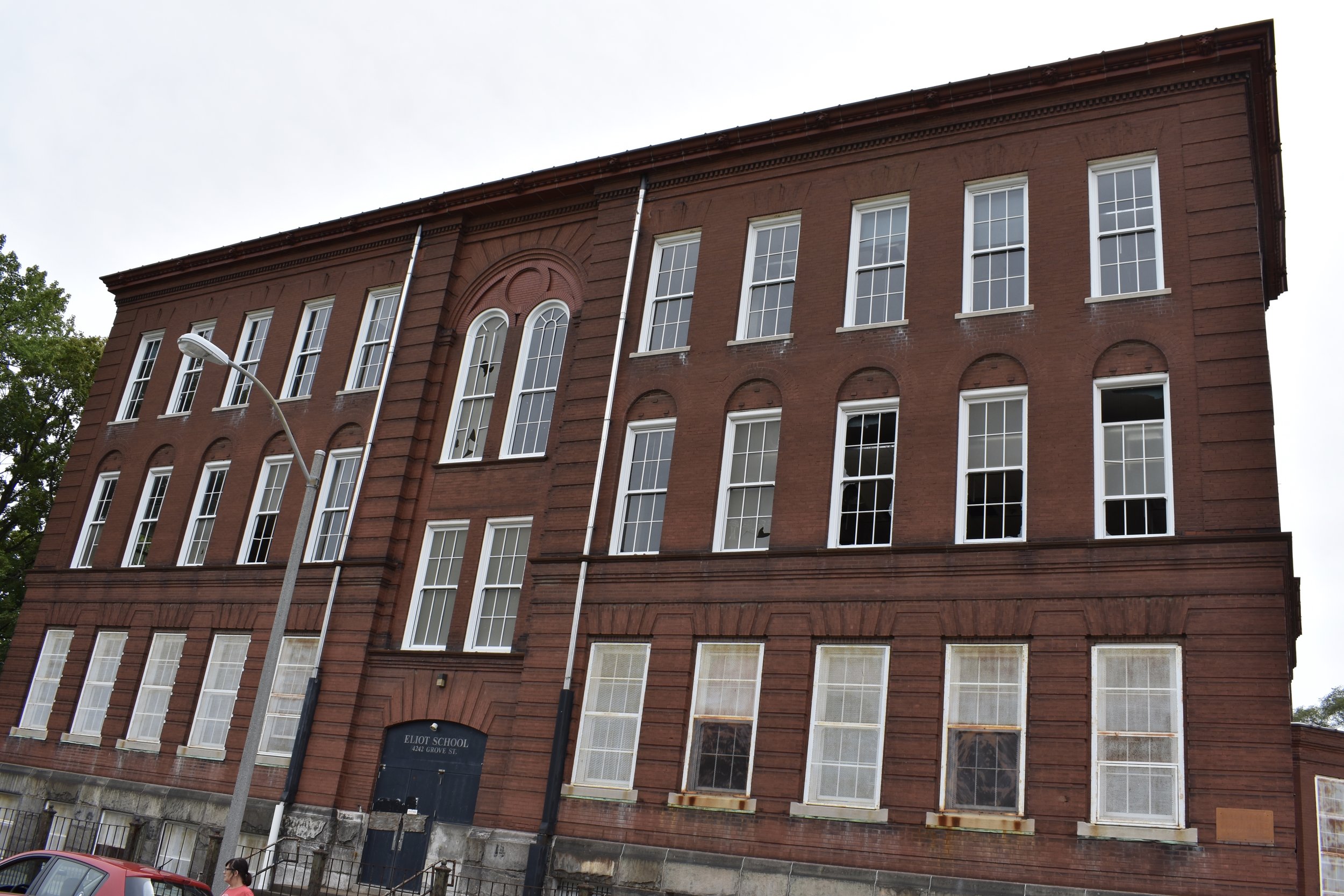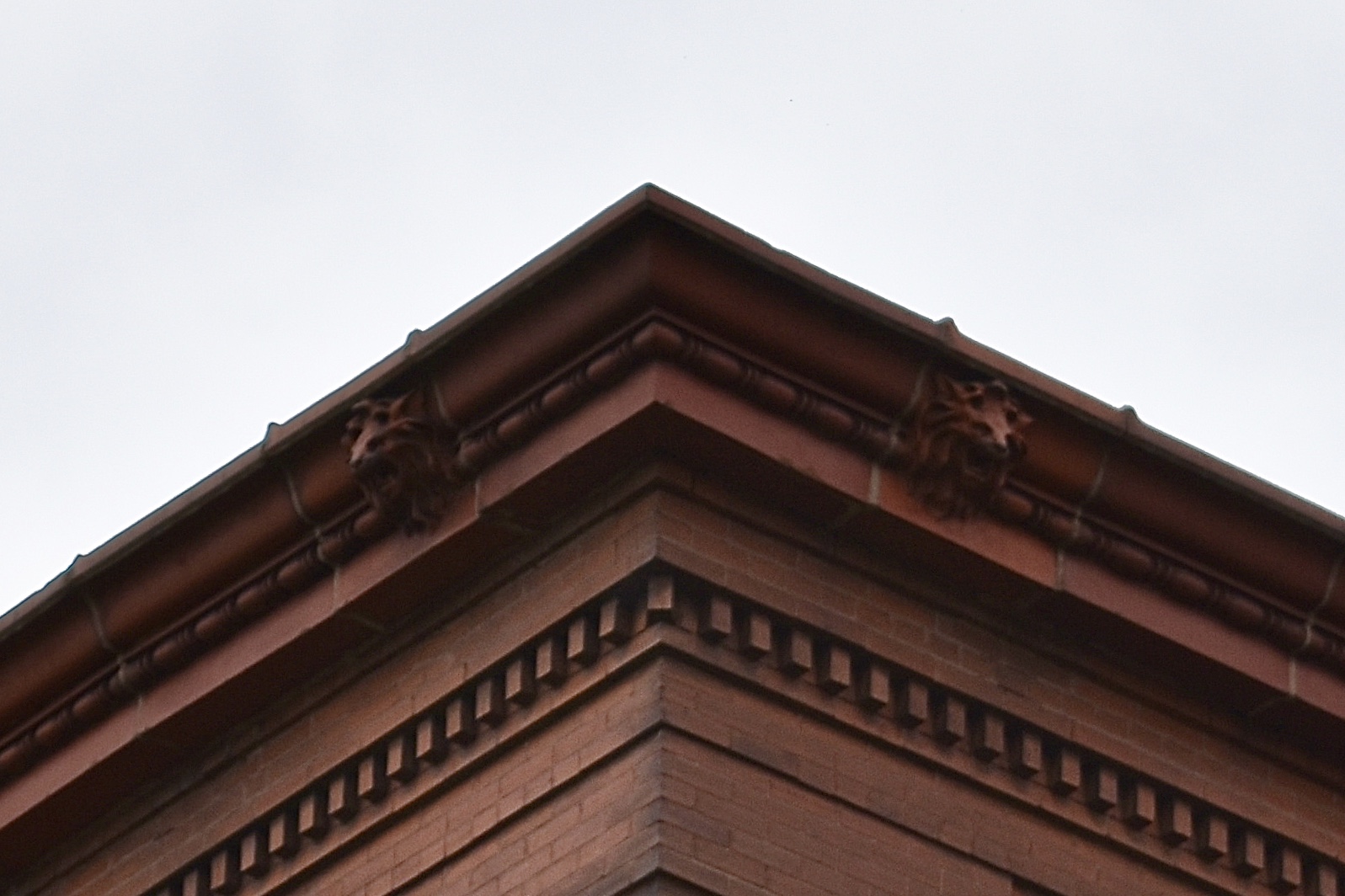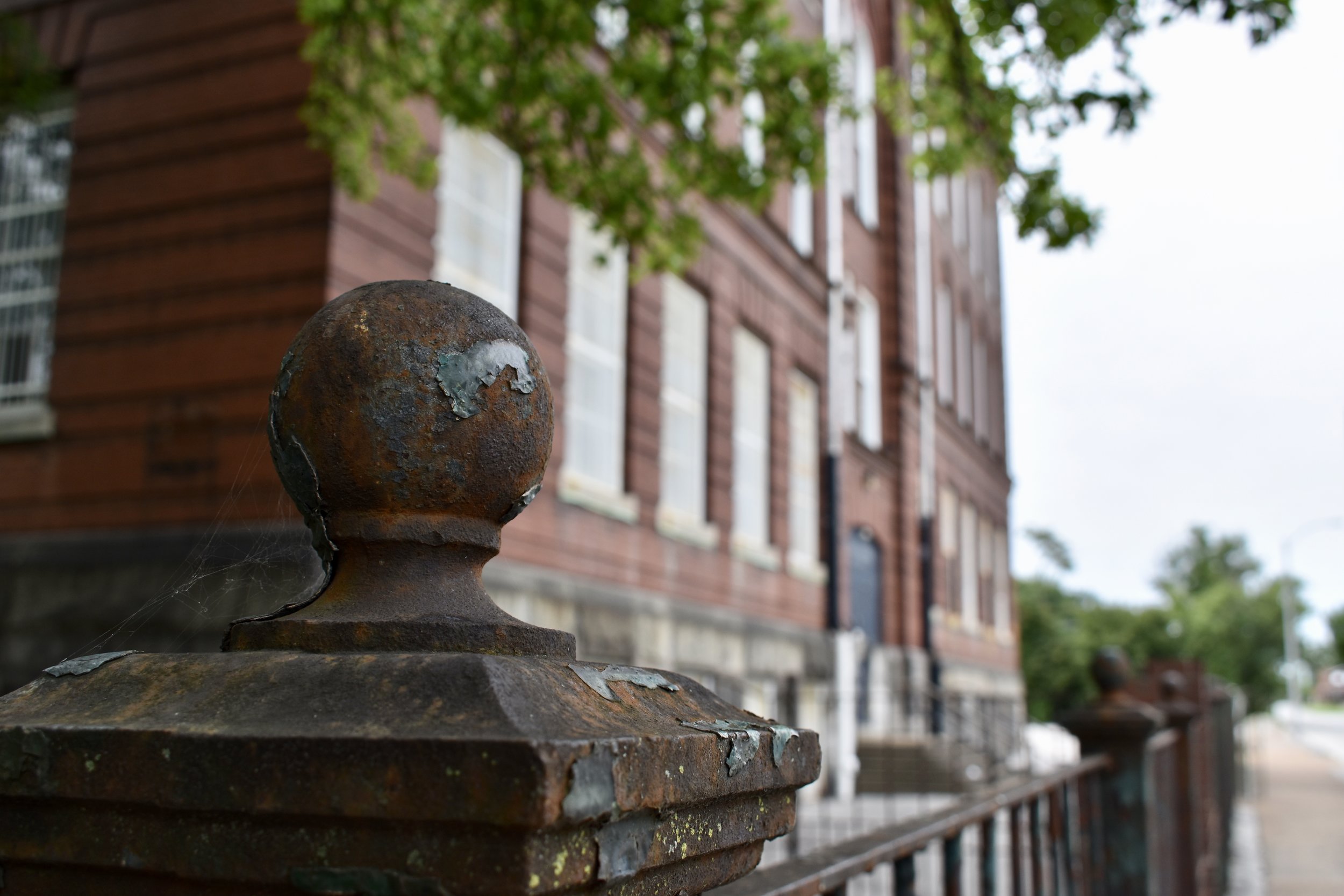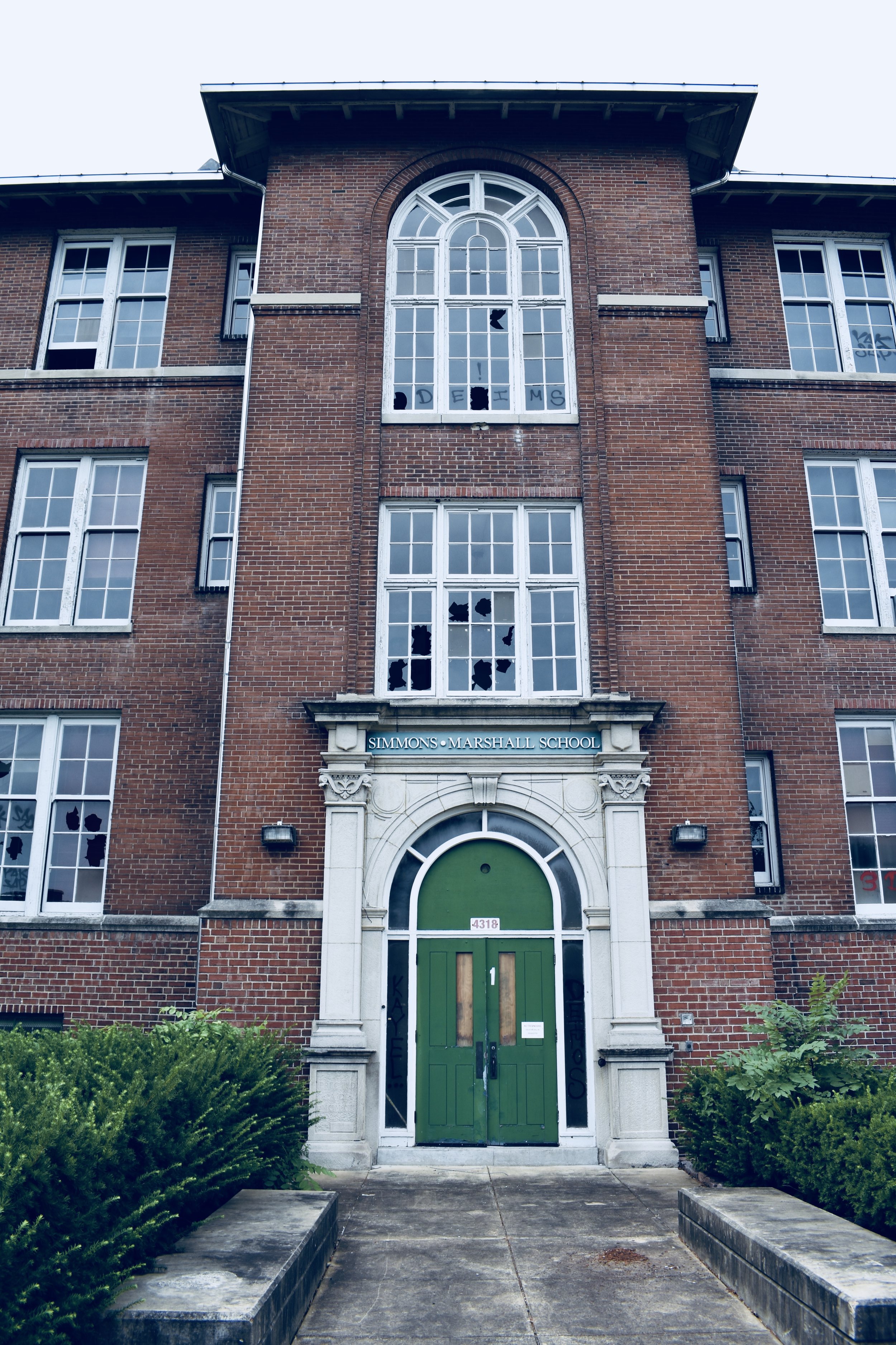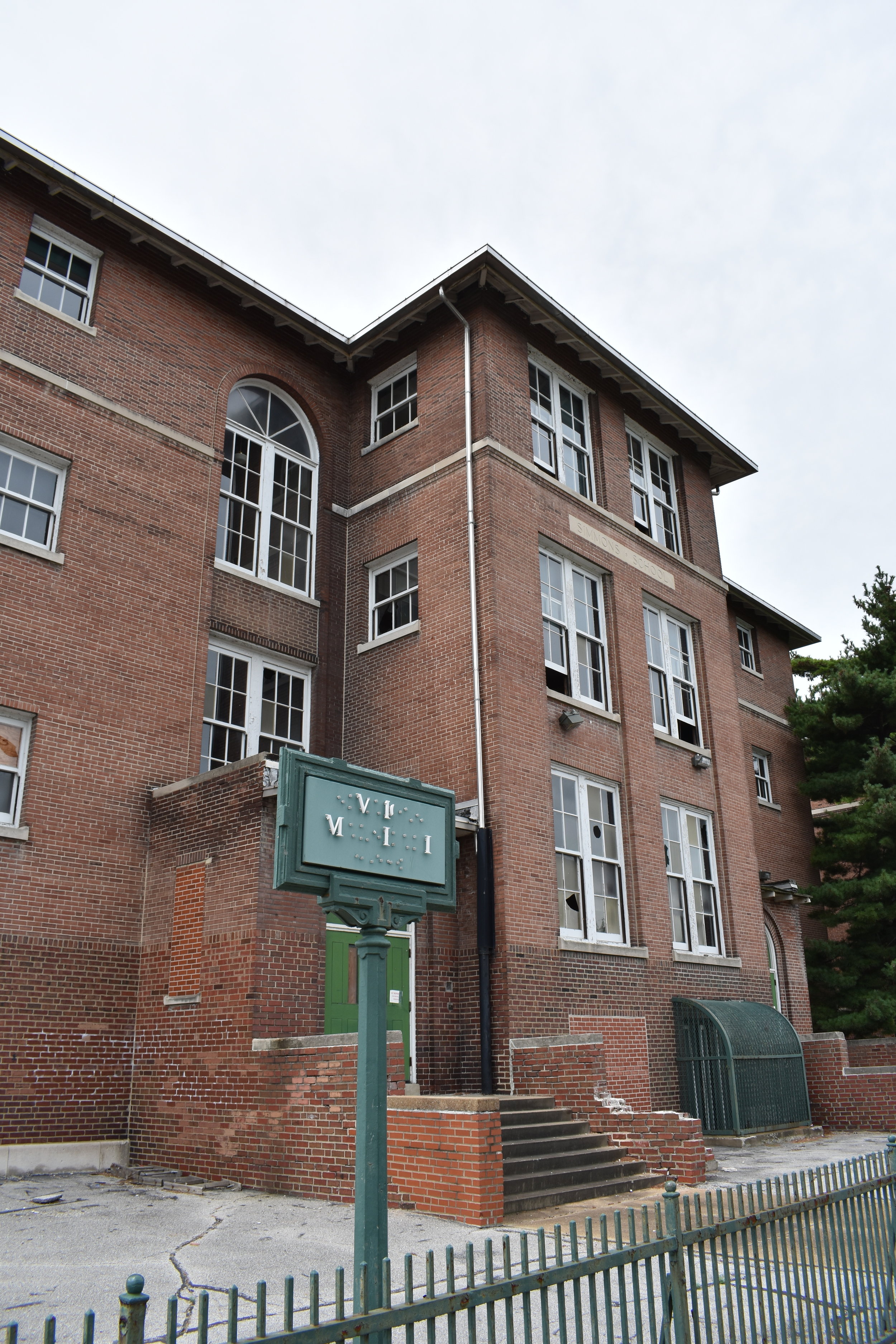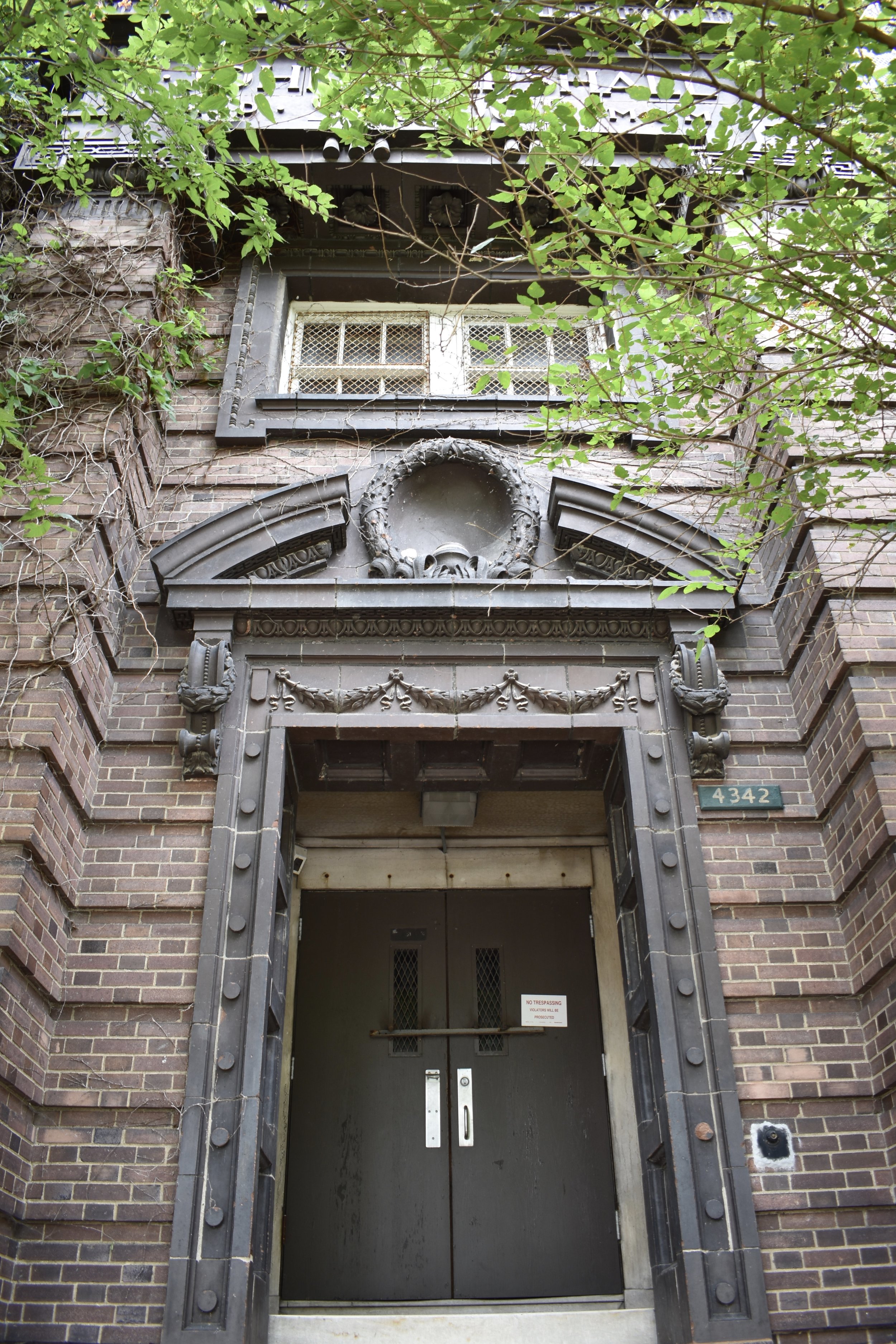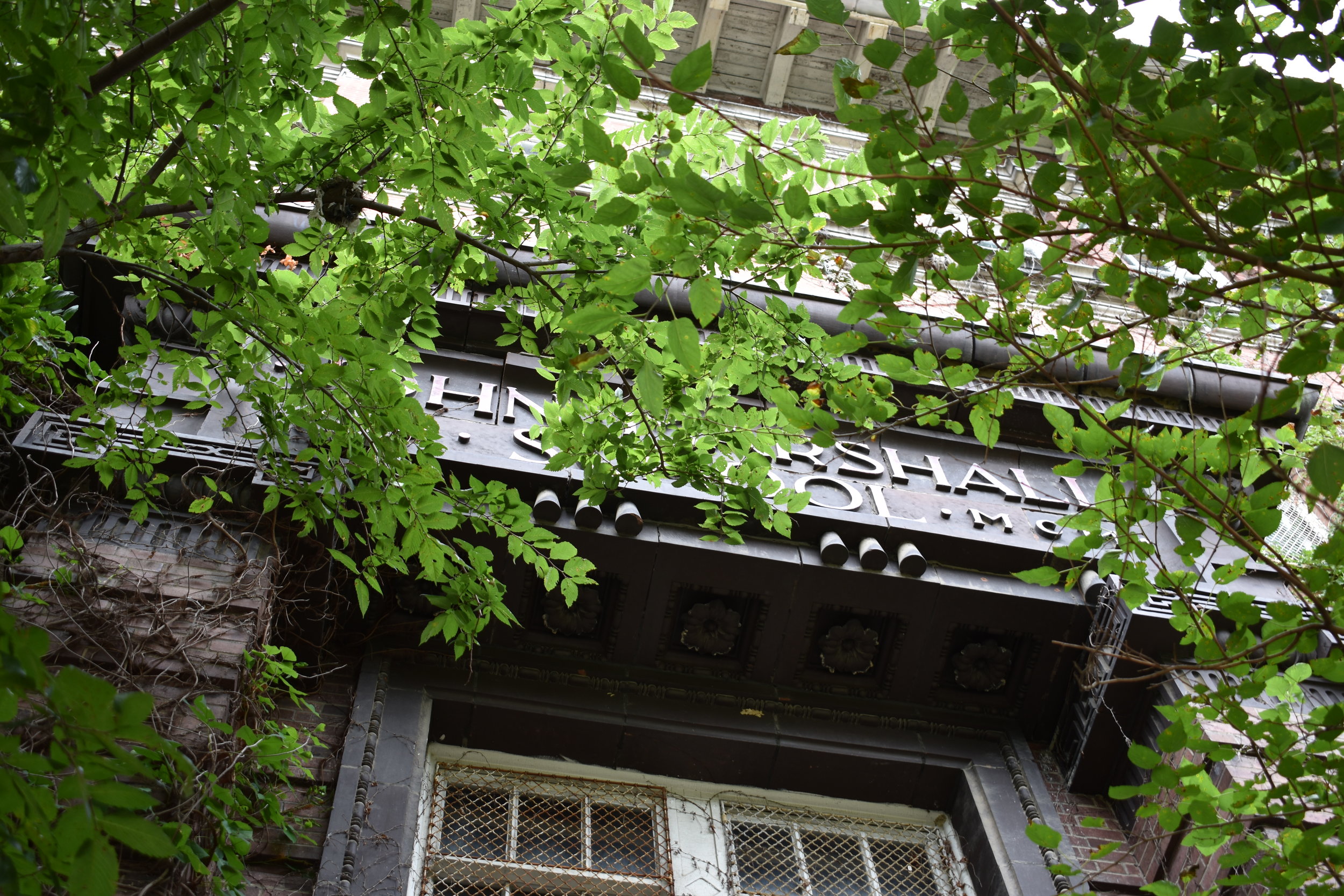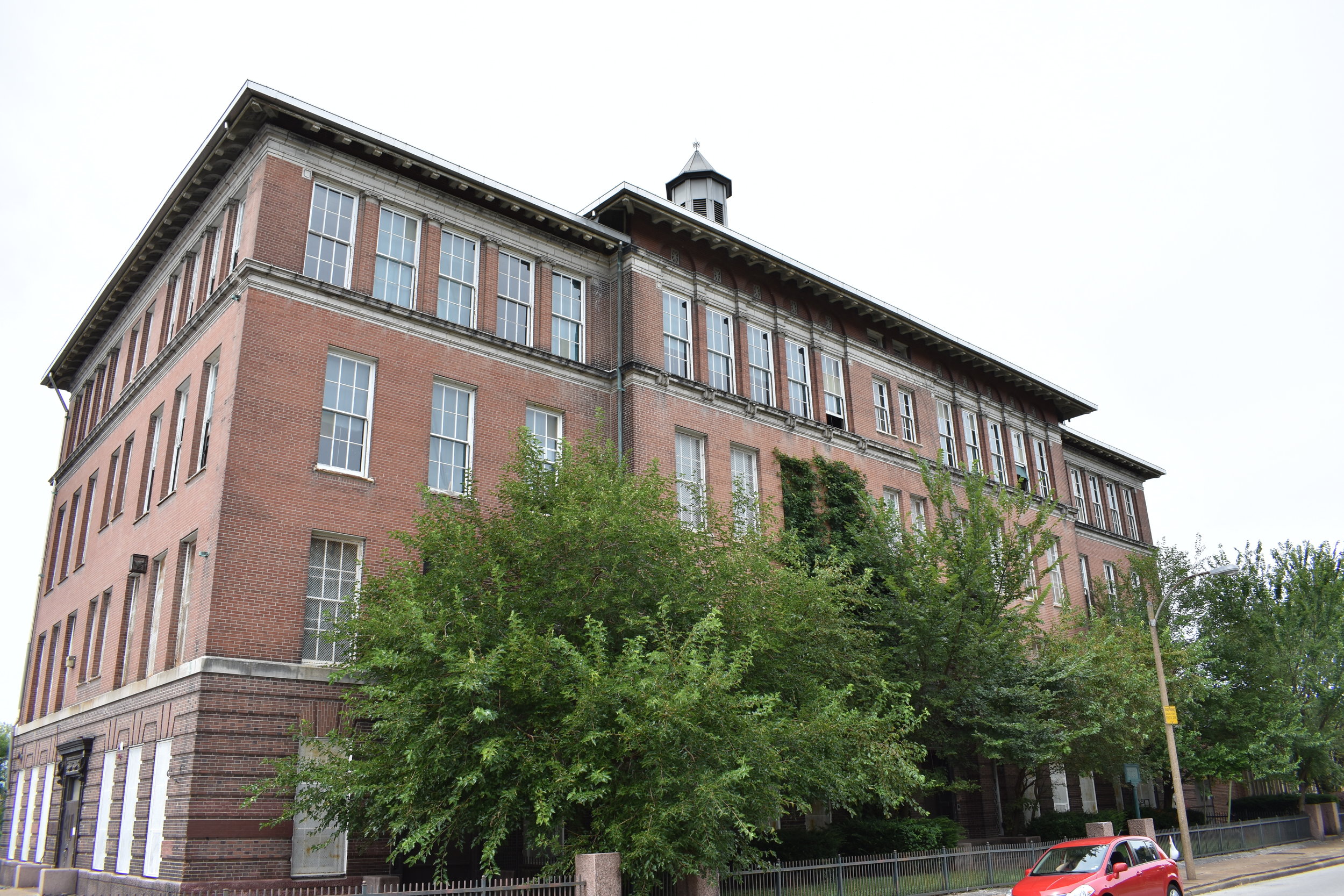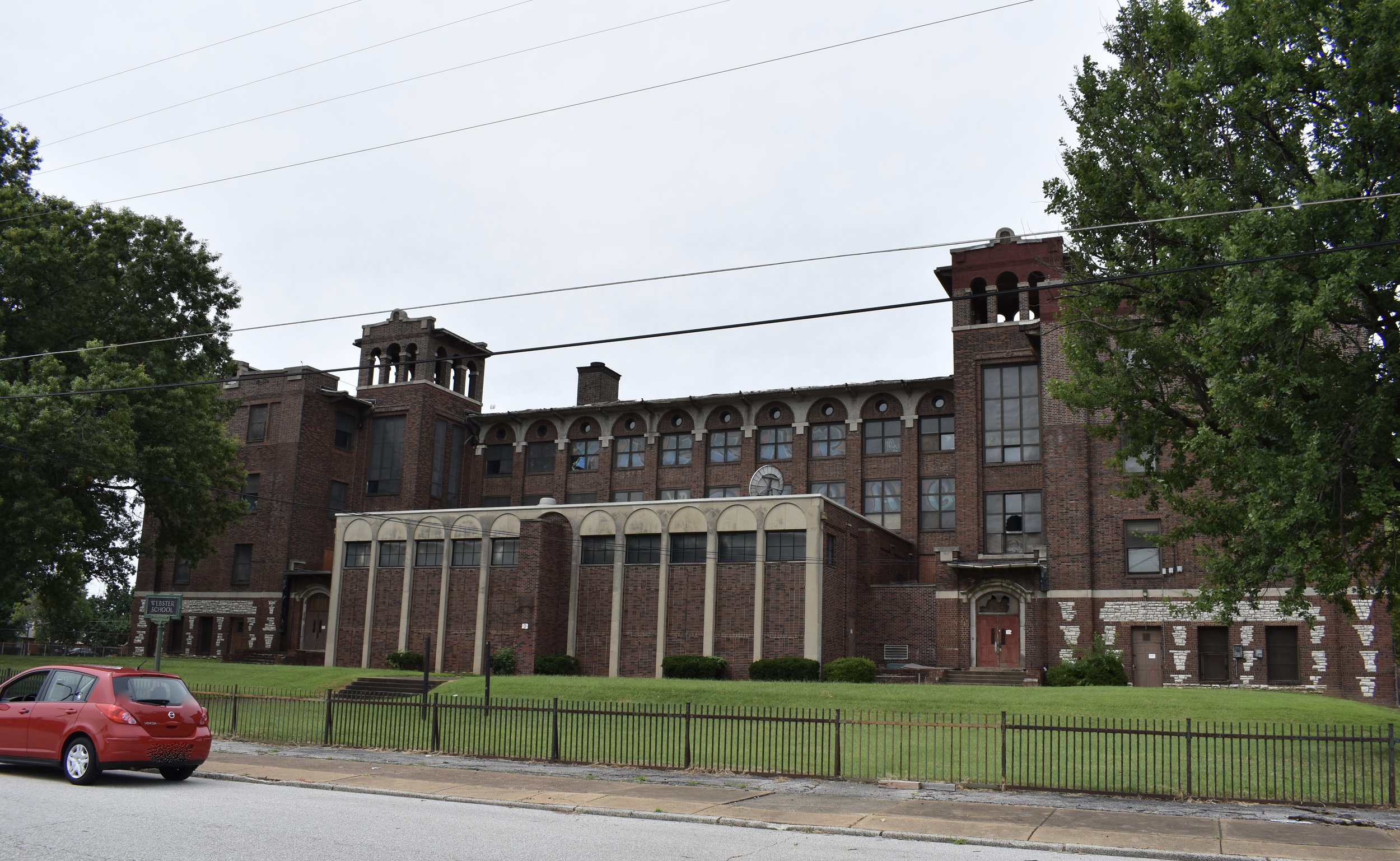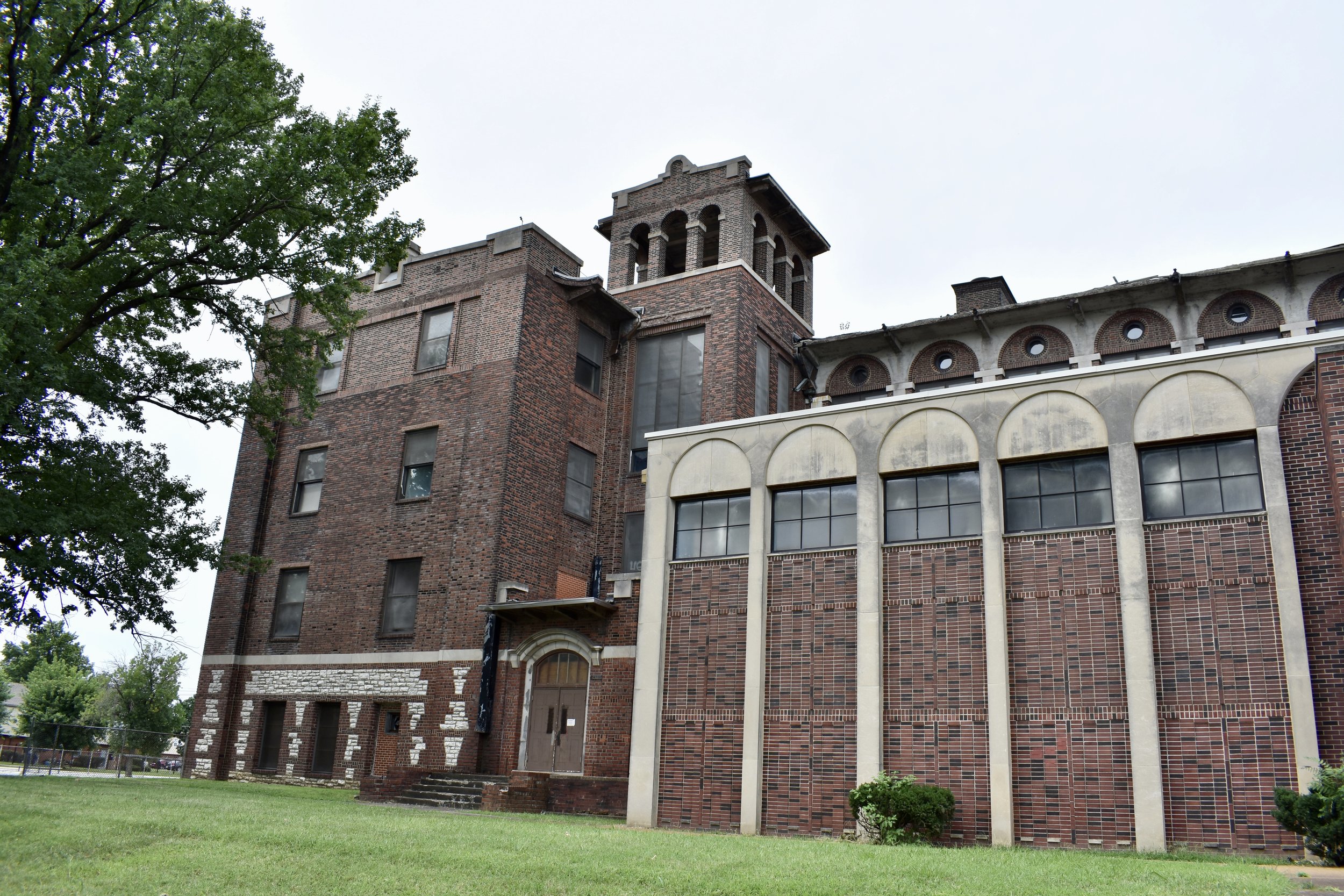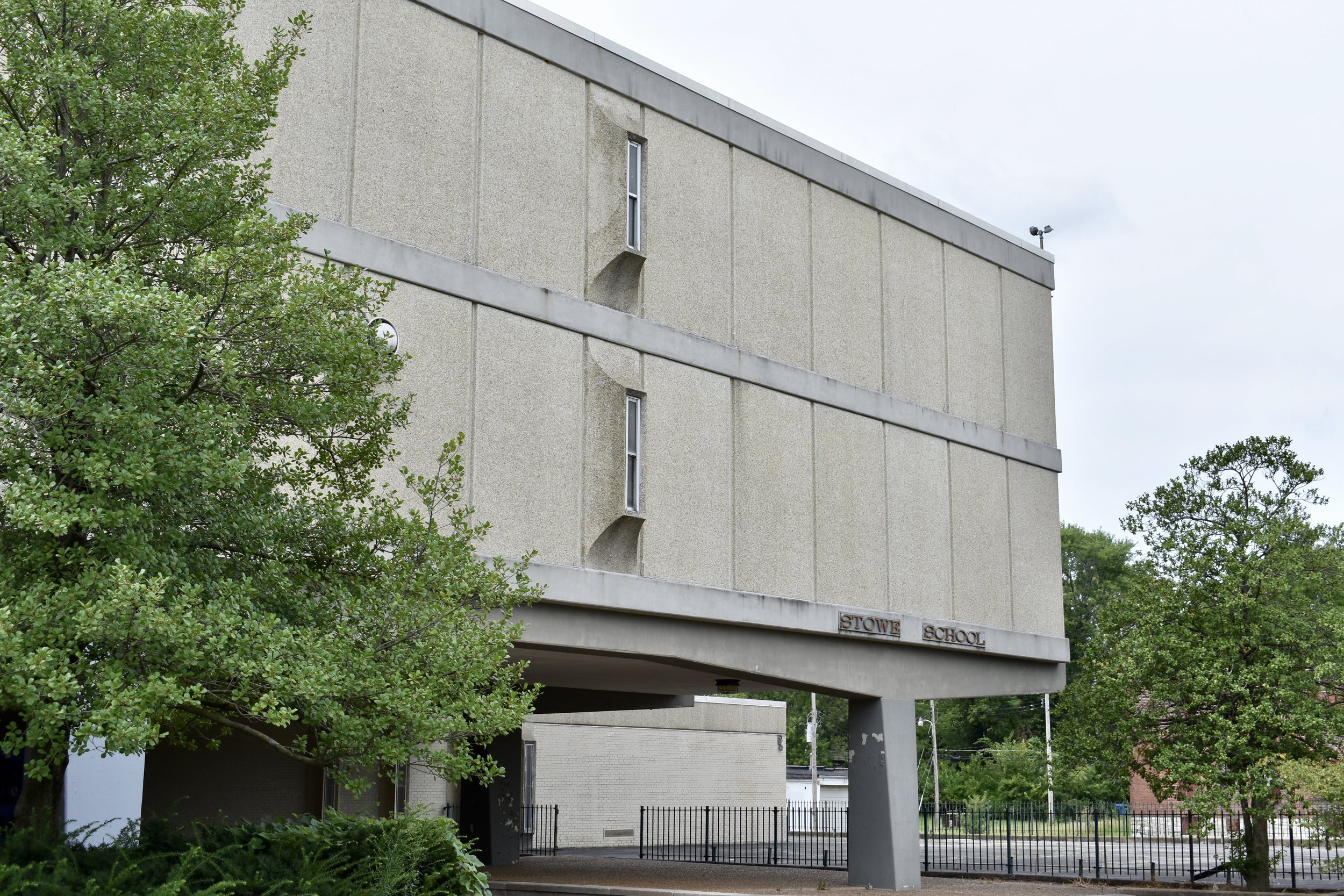One of the things I’ve come to love over the years exploring St. Louis are the schools. We are blessed to have such beauties from the brick era. Yeah, we’re blessed, but we need to invest.
The new-ish schools are not nearly as inspiring, but the William B. Ittner, Rockwell M. Milligan and George Sanger schools (among others) are undeniable classics. Per the Distilled History blog, there are 48 Ittner school buildings in St. Louis, and a couple in the suburbs.
In fact, the post on Distilled History by Cameron Collins in August, 2012 might be one of the best I’ve seen. Much has been written and documented on these schools. There is a bunch of well researched info available in the US Department of the Interior National Park Service registration forms to get buildings on the National Register of Historic Places. An example can be found HERE.
Another great read is from Chris Naffziger in 2018, published in St. Louis Magazine “Lost, saved, and caught in limbo": the fate of St. Louis’ early schools”.
The schools were on my mind when I recently did a scooter ride through every street in Hamilton Heights to update the neighborhood post I published ten years ago. Some properties are gone to the elements, many are on their way to the landfill, others are highly endangered.
Hempstead School was one of the key buildings that caught my eye. After a few clicks and an hour of reading, I got sucked into the remaining surplus schools that are available for sale by SLPS.
These schools have to be saved to preserve our legacy of 19th and 20th Century architecture. I wanted to re-connect with some of them that I haven’t been by in years.
So many schools have closed over the years as the population plummeted. The St. Louis Public Schools (SLPS) had a surplus of schools following the closures. These surplus properties are listed on the SLPS Surplus Properties website; there are currently sixteen schools listed for sale and two under contract.
Prices range from $107,000 for the Ashland Branch to $2,352,850 for Cleveland High School, the only school available south of Delmar Boulevard.
The average is $473,203 and the median is $348,948. What bargains we have here in St. Louis.
In my time living here, many of these beautiful schools have been saved, renovated and upgraded for new uses. Gratiot, Sherman and Lafayette are just a few that come to mind. Clark School is currently undergoing a renovation in the Academy Neighborhood. Twenty one total sales have taken place. You can read the full list HERE.
Again, you may notice from the list above, there is only one South City school remaining: Cleveland High. 15/16 are north of Delmar, 13/15 north of MLK Drive.
Two schools are listed as under contract, the former Bannaker School in Midtown (ca. 1940) and Turner School (ca. 1940) in The Ville. I’m not sure what is planned for these properties, but they are both nice looking, stable buildings:
Bannaker School Photo Source - Missouri Historical Society (ca. 1940)
Benjamin Benneker
These are two important saves from an art deco and African-American St. Louis standpoint. Benneker, named for free African-American mathematician, astronomer, surveyor, almanac author, farmer and civil rights activist Benjamin Banneker (1731-1806). It was once called Colored School Number 5 (source).
Turner Middle School is another art deco building, constructed by the Public Works Administration in 1938-1940. It was originally occupied by Stowe Teachers College, a college for black educators. It was named after Charles Henry Turner (1867-1923), an educator and behavioral scientist who overcame racial barriers in American academia and ended up publishing over 20 scientific papers. Turner settled in St. Louis in 1908 as a science teacher at Sumner High School until 1922 (source).
Charles Henry Turner
Both of these schools are important, and I’m happy to see they are under contract. I reached out to the head of the SLPS surplus schools to get information on the new owners, but he cannot disclose the buyers since they are still under contract.
This little bit of research is a reminder that not just the Ittner/Milligan schools matter, there is so much history here, we need to prioritize these remaining schools for renovation and reuse.
There is something about this section of the Ville Neighborhood that is just so beautiful and perfectly laid out, and still existing in a relatively stable state.
When I first did my Ville Neighborhood tour back in 2010, I was in awe of the beauty here.
It will blow your mind, it is nearly perfect view of the neighborhood from the Sumner High School soccer/football spectator stands where I’ve attended several Metro High Panther soccer games.
There are two places in North City that stand out to me as nearly perfect from an urban design and architecture standpoint. This is one of them, the other is in St. Louis Place, and I’m going to do a separate post on that scene.
So, I am thrilled to see Turner Middle School under contract. It will be a major shot in the arm for the neighborhood, city as a whole and this most perfect place.
Not only do I love the St. Louis School buildings, I love a list. So I decided to photograph each school on the for sale list and make my own “favorites” list ranking them on architecture, importance and biggest wins for the city as a whole, including the price tag for the SLPS.
So I hit the road on a cloudy, muggy day with Shannon riding shotgun. We landed on the following list.
#1 Turner Branch - The Ville Neighborhood
I described above why this is at the top of the list, it’s the surroundings. It’s the history of this neighborhood. The section of the Ville around Sumner is such a great scene. While this school is not overly ornate or unique, it is a still a brick beauty, and at $155,045, a steal.
This building is on the newer side. Of the 16 schools for sale, only four are newer. It is one of two on the list that are built in the 1920s (Scullin).
Turner Branch is the 1924 part of Turner School, formerly known as the Turner Open Air School for Crippled Children. It’s built in the Classical Revival style, by R.M. Milligan. It is on the National Register of Historic Places.
There are some great photos of the interior in the Missouri Historical Society Collection.
Notice the praying going on before lunch, and the glass milk bottles in the first one (circa 1944).
This one, paired with Turner Middle School would bring a tremendous amount of investment to a block that is among my favorite in all of St. Louis, so it’s #1 for the momentum potential.
#2 Euclid School - Fountain Park Neighborhood
The oldest school on the list, built in 1893, only one of three from the 19th Century. Due to its age, this one is not a Milligan or Ittner building, rather August Kirchner designed this one. It is gorgeous and has some similar Romanesque features to Adams School in Forest Park Southeast (circa 1899).
If you are looking for pictures of this one, you might be better off searching for Washington School, its’ first name. It was changed to Euclid School later.
Photo Source - Missouri Historical Society (ca. 1916)
Euclid is on a street with a really nice setting, with Washington Montessori SLPS across the way. It is just a couple properties north of the gorgeous homes and Fountain Park with its MLK statue and handsome fountain.
There is a home on the Fountain Park oval that is seeing a renovation complete with a new garage, signs of hope.
It was reported by St. Louis Public Radio in 2015 that the school was to become affordable artist housing, studio and performance space. Yet, it remains for sale years later.
This school is stunningly beautiful.
#3 Cleveland High School - the Dutchtown Neighborhood
Photo Source - Missouri Historical Society (ca. 1957)
Cleveland is likely the most ornate Ittner school on the list. It was named after 22nd and 24th U.S. President Grover Cleveland. This one was right at the top of both my and Shannon’s list simply because it is so beautiful and the acreage for sale with the property is right along Grand and could serve as a highly interesting mixed use new construction with historic renovation to bring development to a rapidly declining part of an otherwise high-density part of the city.
The asking price of >$2.3M is the highest asking price on the list, no other school is over $1M, the second highest being Webster School at $657,745.
It is the only remaining school in South City. It is massive. The price is likely so high because of the former sports field along South Grand.
Much has been written about this beauty. There are two gyms, a pool and an auditorium with theater seats. It is huge, and a gorgeous building. No doubt the most significant on the list, in our humble opinions.
There is a Living St. Louis PBS video that is pretty optimistic toward attracting investors. That piece aired in 2016. I won’t post the videos of trespassers and ruin porn accounts, but they are there. There are people talking about this one, which gives it a glimmer of hope.
If saved, this would be one of the biggest wins of my lifetime in St. Louis.
#4 Baden Elementary - Baden Neighborhood
Oh boy, such a gorgeous school in a hilly location right on Halls Ferry Road. This far North City neighborhood has incredible potential and is pretty stable, all things considered. This would be a great use for apartments as the place is conveniently located near Interstates, goods and services with great access to jobs in the suburbs of North County, including UMSL.
Photo Source - Missouri Historical Society (ca. 1907)
It is eligible for historic tax credits, so there is hope. This one is fantastic.
This 1908 Ittner classic is unique for its single turret near the front doors. The diamond brickwork patterns are stunning.
#5 Yeatman/Central High School - Jeff-Vander-Lou Neighborhood
I can’t believe we ended up ranking this 5th. The school has an amazing history and is a 1902 Ittner classic.
Photo Source: Missouri Historical Society (ca. 1930)
It has a confusing naming, as there is a Central Visual and Performing Arts High School on Arsenal/Kingshighway. It was formerly named Yeatman High after prominent St. Louisan James E. Yeatman, but renamed Central High in 1927.
The school was home to much racial strife as integration took place. There is much to read on this one and likely warrants a separate post to really dig into the history.
It’s sad that the school is in such bad shape and highly endangered. We need to save these places to connect with history as well as to elevate a neighborhood that is in dire need of investment, care and attention.
Name changes are always controversial in my opinion. Yeatman was highly successful and philanthropic. The amount of stuff he got done and contributed to in his life is amazing. So to give him some props, here’s a bit on his life:
“James Erwin Yeatman (August 27, 1818 – 1901) was a bank founder and philanthropist in St. Louis, Missouri. He was a founder and president of the Western Sanitary Commission and Washington University.
Yeatman was born in Bedford County, Tennessee August 27, 1818 near Wartrace. His father, Thomas Yeatman, was a banker and iron foundry owner in Nashville, Tennessee. His mother was Jane Patton Erwin who, after Thomas Yeatman’s death, married politician John Bell. Yeatman attended private school and New Haven Commercial School then toured Europe. After working for his father in Cumberland Gap, Tennessee he moved to St. Louis in 1842.
He founded Merchant Bank and the Mercantile Library (1846) on Fourth and Locust streets. He also served as the library’s first president and founded the Missouri Institute for the Education of the Blind after being inspired by teacher Eli W. Whelan. With Dr. William Greenleaf Eliot he founded Washington University in St. Louis in 1853. He was also a founder and president of the St. Louis Philharmonic Society, founded the Provident Association organize St. Louis charities and was a founder of the Western Sanitary Commission.
In 1872 Yeatman donated property to the Catholic Church for an orphanage to serve those left behind after a cholera epidemic. The Christian Brothers began operating the orphanage in 1876 and it eventually became the La Salle Institute.
Yeatman was also involved in advocating for and running a railroad, Pacific Railroad (which became Missouri Pacific Railroad). Yeatman met with Abraham Lincoln in Washington D.C. to help counsel his dealings with Nebraska and Nathaniel Lyon.
Yeatman served on the first board of the St. Louis Children’s Hospital and of Bellefontaine Cemetery. He died in 1901 and is buried there.
The American writer Winston Churchill based a character in one of his novel The Crisis on Yeatman. Yeatman married twice and had five children. He was given the nickname Old Sanitary for his work in the field helping soldiers for the Western Sanitary Commission.”
Either way, this one needs immediate love and is already being poached of its exterior structures including the entryway rails.
It is eligible for Low Income Housing Tax Credit and Historic credits. There is a modern addition that affords more square footage for additional usage.
#6 Cupples School - Kingsway East Neighborhood
OK, I have to say, I got really excited at this one. It hit me that it is somewhat of a twin of Mullanphy School in Shaw. The chimneys, the size, the overall style. Man, this neighborhood is fine right around here and would boom if this became dignified housing. Even though Mullanphy was an Ittner, and this one is a Milligan, the similarities are there.
This 1918 beauty was named for Samuel Cupples, per a DNR application, built for $234,124.
Photo Source - Missouri Historical Society (ca. 1952)
At an asking price of $419,000, this one has newish windows and it rock solid. There is reason for hope on this one.
Here’s a slideshow to cycle through for a feel:
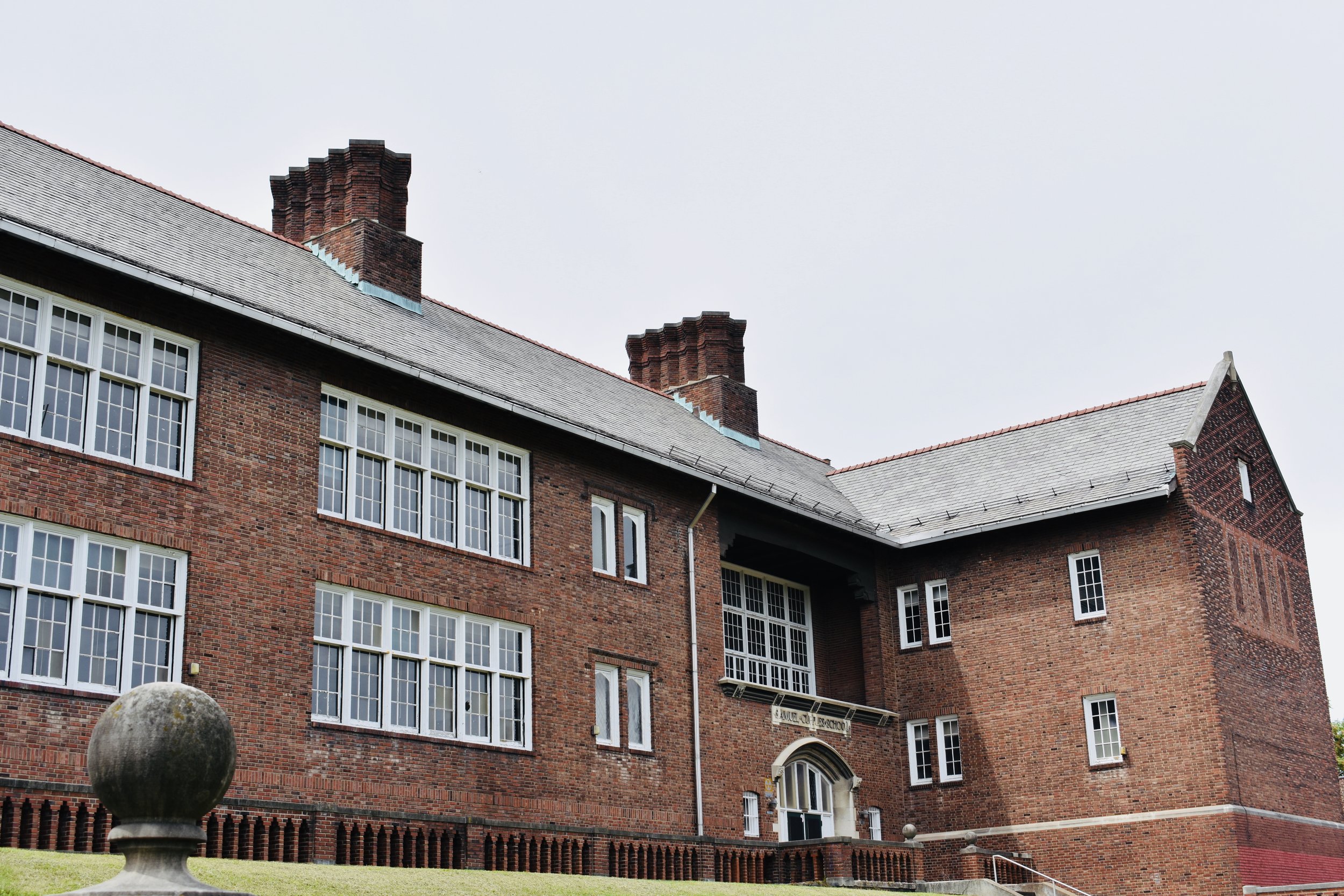
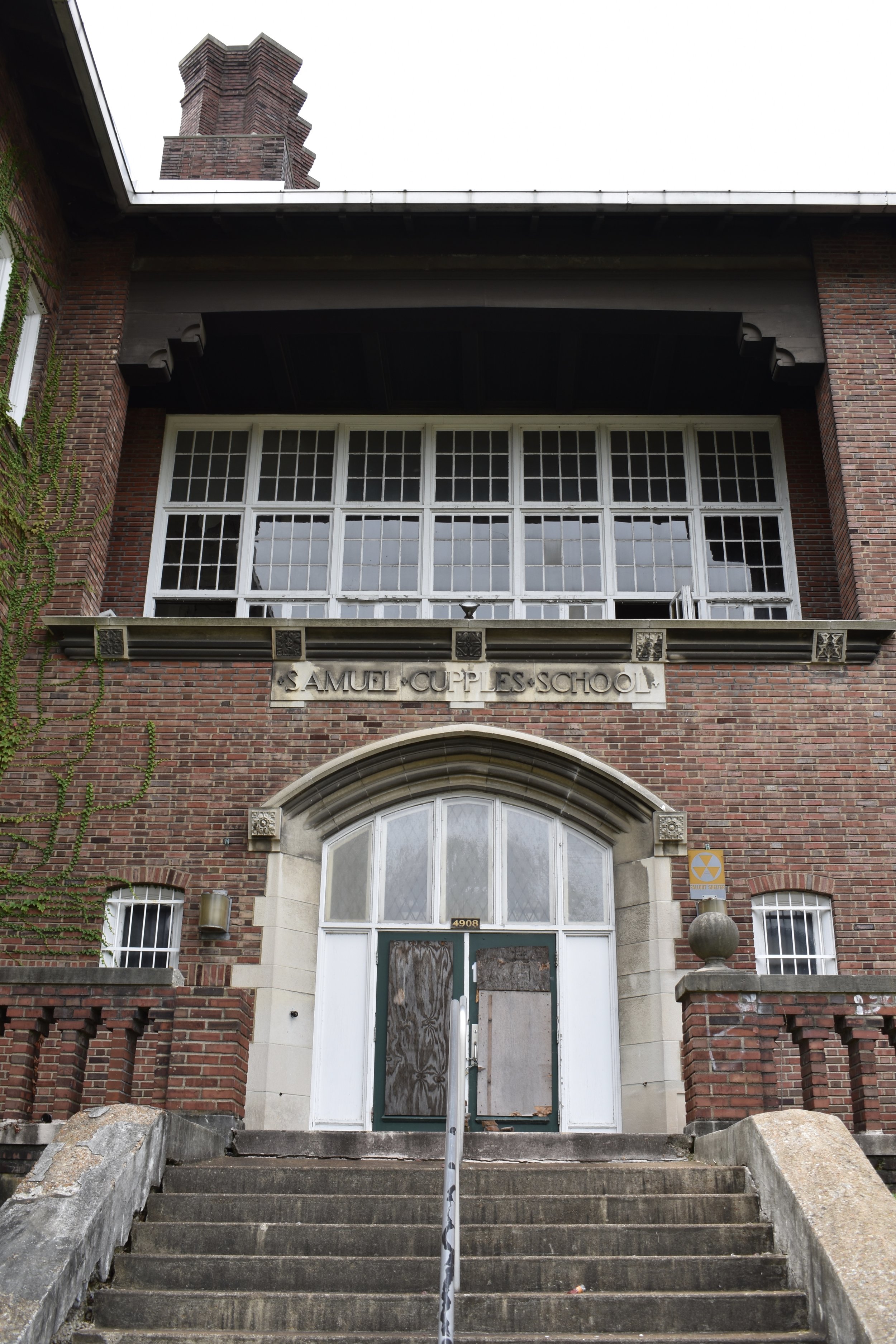

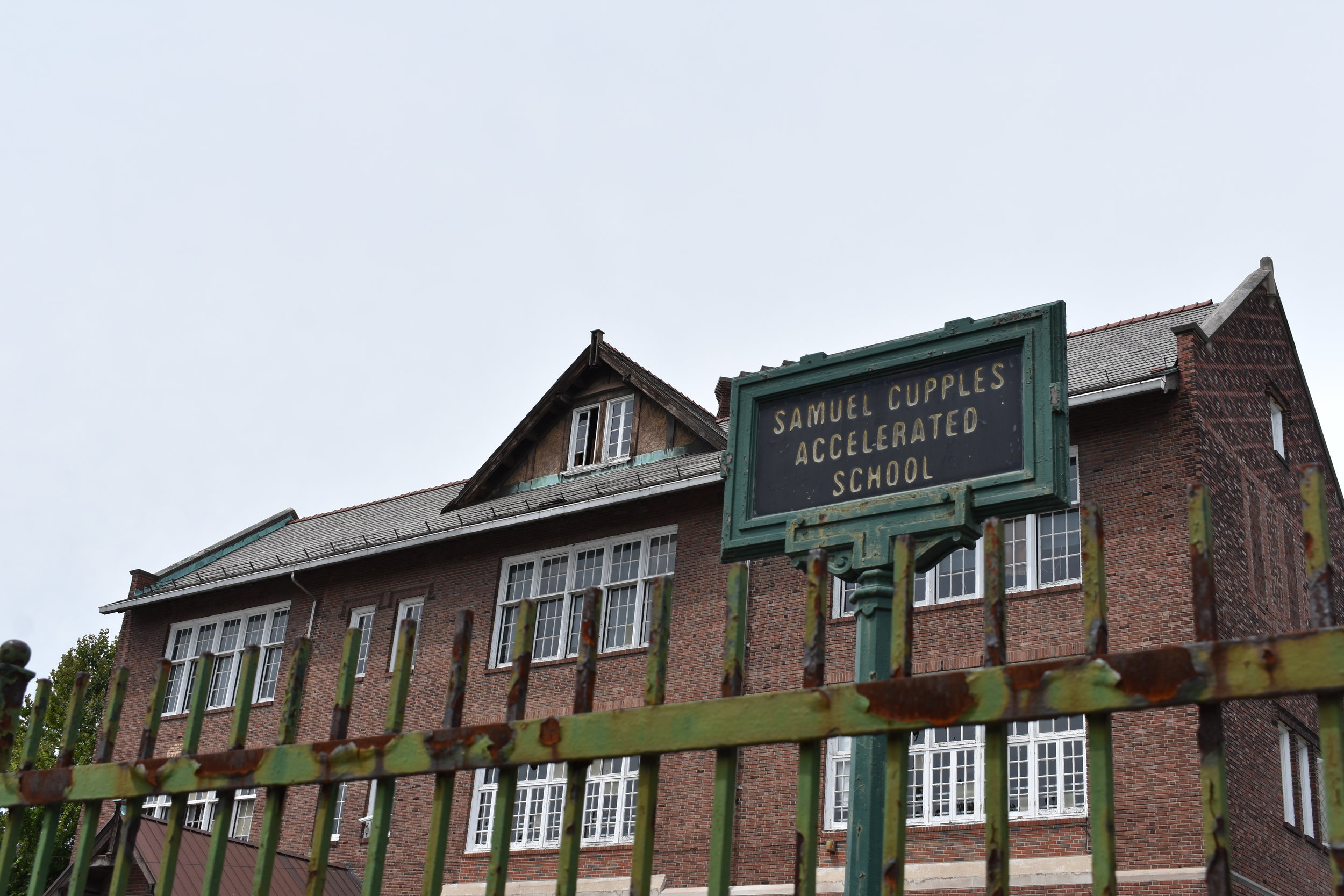
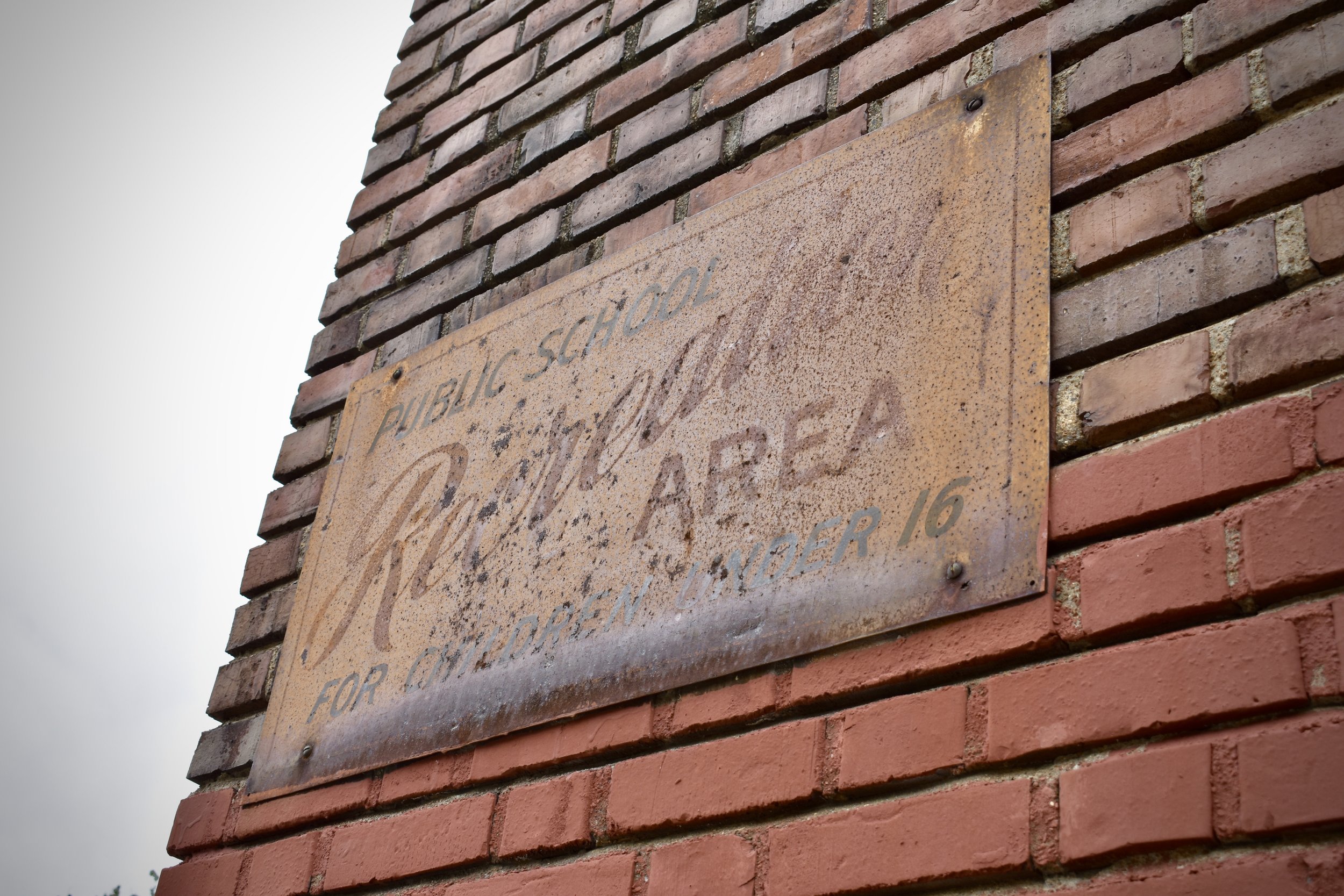
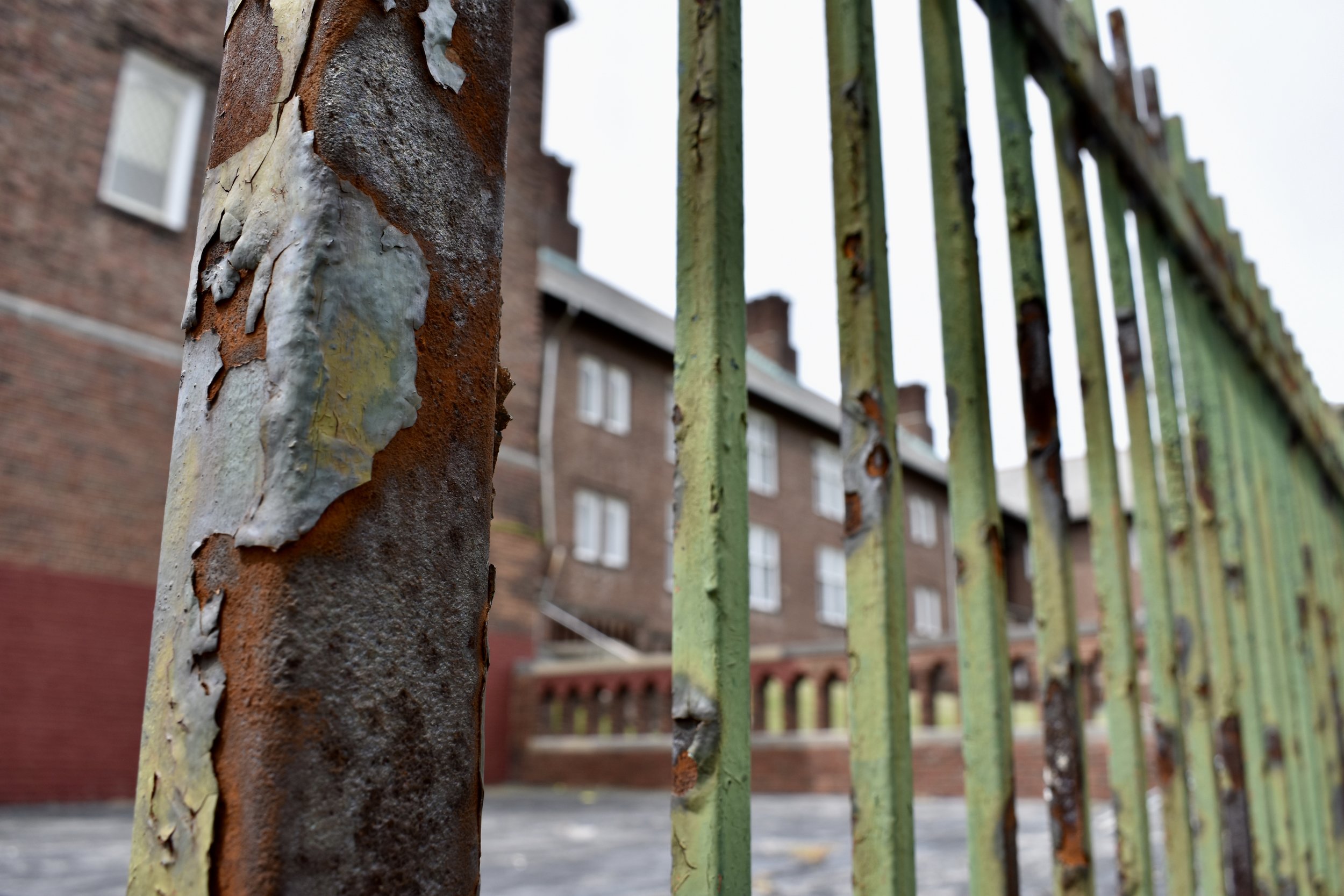
#7 Scullin School - Penrose Neighborhood
Ah, another classic, this one from 1928, named after John Scullin, founder of Scullin Steel Company. It is eligible for Historic Tax Credits and located right off I-70, a great place to live and a pretty stable section of the neighborhood.
Photo Source - Missouri Historical Society (ca. 1928)
I’m embarrassed to say, I can’t immediately come up with who designed this one, so it’ll take some looking up. It sure looks like an Ittner, but I can’t confirm that.
I have to say, this one should sell due to location and proximity to I-70. There are two flanking mid-Century out buildings that would be great multi-use spaces for living. I see an open air bingo parlor, more sane people may see social space, grilling stations, storage or party rooms.
B-4, Bingo!
How lucky are we to have these buildings?
#8 Gundlach School - Wells Goodfellow Neighborhood
How can a school this beautiful be 8th on any list? Well again, we’re blessed, we just need to invest.
This 1931 beauty complete with terrzzo floors is ripe for some love. Not an Ittner/Milligan, rather a George Sanger per Built St. Louis.
Photo Source - Missouri Historical Society
I gotta be honest, the immediate surroundings are sparse. The small home that were there were small, working-class homes. Think sticks not bricks in Three Little Piggies parlance. See what I mean from this photo at the laying of the cornerstone of Gundlach:
Photo credit: Missouri Historical Society (ca. 1930)
You’ll see vacant fields in these parts today. Those homes, while still visible in the stable South City neighborhoods are not long for this city, especially in this part of the city. Sad, but true.
The building is more beautiful than countless American cities can even fathom. Here it sits abandoned and forgotten. In other cities, it would likely be a treasured landmark. Let’s do this.
#9 Hempstead - Hamilton Heights Neighborhood
This is Ittners’ most endangered as we stand today. Trespassers, lighting strikes, fires, lack of investment and action in Hamilton Heights, this one is on the ropes. It is gorgeous.
Photo Source - Missouri Historical Society (ca. 1910)
Things look rough these days, time is of the essence:
Most leaders and people in the neighborhood want it demo'd. It’s not looking good. We placed it at #9 because I fear we won’t see this one for long. A plan came about in 2017 to destroy the building for senior housing (if you use the current site plans as any indicator, this would’ve been straight outta the suburbs). The Cultural Resources Office recommended it be torn down, the Preservation Board initially approved it pending financing/building permit being secured (source) and later reversed the decision in 2017 denying demo for now. The Alderman Jeffrey Boyd wants it gone, per a St. Louis Post-Dispatch article in 2017.
It’ll take creative leadership, will and tremendous investment for this not to be wiped from our story.
#10 Walnut Park School - Walnut Park East Neighborhood
This Walnut Park School is listed on the National Register of Historic Places, another Ittner E-Shaped, open plan from 1909 starts at only $340,000. It is in another great location, quite stable and worthy of investment.
Photo Source - Missouri Historical Society (ca. 1949)
I could easily see this one redeveloped.
Imagine this preserved for another few generations
#11 Eliot School - Fairground Park Neighborhood
Another Ittner, one of his original designs. It was named for William Greenleaf Eliot, a founder of Washington University.
The second oldest on the list, circa 1898. Eliot is one of three 19th Century schools for sale, Euclid and Simmons are the others. This is one of Ittner’s original designs (H-shaped vs. E-shaped) and his first school in STL with indoor plumbing, replacing outhouses. It is listed on the National Register of Historic Places. It was named for William Greenleaf Eliot, founder of Wash U. It is described as Classical Revival.
Photo Source: Missouri Historical Society (ca. 1898)
#12 Simmons School - The Ville Neighborhood
This one feels less “in the neighborhood” and a bit on the outs along St. Louis Avenue. That is the only reason it’s low on the list. Built in 1899, it’s one of three 19th Century schools still remaining.
Simmons School named, previously named Simmons Colored School, for Baptist clergyman and educator William Johnson Simmons (1849-1890), is another on the National Register of Historic Places, who listed it as a Classical Revival style school by Ittner. Per the DNR application: “The school has experienced a number of alterations and additions, including two designed by Ittner himself. In 1901, Ittner designed a third story for the original 1898 construction, and, in 1911, he added a second cruciform-plan addition to the west of the original building. Additions in 1930 and 1965 have been less sympathetic but have had little effect on loner's original designs.”
These schools were built to be spacious and wide-open learning spaces.
Photo source: Missouri Historical Society (ca. 1931)
#13 Marshall School - the Ville Neighborhood
Marshall, named after Chief Justice of the Supreme Court John Marshall (1755-1835), is another Ittner classic, also for sale is the 1953 overflow building. This one is on the National Register of Historic Places who in the application was described as Classical Revival style, is the first E-shaped open design. A cupola tops the school, which has a terra cotta cornice under wide overhanging eaves and exposed, shaped rafter tails.
Photo Source - Missouri Historical Society (ca. 1936)
#14 Webster School - Old North St. Louis Neighborhood
Named for statesman and orator Daniel Webster (1782-1852), this 1908 school, highly visible from I-70 just north of Downtown has what appears to be a mid-Century addition to the front, covering up the original entryway. Too bad. For that reason, we listed it lower on the list.
#15 Ashland Branch - Penrose Neighborhood
Ashland School is one of two post WWII schools on the list. It was named after the City of Ashland, Kentucky, home of Henry Clay, former US Congressman, Secretary of State and Speaker of the House. This guy is not one of my favorite Americans, he was a key figure in the Missouri Compromise and an advocate for the “extermination” of Native Americans.
This school reminds me of Hampton Village even though it is much newer, built in 1964.
This one is in a pretty stable neighborhood, so I think it has time and would be a viable project. Trespassers have not destroyed it or over defaced it as of yet. I’m really not a fan of this kind of architecture or this period, but hey, it’s a solid building and would be a great investment in the Penrose Neighborhood. The price tag of a mere $104,000 makes this a steal. I’m hopeful for its future, therefore, I placed it lower on the list simply because I don’t feel it’s as significant architecturally nor in severe danger of the landfill.
#16 Stowe School - Wells Goodfellow Neighborhood
This one would be great in the suburbs, but always stuck out like a sore thumb in St. Louis’ Wells-Goodfellow Neighborhood. It’s sobering to think the lowest ranked one on our list is still so damn cool on its own and is a mod masterpiece. Just a bad location and surrounded by a sea of surface parking a la the suburban way that was staking its claim by 1967 when this was built.
The pinched narrow windows, lava rock retaining walls and elevated school wings with under-building entry ways. The place is cool, but so out of place in this neighborhood.
Stowe Junior High is the only other post-WWII building on the list. It was named after Harriet Beecher Stowe (1811-1896), author of the anti-slavery novel Uncle Tom's Cabin. Vandals have done lots of damage to this one. Just last year, three knuckle heads hooded a chain to their truck and tore out a section of windows from the second floor (source). The neighborhood is pretty rough, it would be dishonest not to say so.
This one’s listing price seems high due to the surroundings. I don’t look at this building and think classic St. Louis. I look at it as a bold design for a time when St. Louis was still confident and stable and growing. The next two decades would be brutal. White flight first, now black flight. Just flight. Mid-Century never really had a chance to take off here in North City like it did in the Central West End and the suburbs.
So there you have it, a fun day of driving all over St. Louis with Shannon by my side with the camera and her perspective on North City in my ear. We love this city so much.
One thing you may notice from the above photos, all are open to the elements/trespassers/squatters.
Most of the For Sale signs are knocked over or vandalized or missing altogether.
I asked Walker Gaffney, the SLPS Director of Real Estate, if there were any plans in place to stabilize these schools. The response: “SLPS is obligated to devote its resources to educating children in its open schools. Unfortunately there is no budget for stabilizing closed schools.“
Unfortunate indeed, but understandable.






